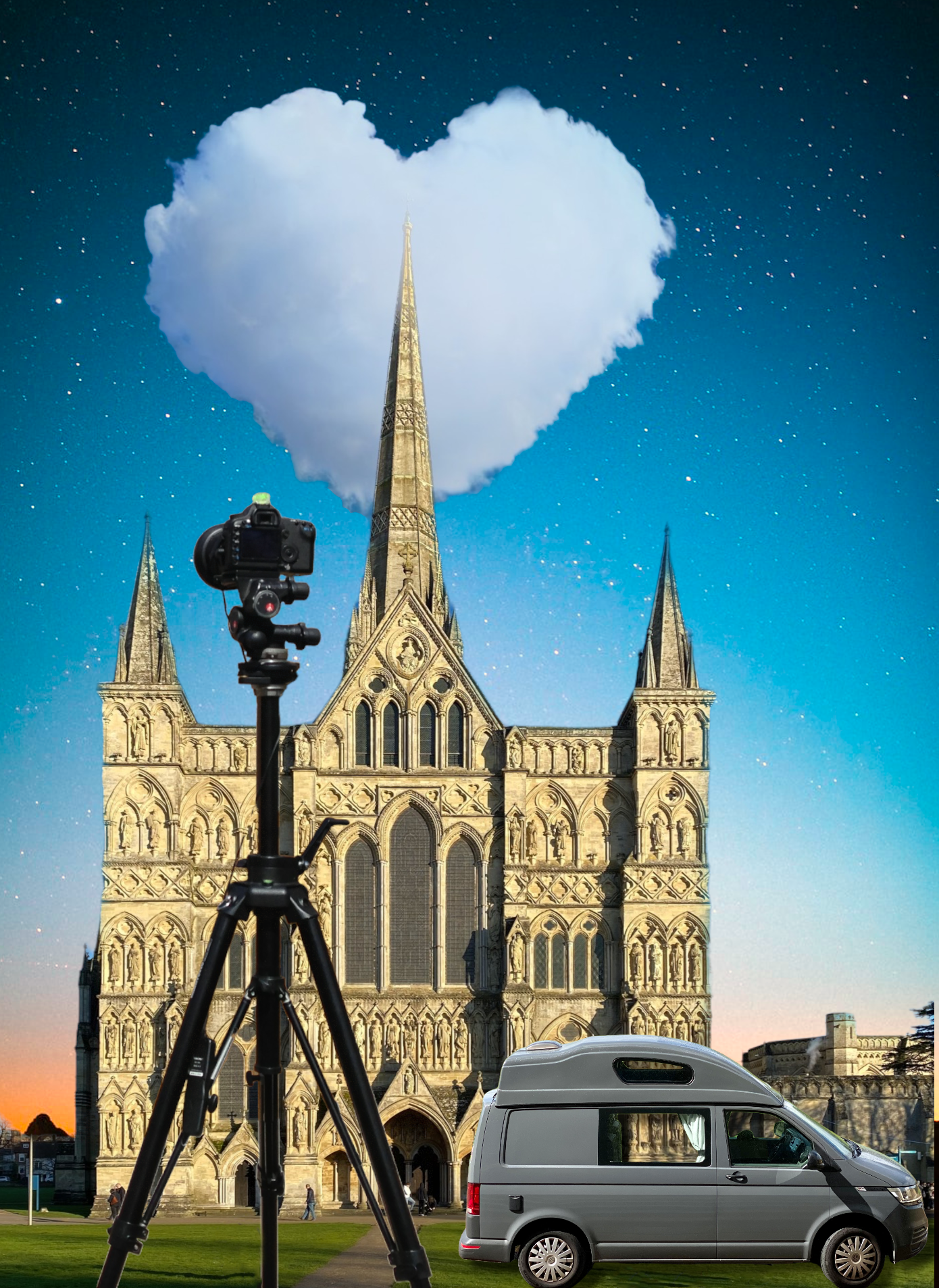
Welcome, and thanks for coming along!
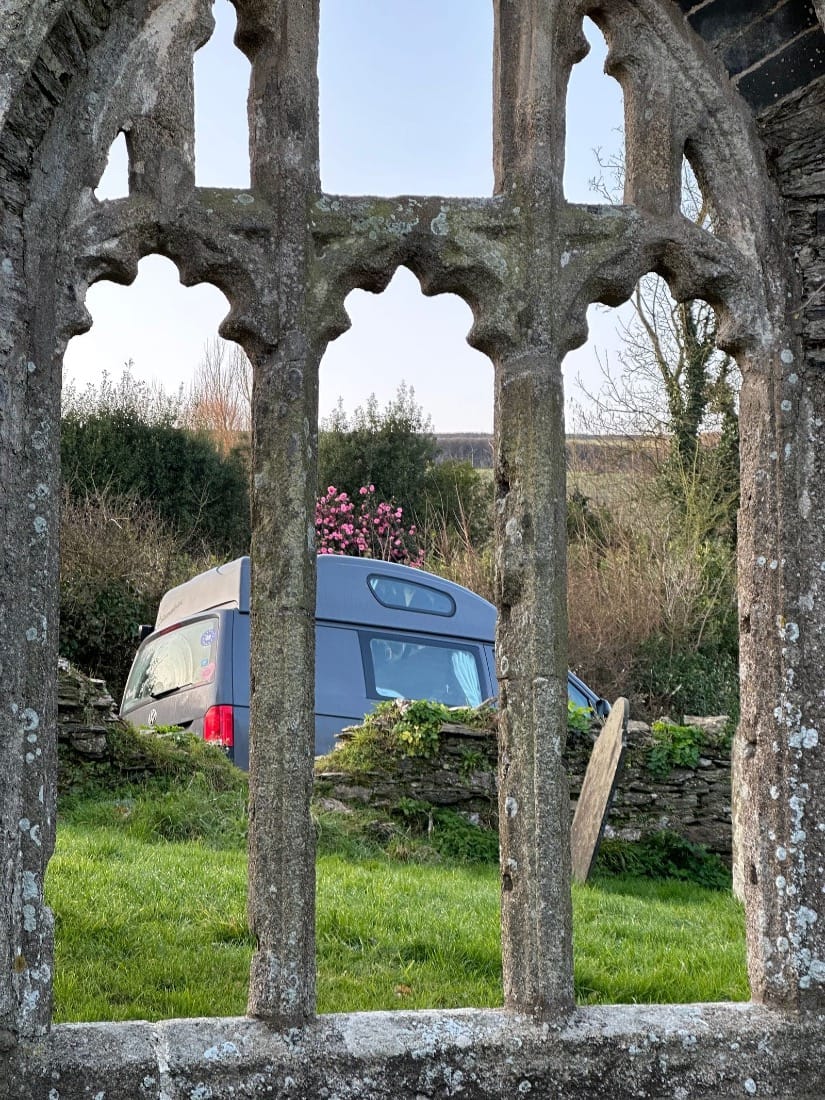
I'm an architectural photographer. I travel around Britain interacting with special places. I work from my camper van called Woody and I share my experiences via this digest.
⚡️ View the latest digest and the full archive here.
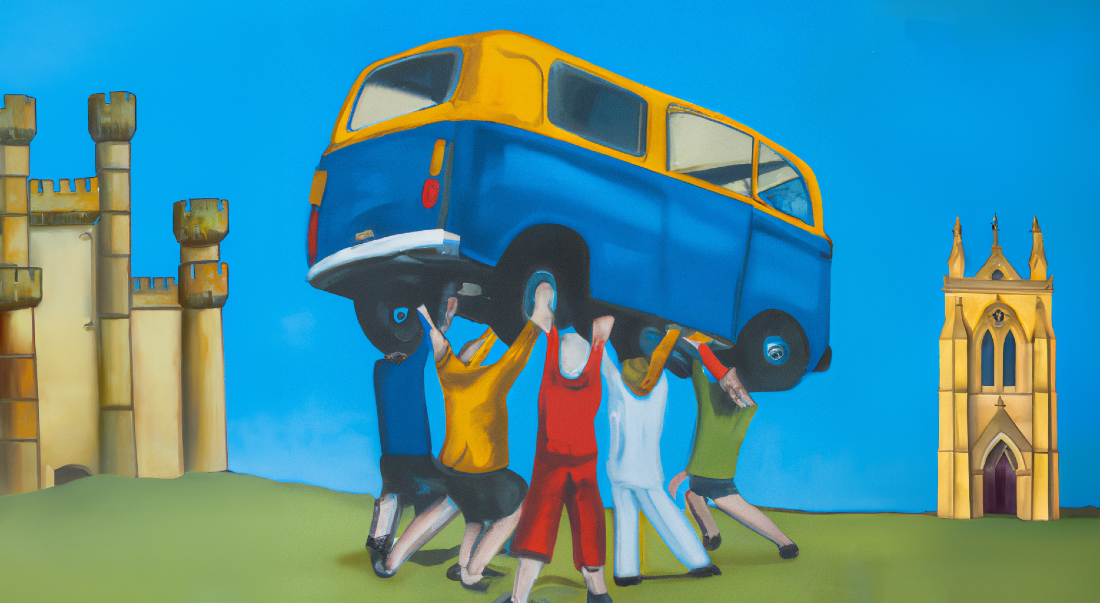
This Digest is free to subscribers and is powered by 108 Members
12 more members will enable another free photo shoot
Member Powered Photography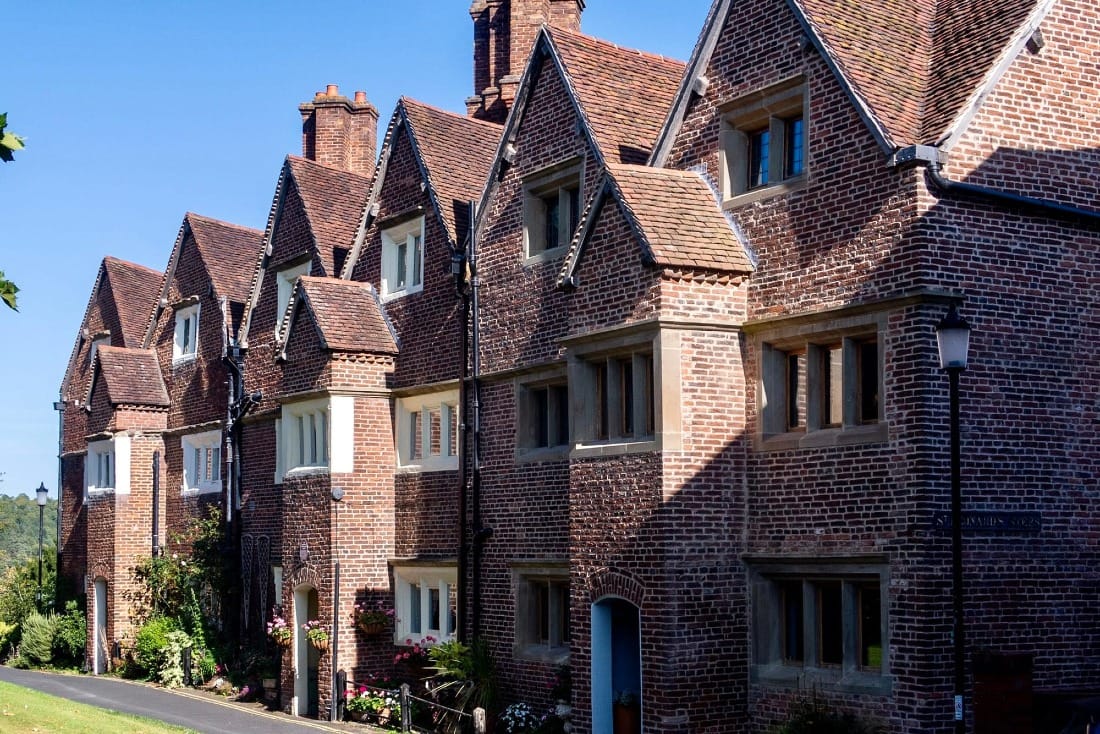
One for the brickofiles: the early C17th Old Grammar School house, Bridgnorth Shropshire.
I often call there,
There are no poems in it
for me. But as a gesture
of independence of the speeding
traffic I am a part
of, I stop the car,
turn down the narrow path
to the river, and enter
the church with its clear reflection
beside it.
(Excerpt from Llananno by R S Thomas).
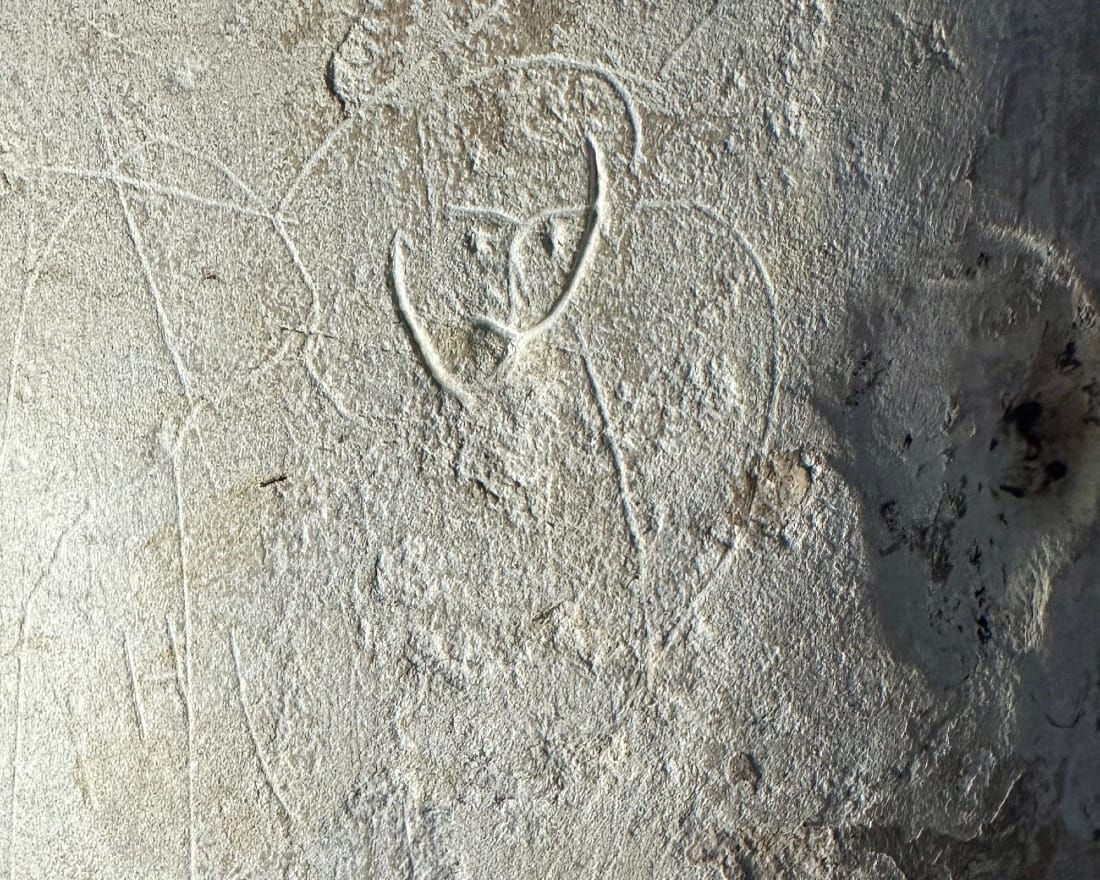
Pie and Pudding People.
I’m back over in Ashwell, lodging in the van, and I’ve made a huge mistake. Last night was wet and warm and I fell asleep (with a book on my chest and my glasses on) under an opportune blanket that I took from the chair opposite.
At first light, I wake with a shudder - it’s freezing cold. I fumble for my glasses and find them on the floor beneath Laura Cumming’s Thunderclap.
I brave the cold and switch the heating on - but it barely registers. If heat were light on this new day, it would present itself as a tiny spotlight in the centre of the van.
I feel lonely this morning, I felt lonely last night. On the dark nights the walls of the van close in.
I decide to forego breakfast in the van and seek out warmth and humanity in Ashwell. There is a bakery that opens at 7am and I’m set on being there as it opens. I step out of the tungsten interior of the van into the blue of twilight and walk through the grounds of the campsite. I’m exhaling swags of guilloche.
I head up Lucas Lane and onto High Street. I walk with a cadence that pulls the street up by my side. I pass elbowed joints of timber and pargeted facades. The buildings rise up out of the darkness and then dissipate.
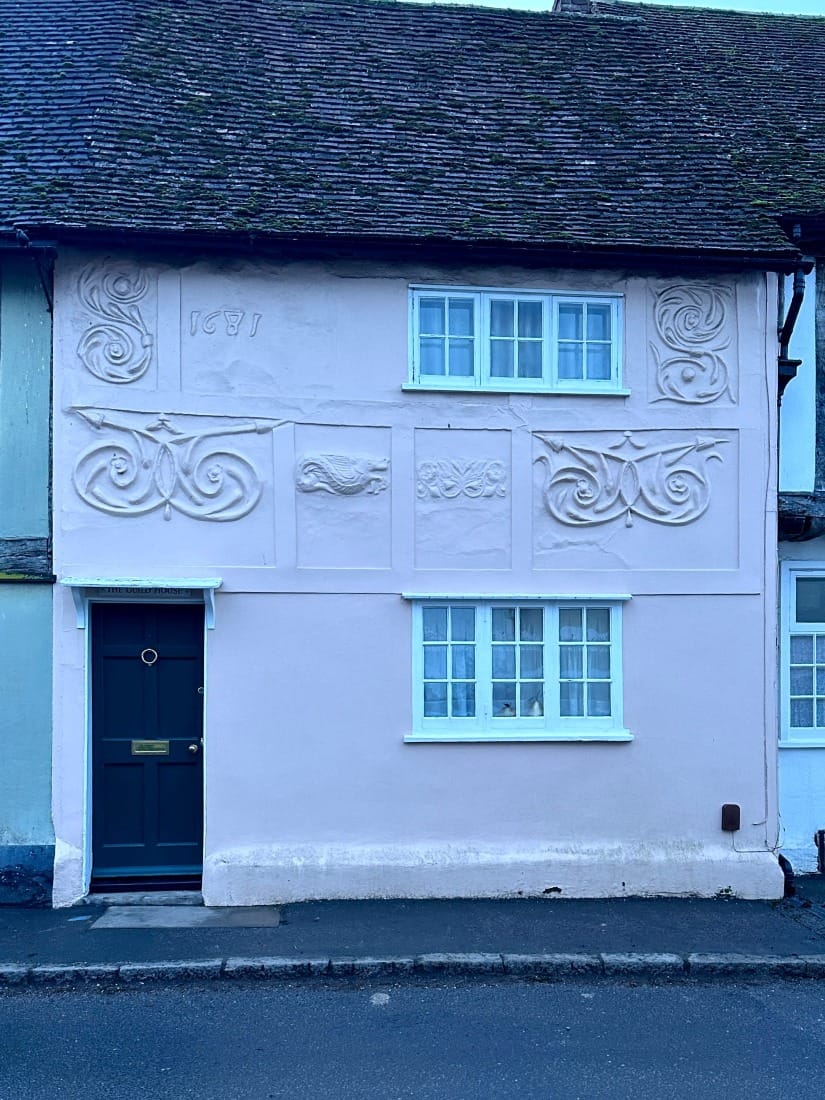
Then I spot the bakery: a warm glow spilling out onto the street. If hope were light on this new day, it would present itself as a tiny spotlight in the centre of my heart. It’s not only nourishment I need but human connection.
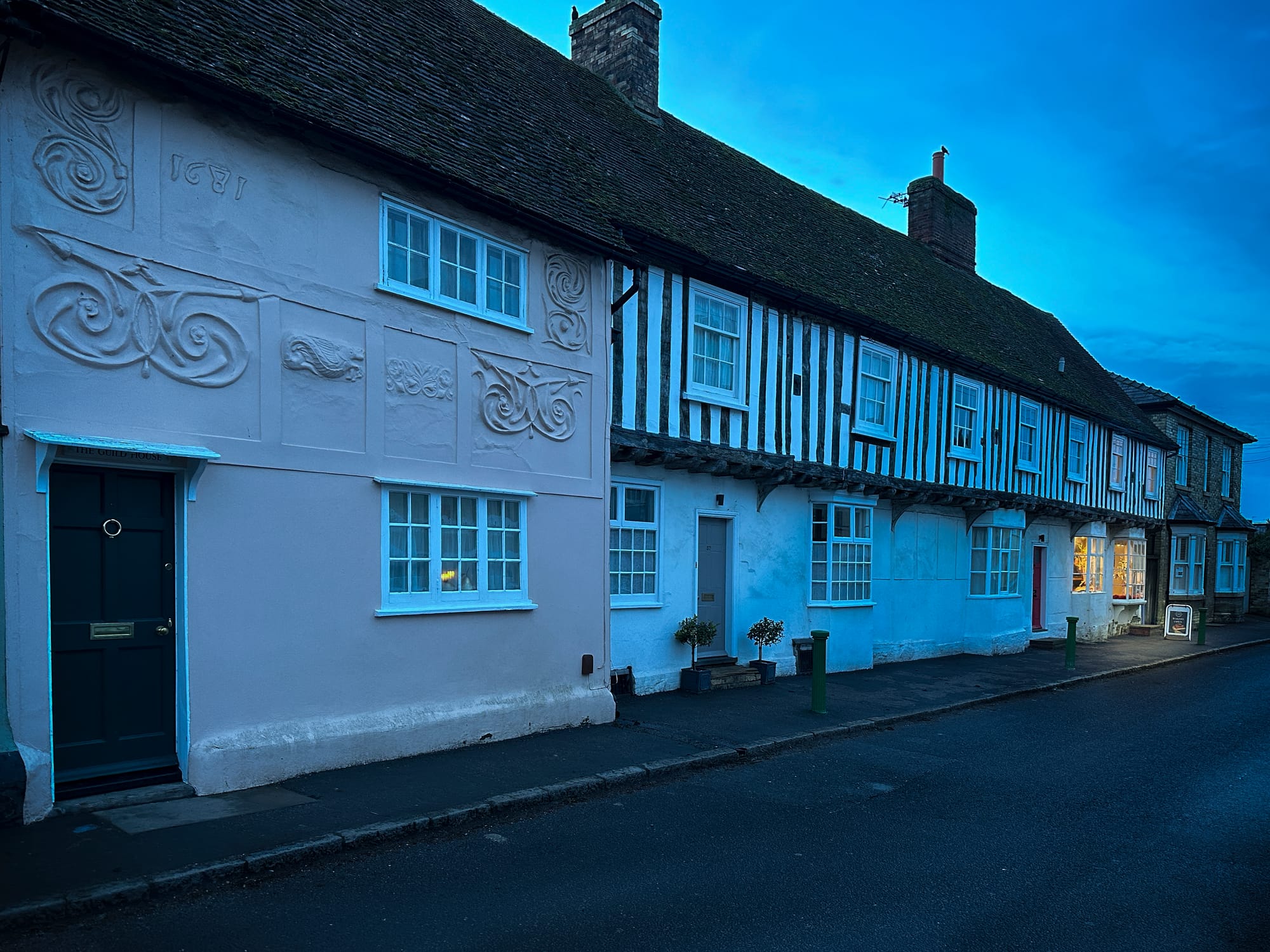
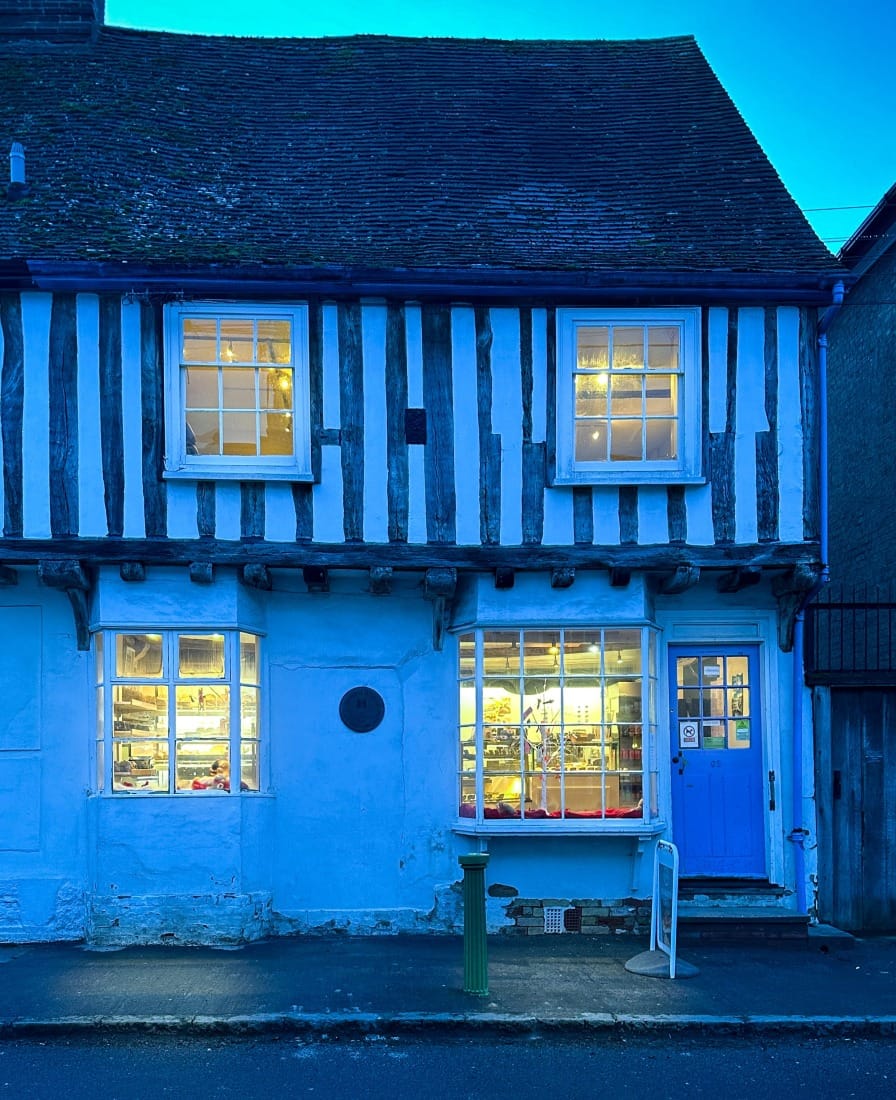
I look through the bakery window and can see movement. The occupants are chatting along whilst busying themselves at their work.
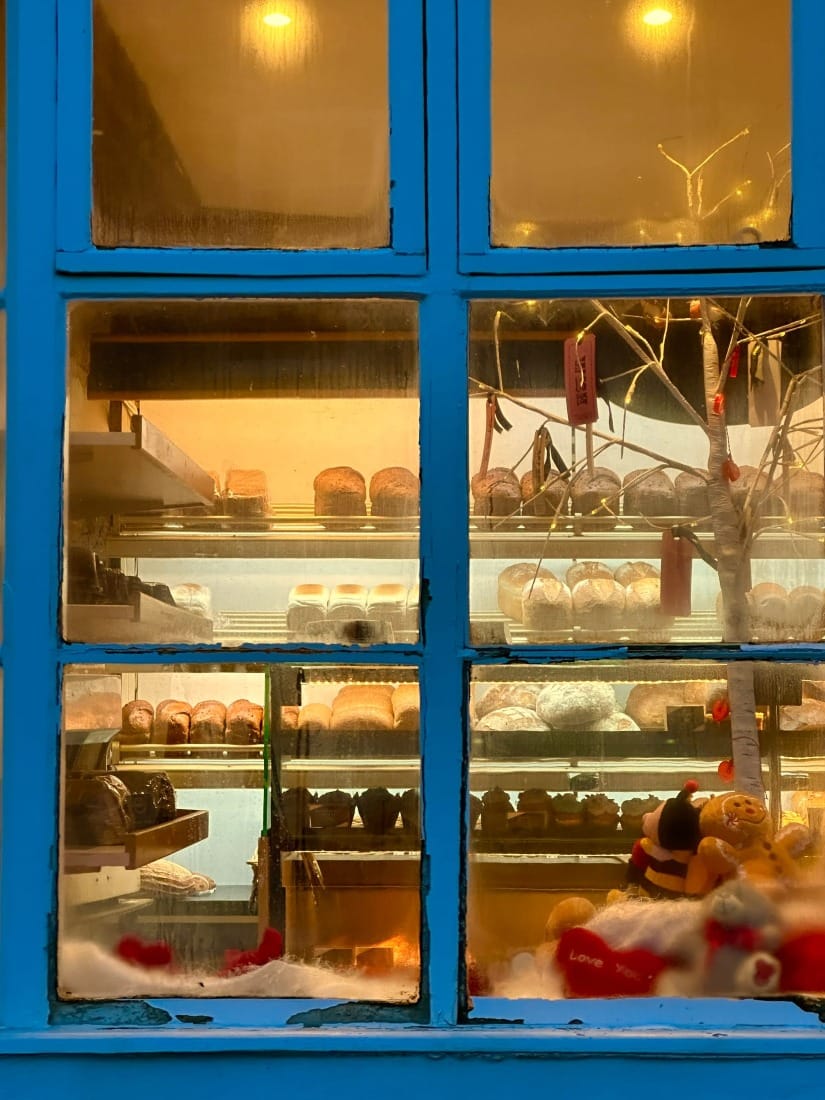
I walk into a warm welcome. We pass the time of day and then I make my order. I don’t really want to leave, so I orchestrate a measured syncopation between the sweet and the savoury and buy more things than I need.

The bakery is more than the sum of its parts: the people, the building, the warmth, the baked goods and the craft. This building is as much a respite as it is a bakery, as much a mental space than physical. Pies and puddings sum up the warm spirit of this place as well as its contents.
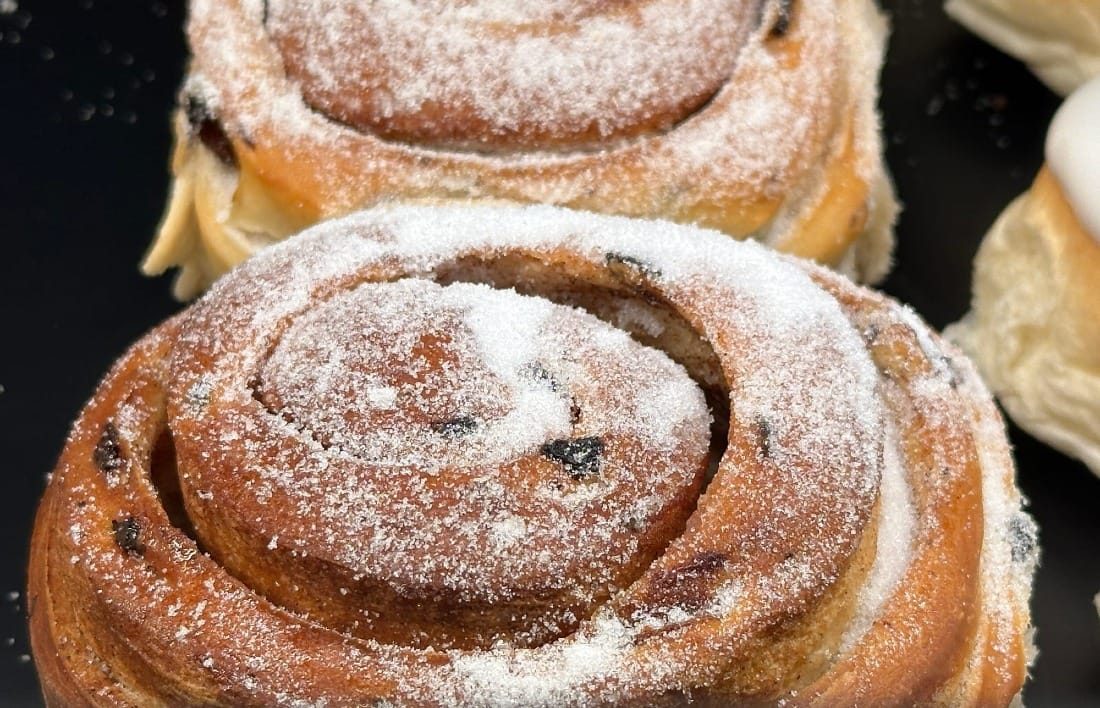
I take my breakfast through the lychgate and into the churchyard.
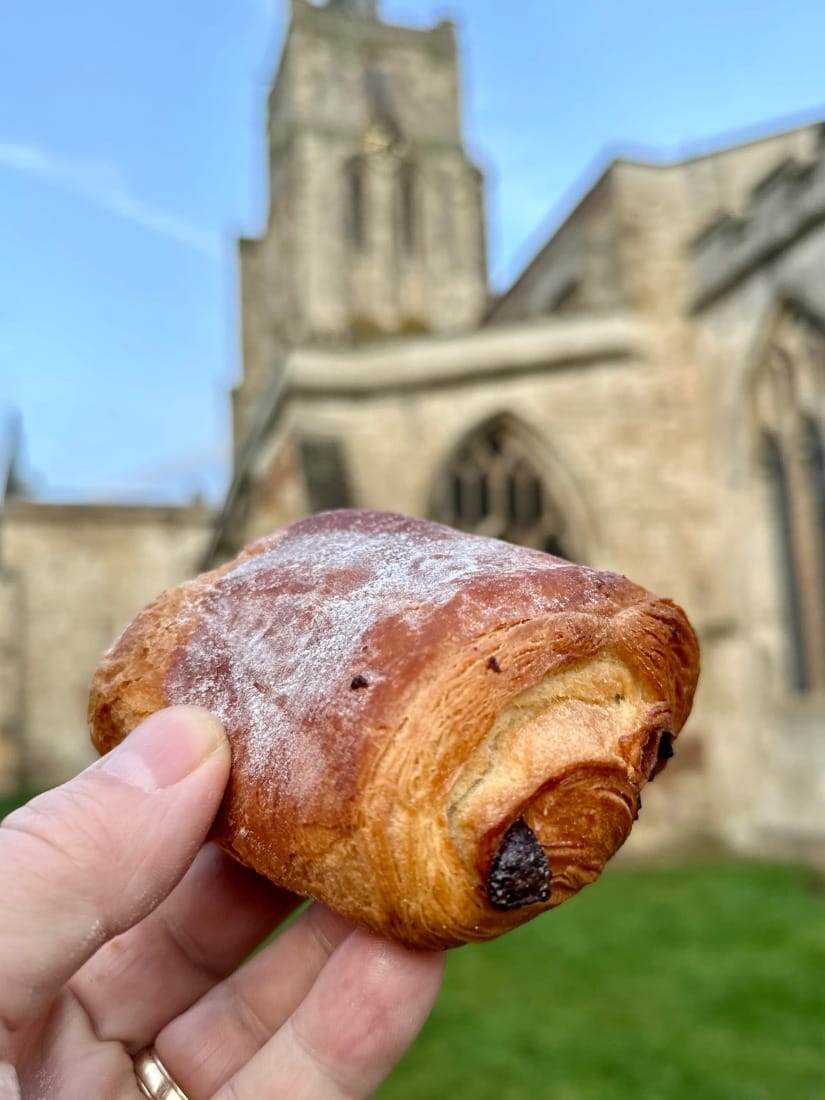
Later, I enter the church of St. Mary looking for more companionship, but it’s empty. The nave is voluminous, cathedral like and I feel small within its embrace, until something catches my eye: deep cut marks upon a column in the arcade. I can see hatchings and symbols and what looks like Gothic script.
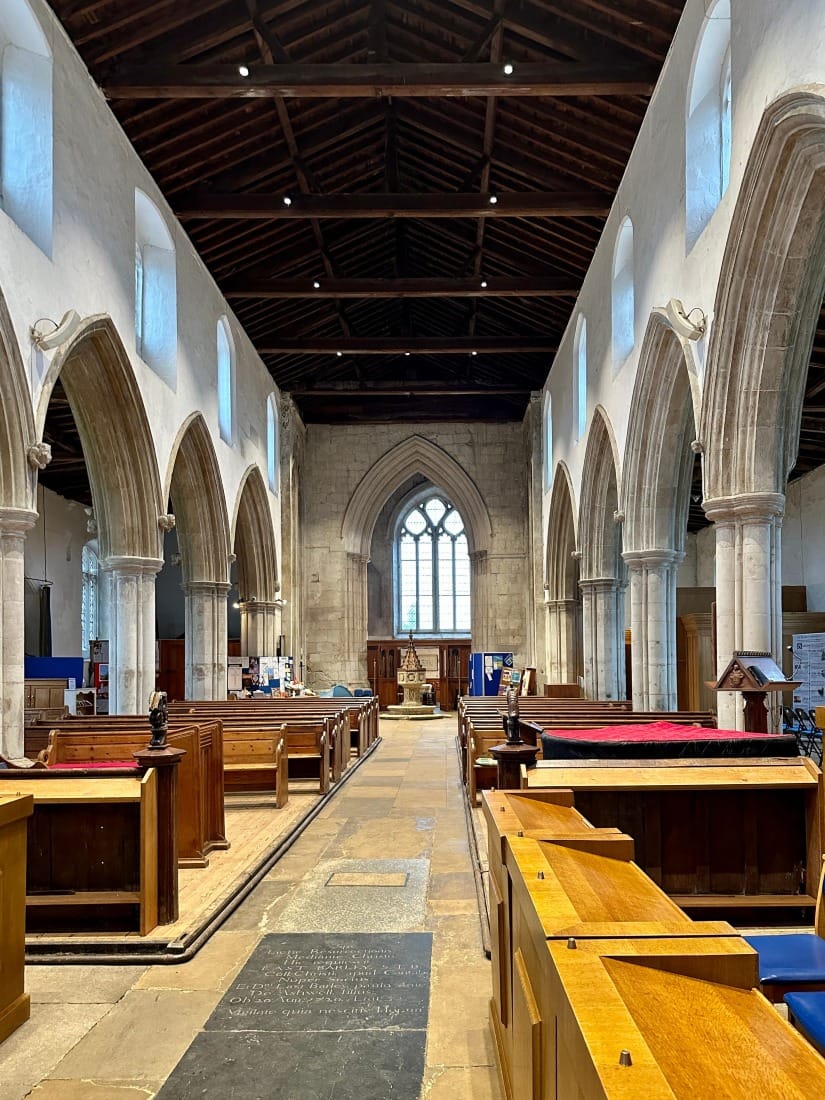
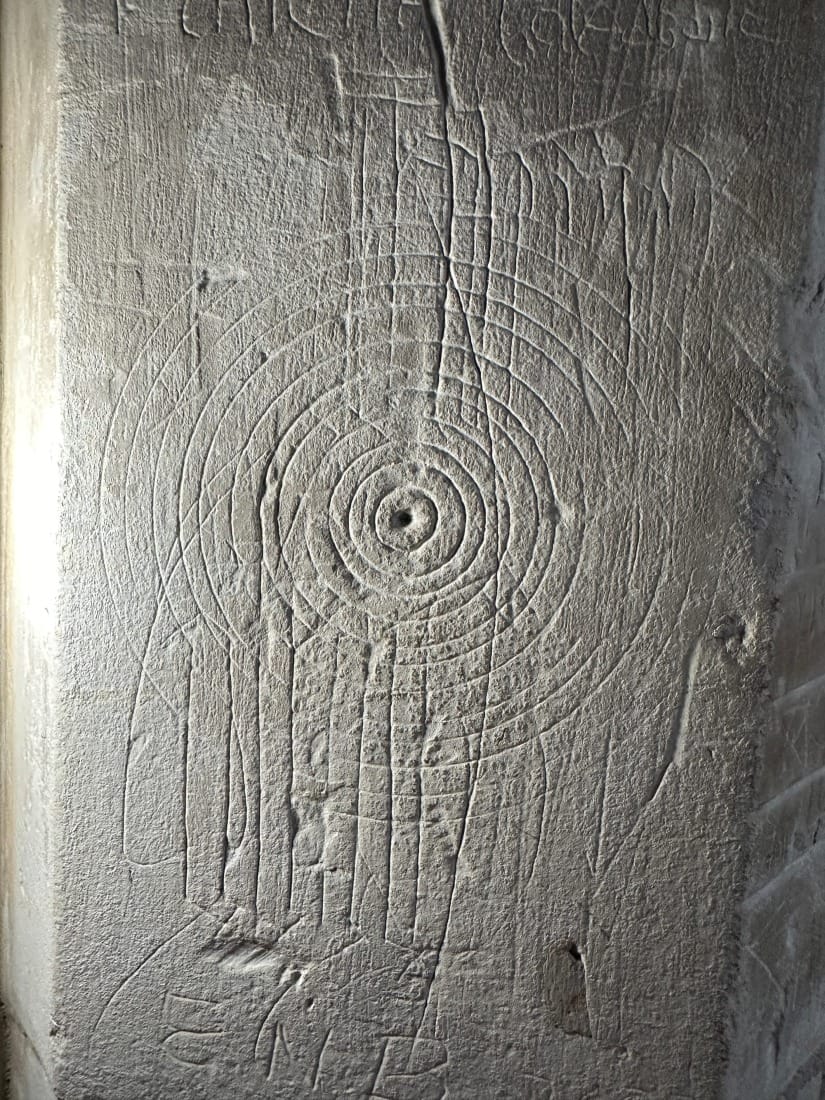
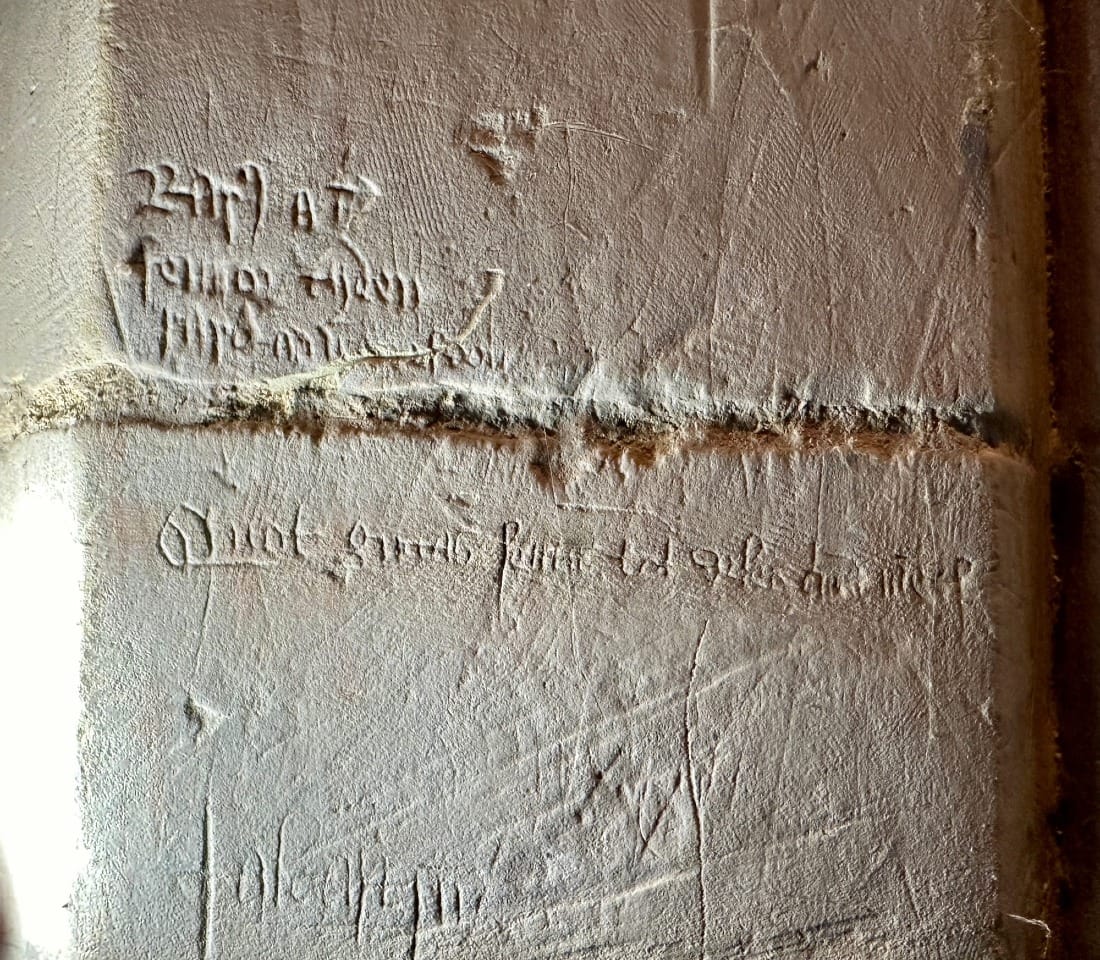
I pick up a pamphlet which takes me into the church tower. I look up at the north wall and suddenly I don’t feel so lonely. It’s full of writing from the people of the past.
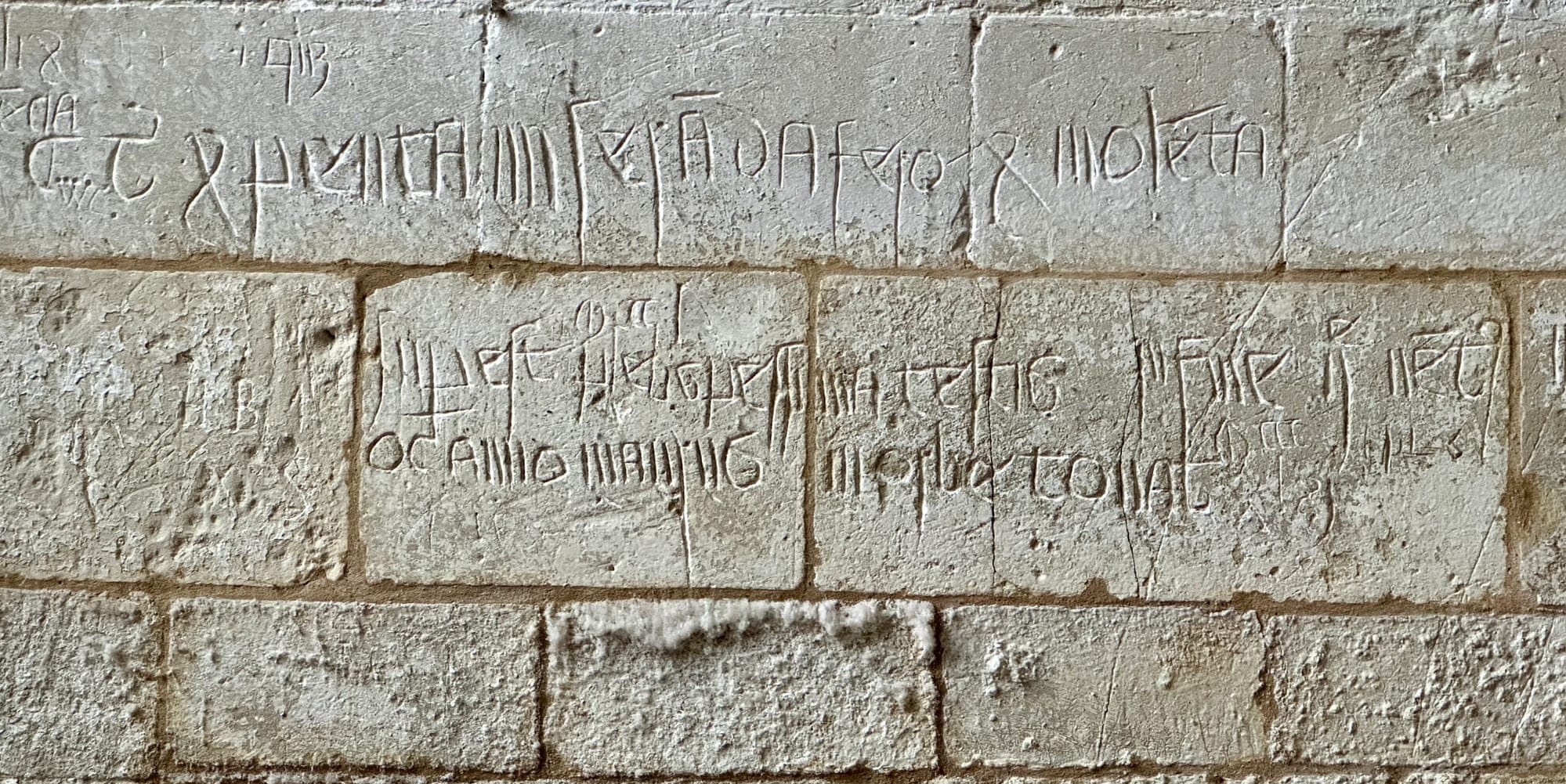
It tells us that people found respite here during the plague:
‘In 1349 there was a plague and (in 13)50’
It speaks of loss:
‘On the first day of June now with these worms he rests.’
And like us, in spite of hardship, it mentions the weather:
‘…a pitiable, fierce violent (plague departed); a wretched populace survives to witness (to the plague) and in the end a mighty wind, Maurus, thunders in this year in the world, 1361’
And then, in a way that is typically human, it takes us from the depths of despair to the sublime: a remarkable depiction of old St. Paul’s Cathedral - the cathedral that existed before the great fire.
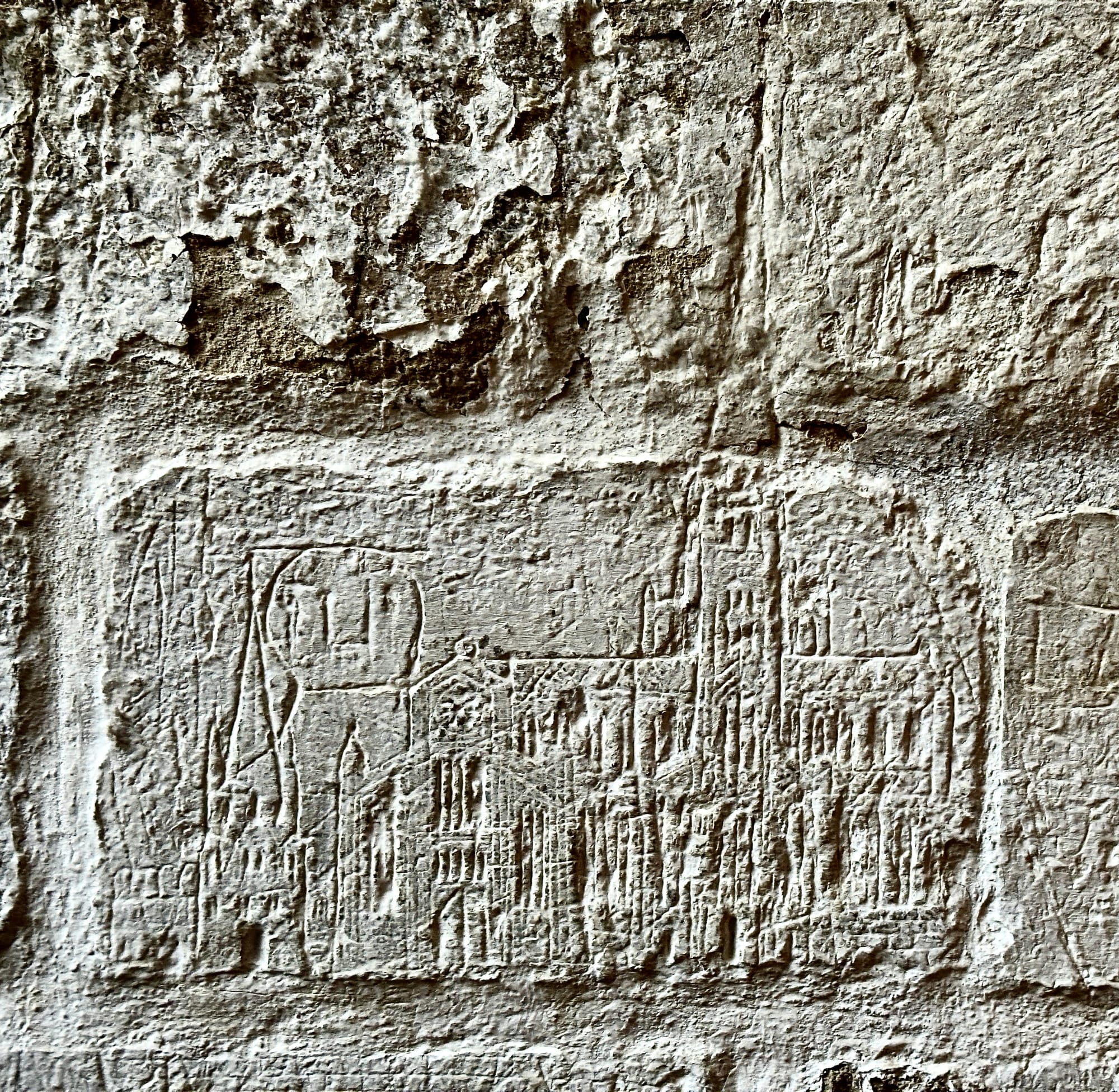
The sketch shows the building in a flattened perspective, including the rose window, tracery, buttresses and roof (and another church with a spire to the left). Dated to the late C14th or early C15th, the artist who made this grew out of the despair that plagued this place and thought to rise above it.
And then, from the sublime to the ridiculous, I come across a faint script beneath some hash marks:
‘..cornua non sunt arto compungente Sputuo..’
When I read the translation in the pamphlet I’m filled with a telling recognition - a spark and a jolt between people separated by millennia. It’s a commentary on the building:
‘These corners are not straight, I spit.'
Later in the morning, I re-visit some C20th graffiti that I photographed several months ago. Although they’re 600 years apart from their predecessors, there’s not a single micron between the hopes and fears of the generations that carved them.
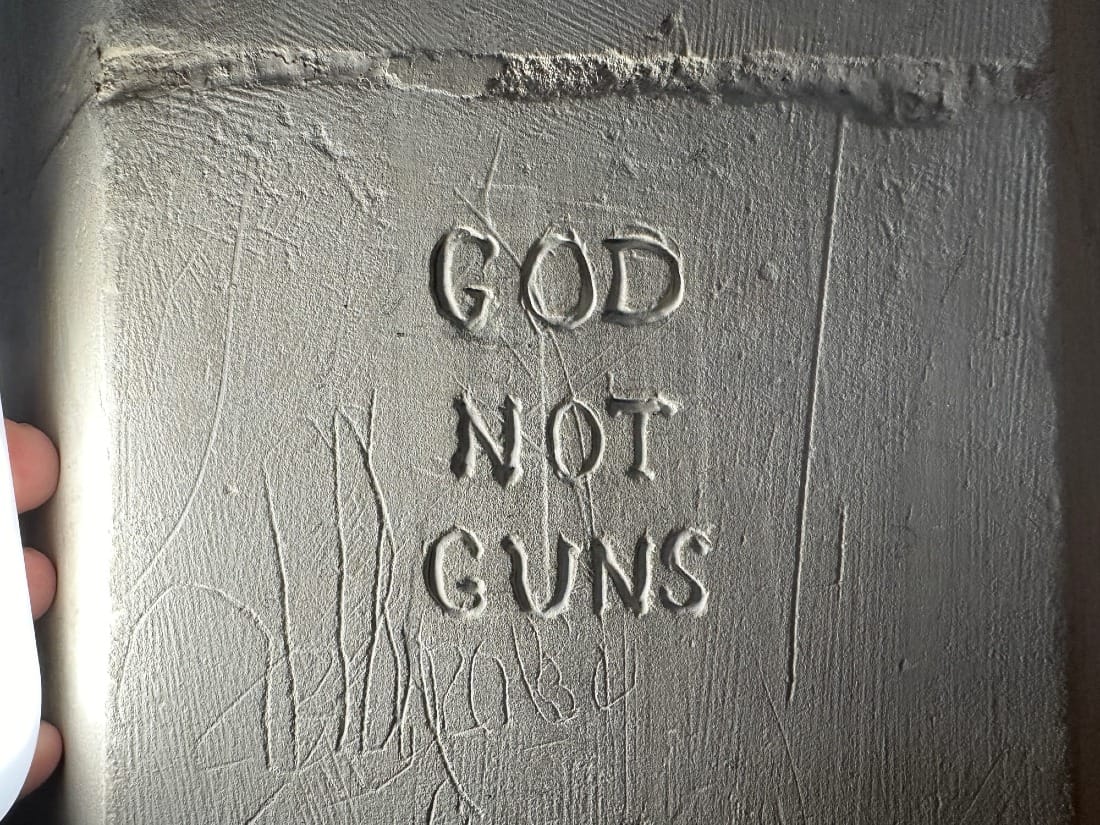
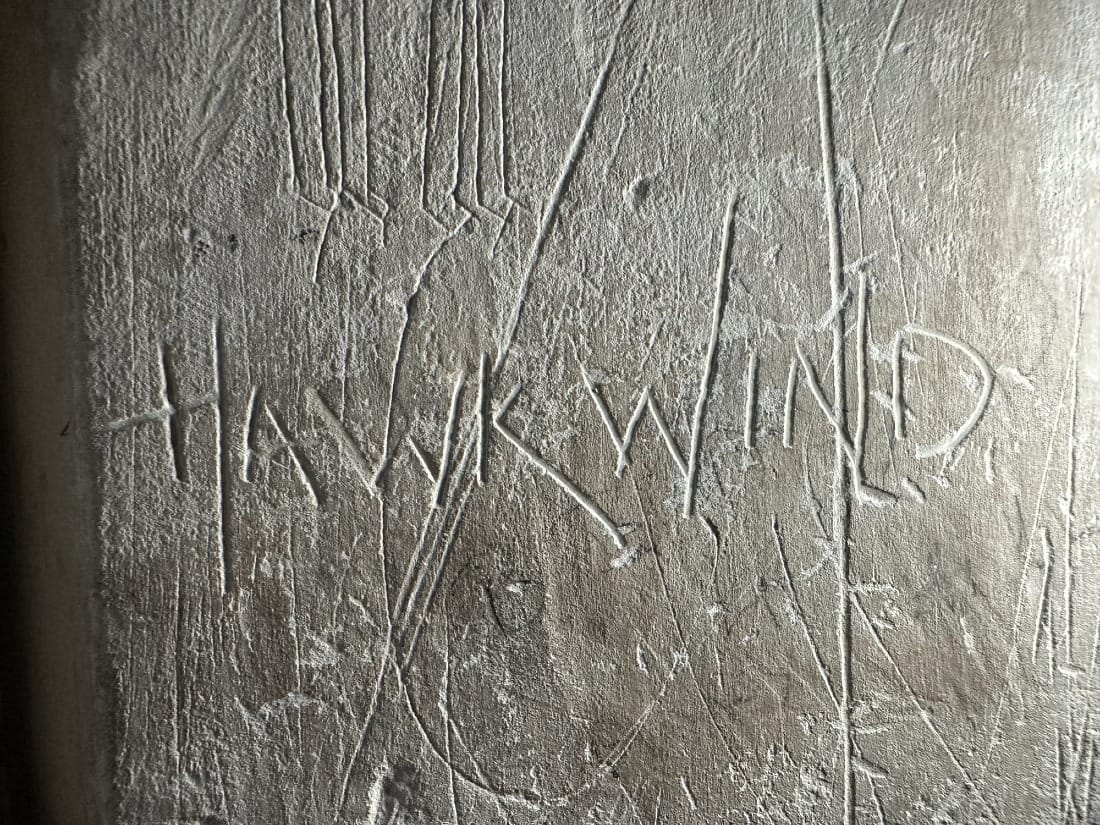
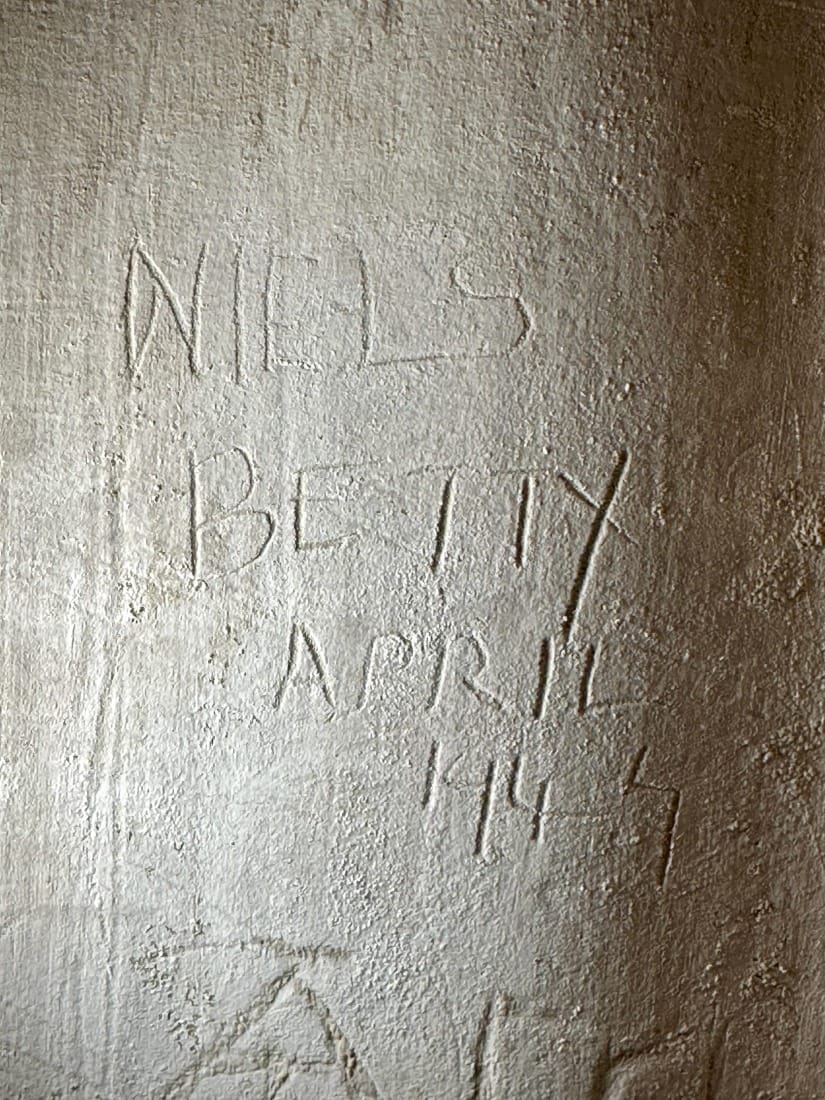
What is utterly fascinating to me is how, with graffiti viewed as a key part of the fabric, these buildings unravel in space and time. Buildings like St. Mary are a vast cognitive reserve, a wondrous and sophisticated cosmos of quivering emotional intelligence. This building is full of tiny signatures, a lexicon that betrays the aggregate human attempt at survival in desperate times. They reveal a voicefulness and a need for connection and recognition.
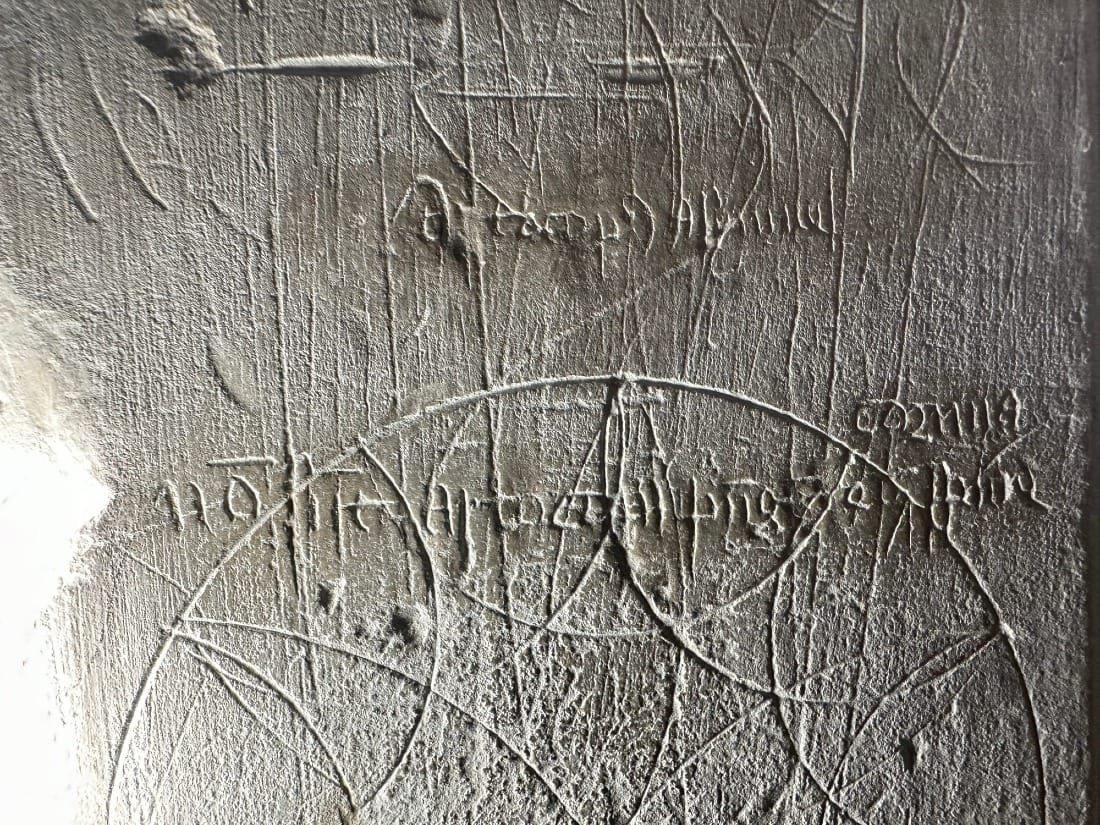
There are whispers in these walls that are telling. The graffiti at St. Mary’s reminds me of how insignificant the present is when compared to the immense framework of time. The present (with all the saints, the sinners, the lovers, the haters, and the tyrants that are jokers and the jokers that are tyrants) is like a tiny island in a vast archipelago full of untapped wisdom.
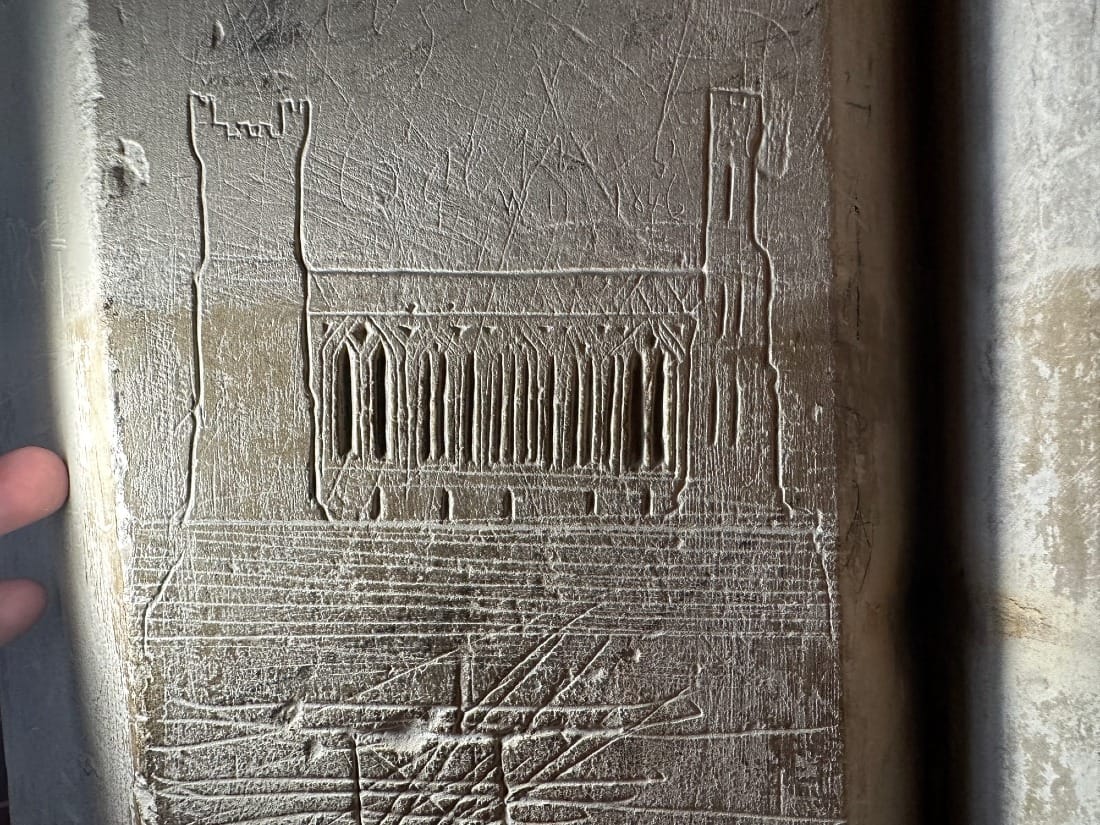
I’m reminded of some words by Apache, Cibecue Horseman: Dudley Patterson:
“Wisdom sits in places. It’s like water that never dries up. You need to drink water to stay alive, don’t you? Well, you also need to drink from places. You must remember everything about them. You must learn their names. You must remember what happened at them long ago.” *
The answer to our present woes is out there, writ large upon the places that our forebears left behind. It tells of the things I found in Ashwell bakery: community, coherence and connection.
We must cherish and protect these places as if our lives were etched upon it.
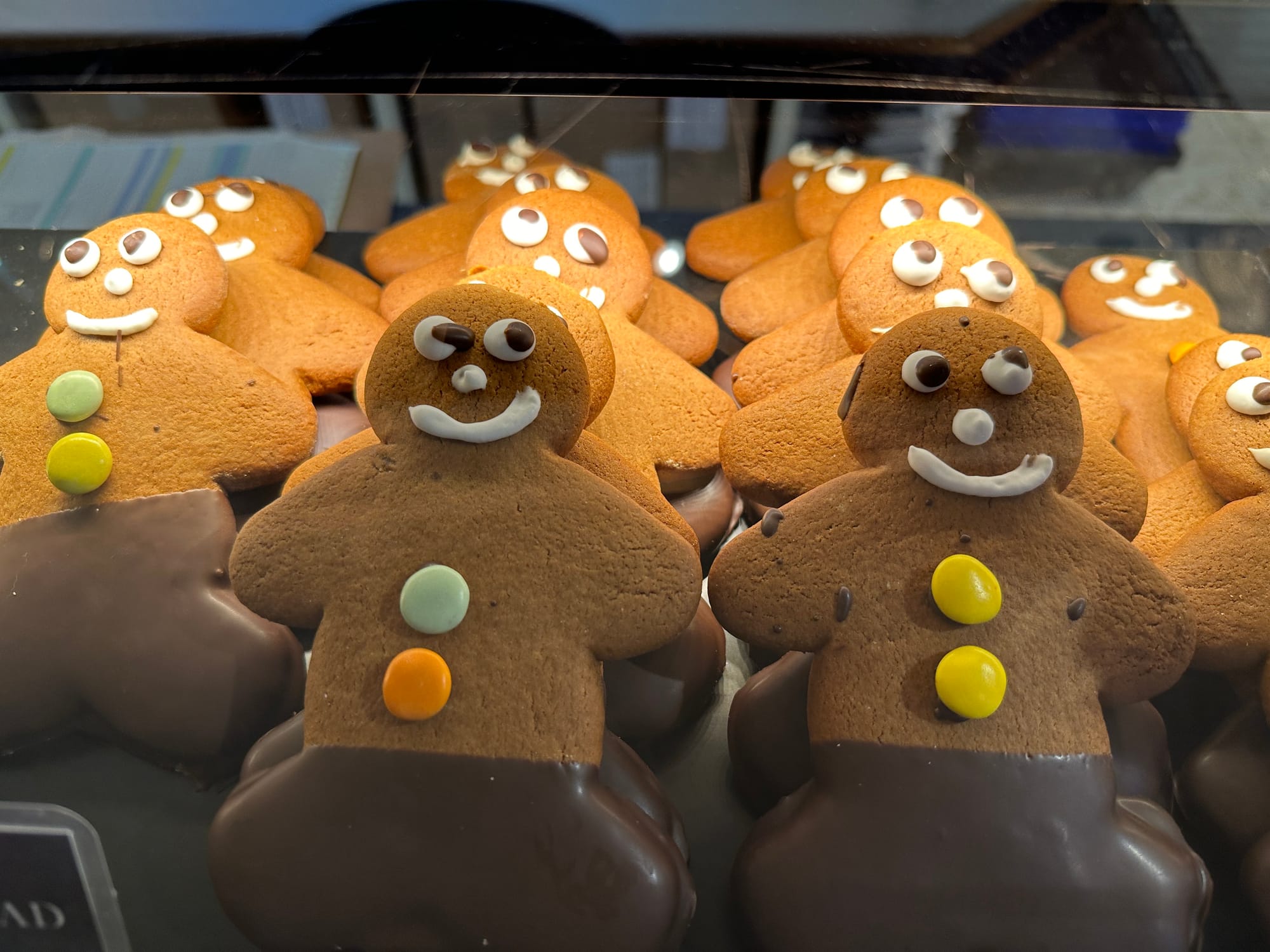
*Quotation is taken from Wisdom Sits In Places: Landscape and Language among the Western Apache by Keith H. Basso, 1996, University of New Mexico Press.
✨Members can view a new Comperandum on Historic Graffiti in Buildings with all my images of the graffiti at Ashwell here:
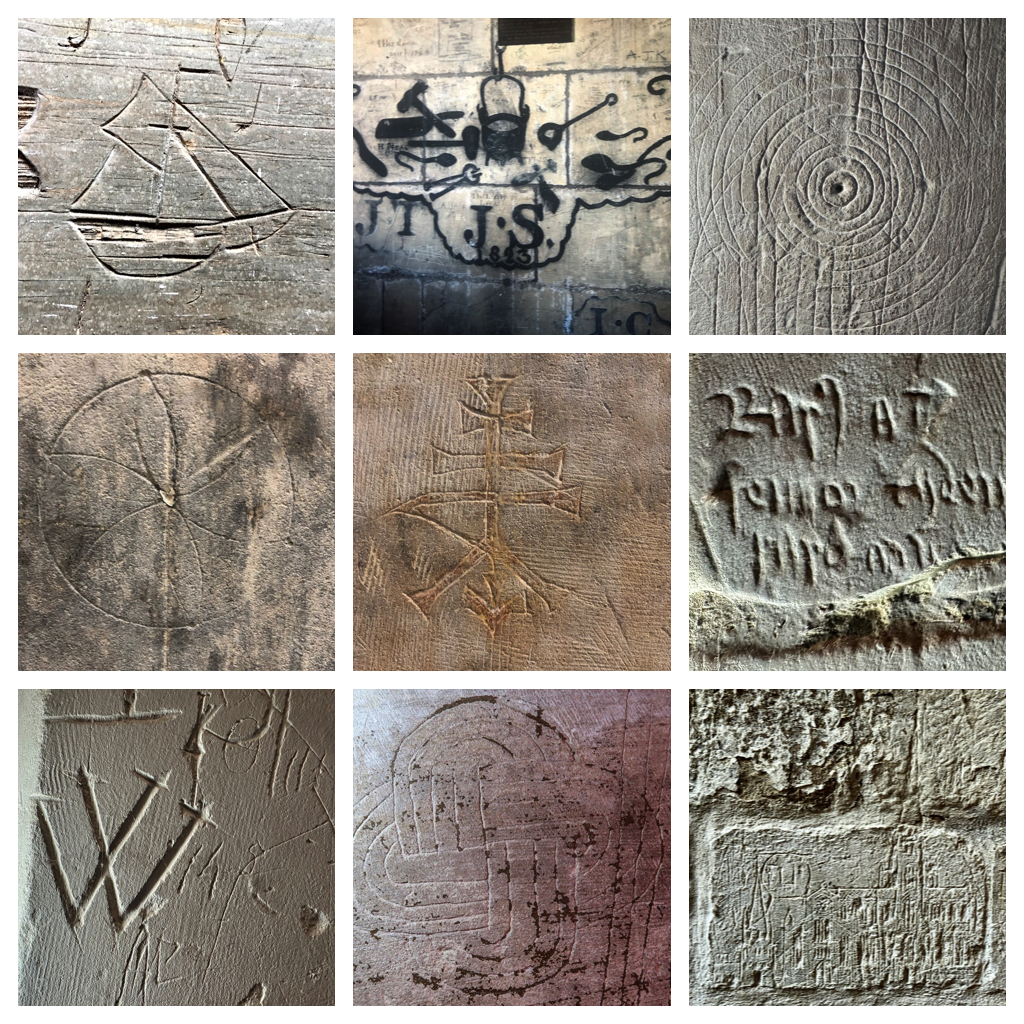
✨ Members can also view a new Cast Room item from Ashwell in augmented reality (viewable on any device) here:
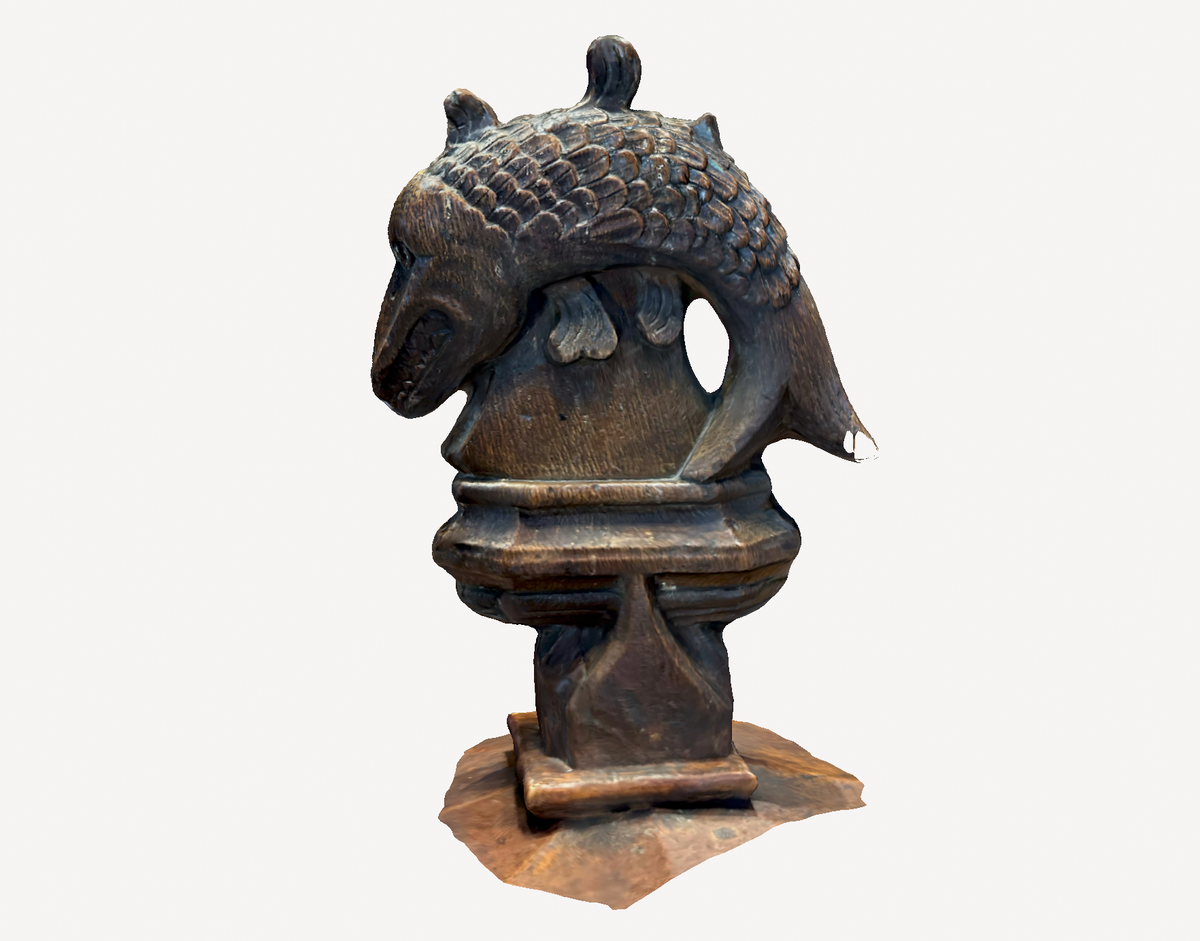
I feel myself shrinking when I ask this - but the collective impact of membership is helping me develop a new income stream that helps overcome the impact of Covid and the cost of living crisis on a photographer, in return for the best of me, my writing and photography. I'm so grateful for your support. Thank you.
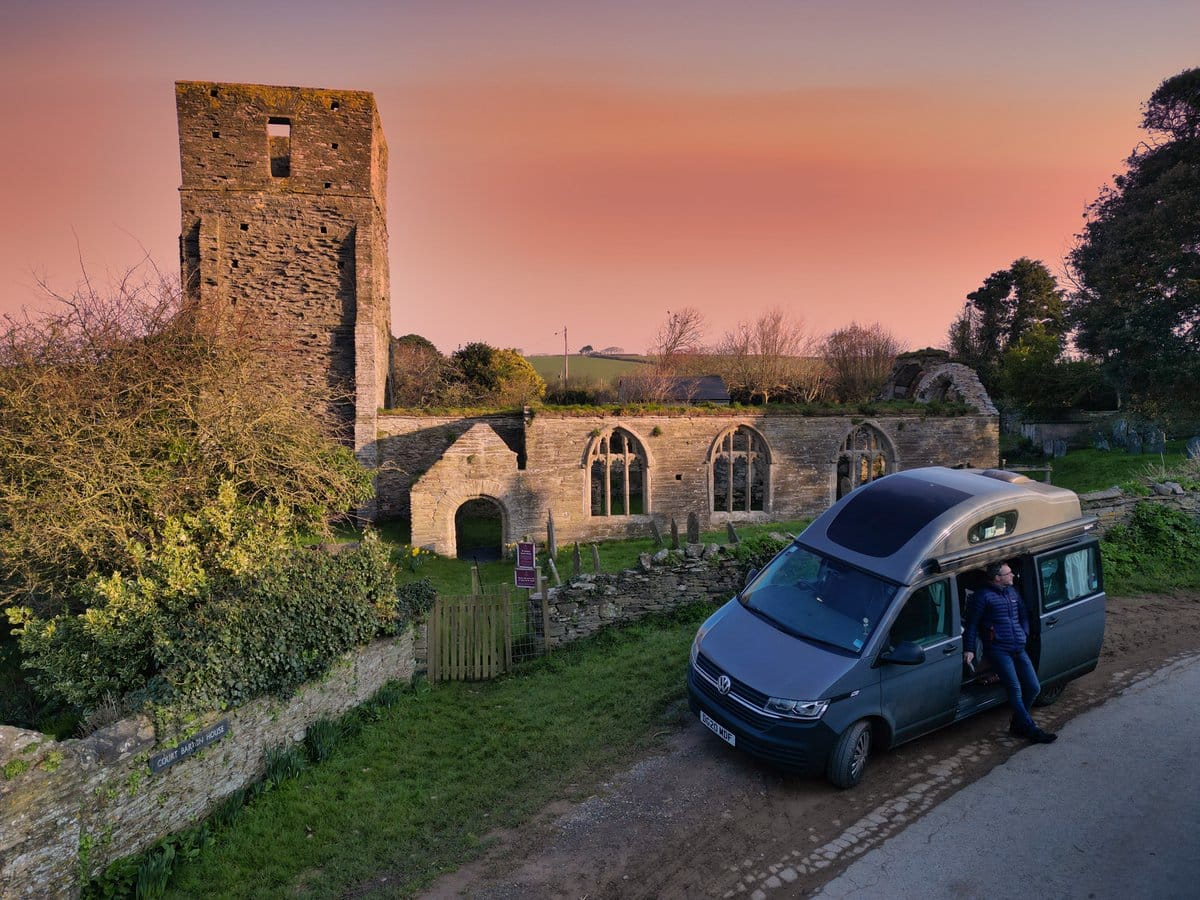
Can you help support this Digest and keep Woody on the road?
Become A MemberA little earlier than my visit to Ashwell - I find myself discovering more mark making in two churches in Anglesey. They are mostly symbols that are said to be 'evil warding' - protective of space and place and people. Some are simply made by people who want to mark an event, or pride in their craft.
Our churches, that are full of signs and symbols of a global culture hold upon their surfaces the vague whispers of a counter-culture - the beliefs, fears and hopes of ordinary people.
Old St. Afran, Llantrisant, Anglesey.
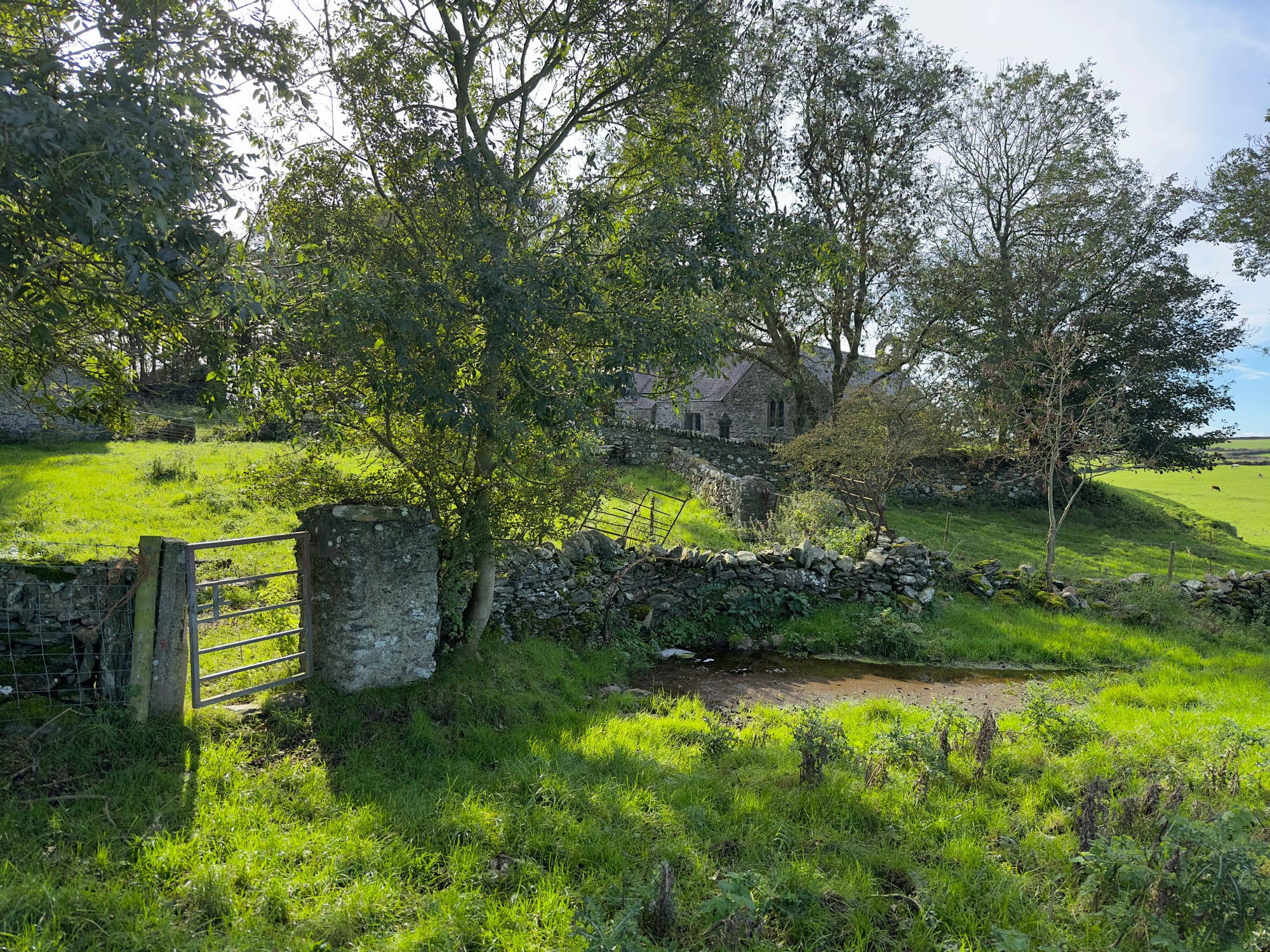
This is a church that was replaced by a shiny new one in Victorian times. It is remarkably and delightfully isolated along a muddy path in the middle of a farmer's field.
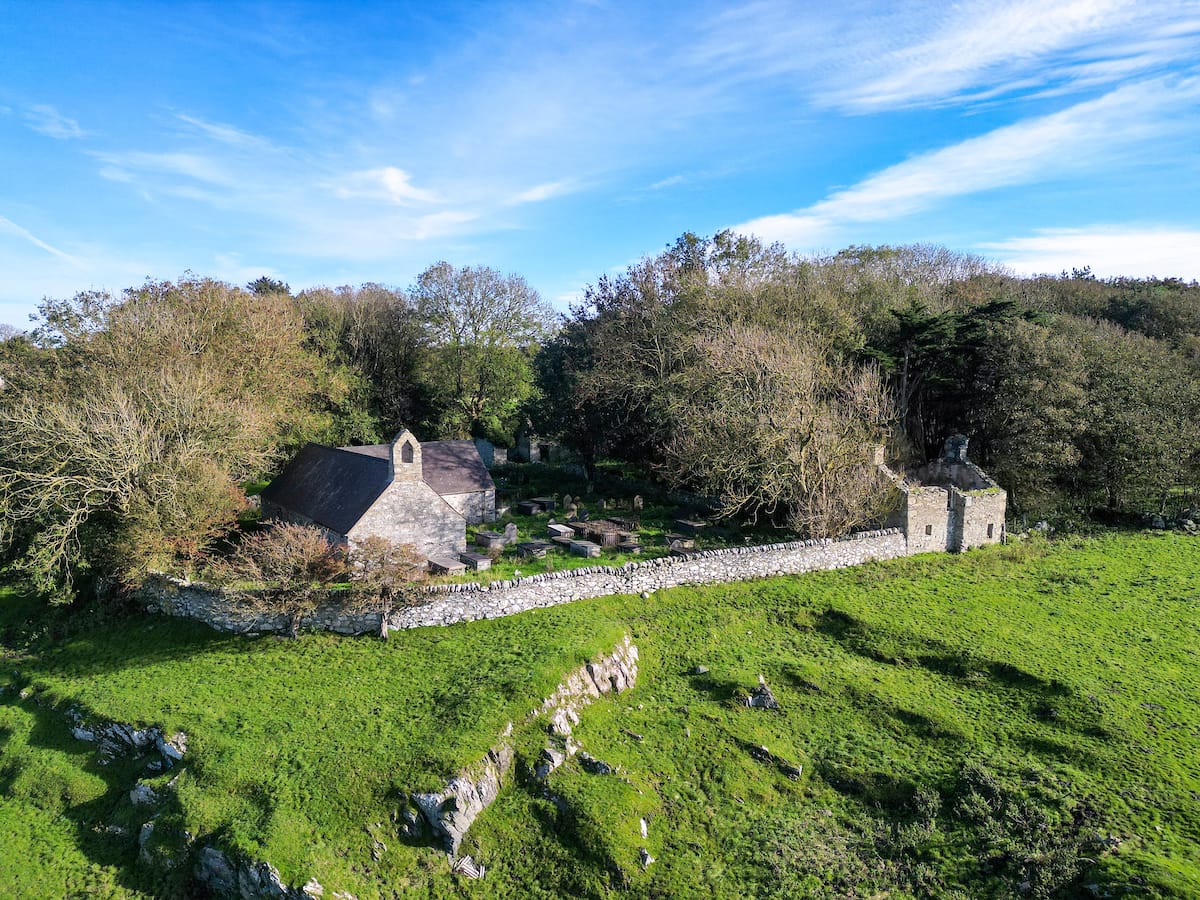
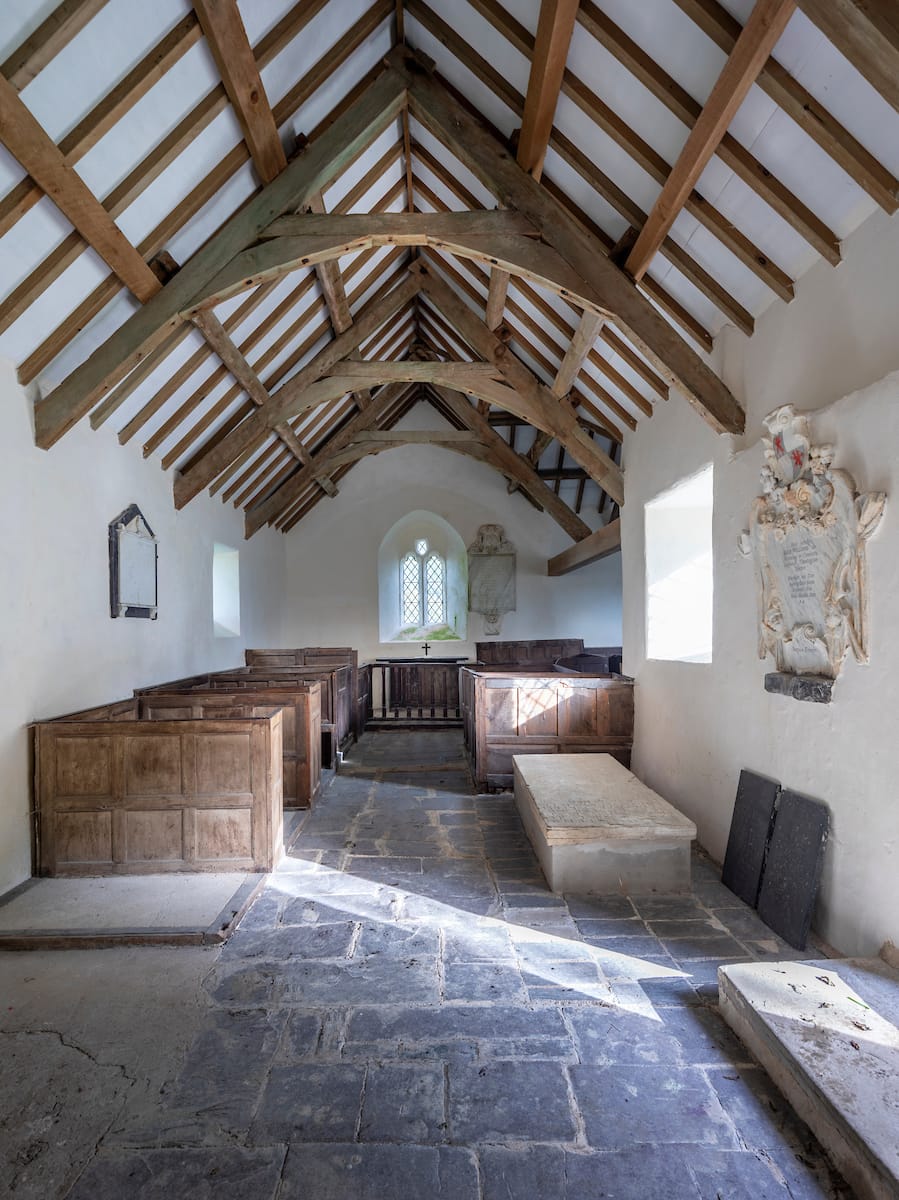
The church is full of monuments to the people that lived here. Some are intentional:
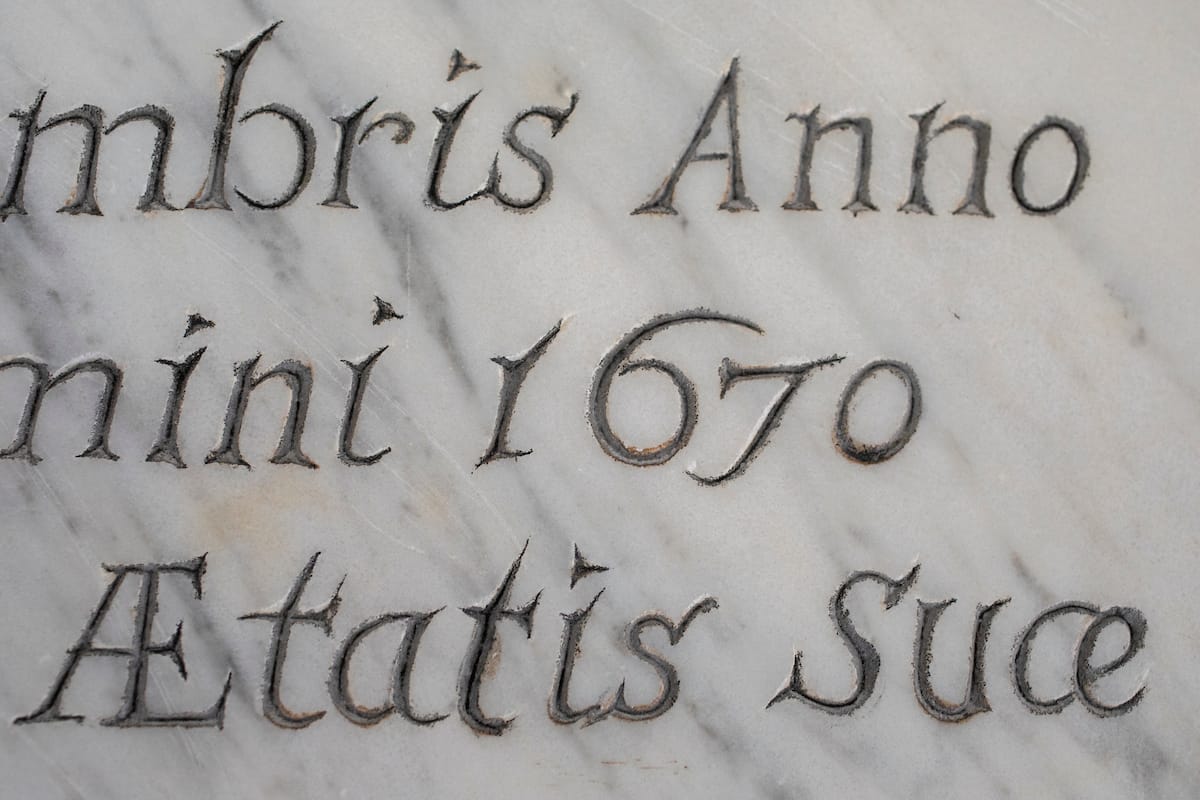
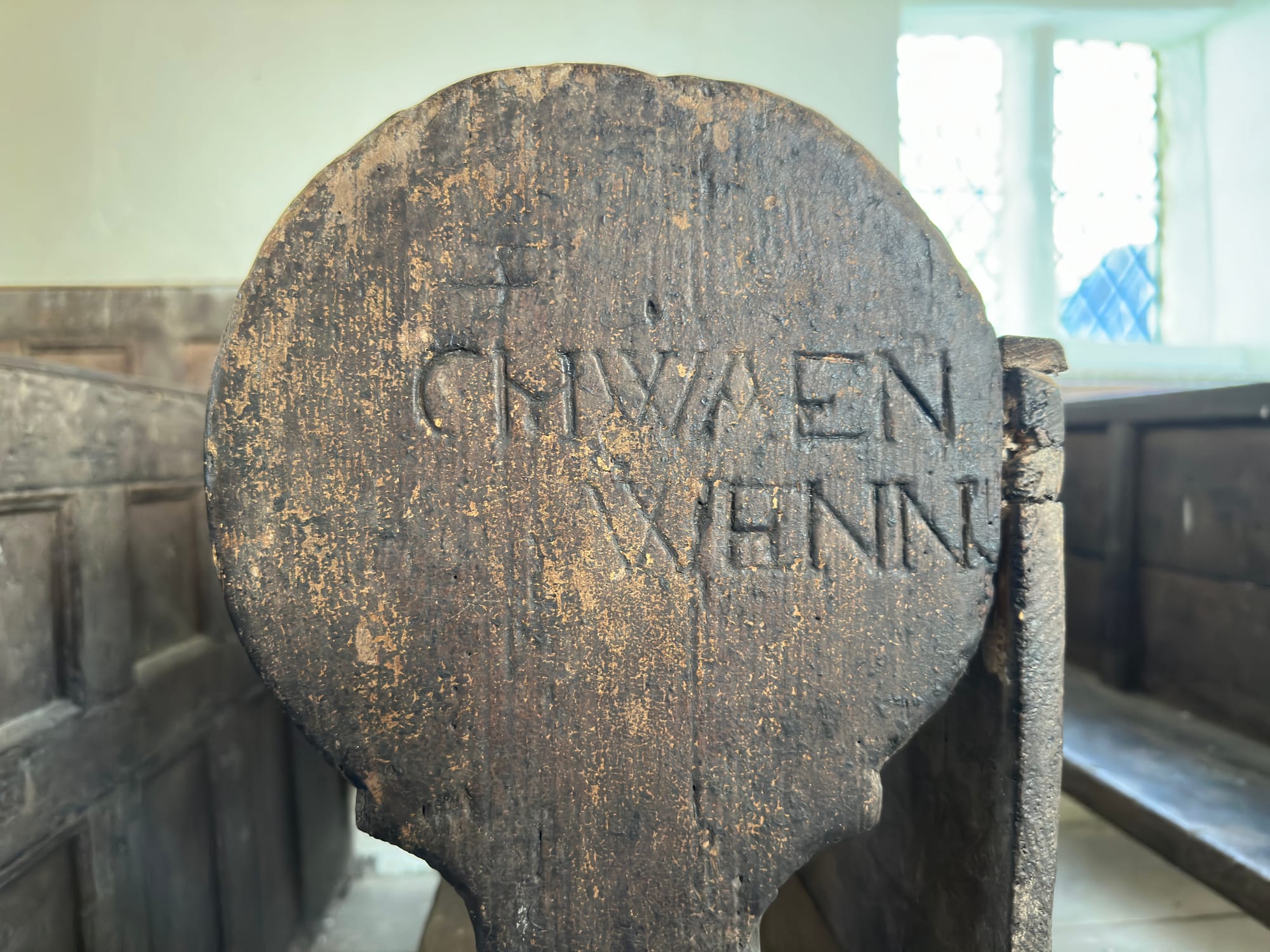
and some are accidental:
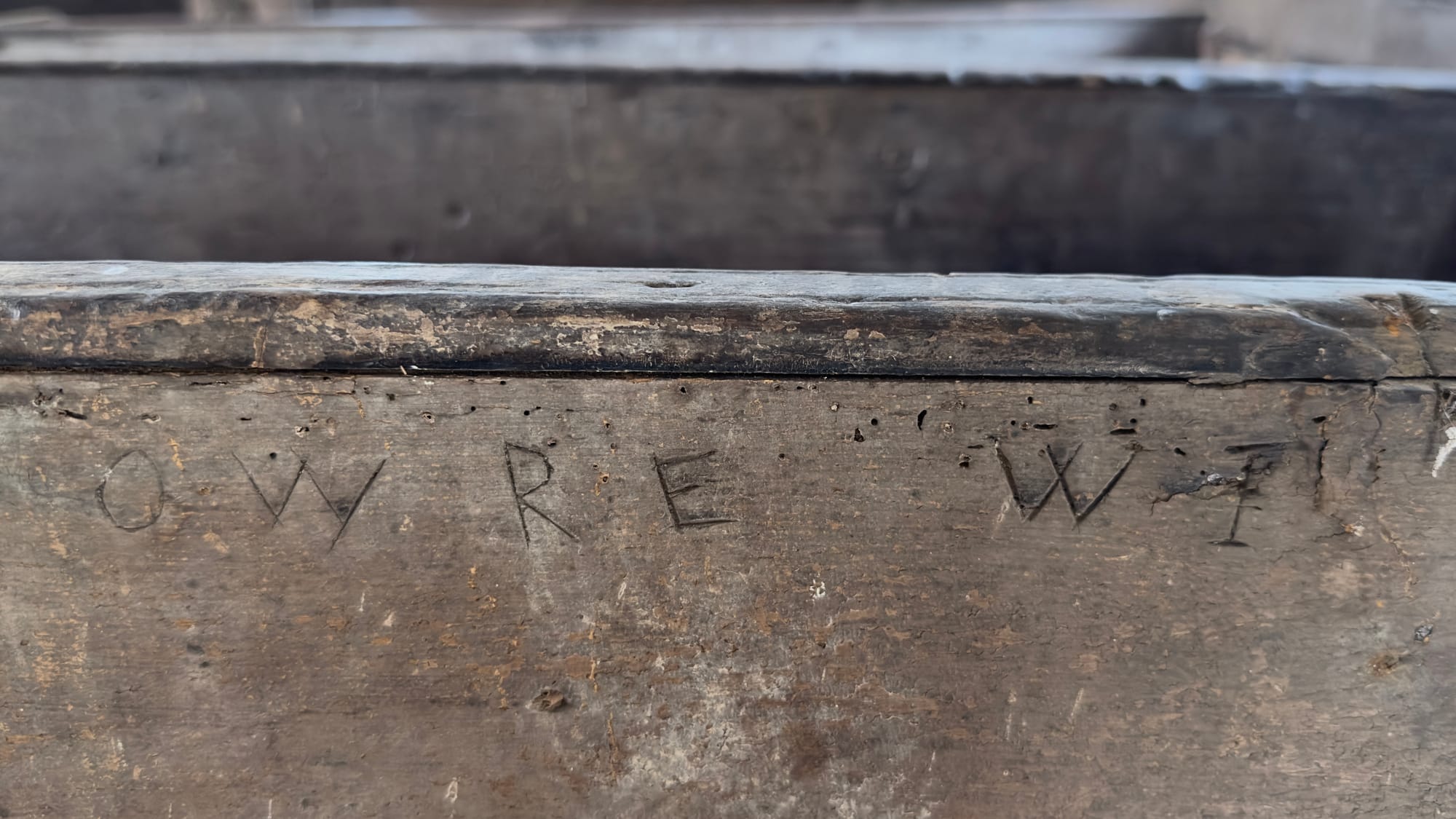
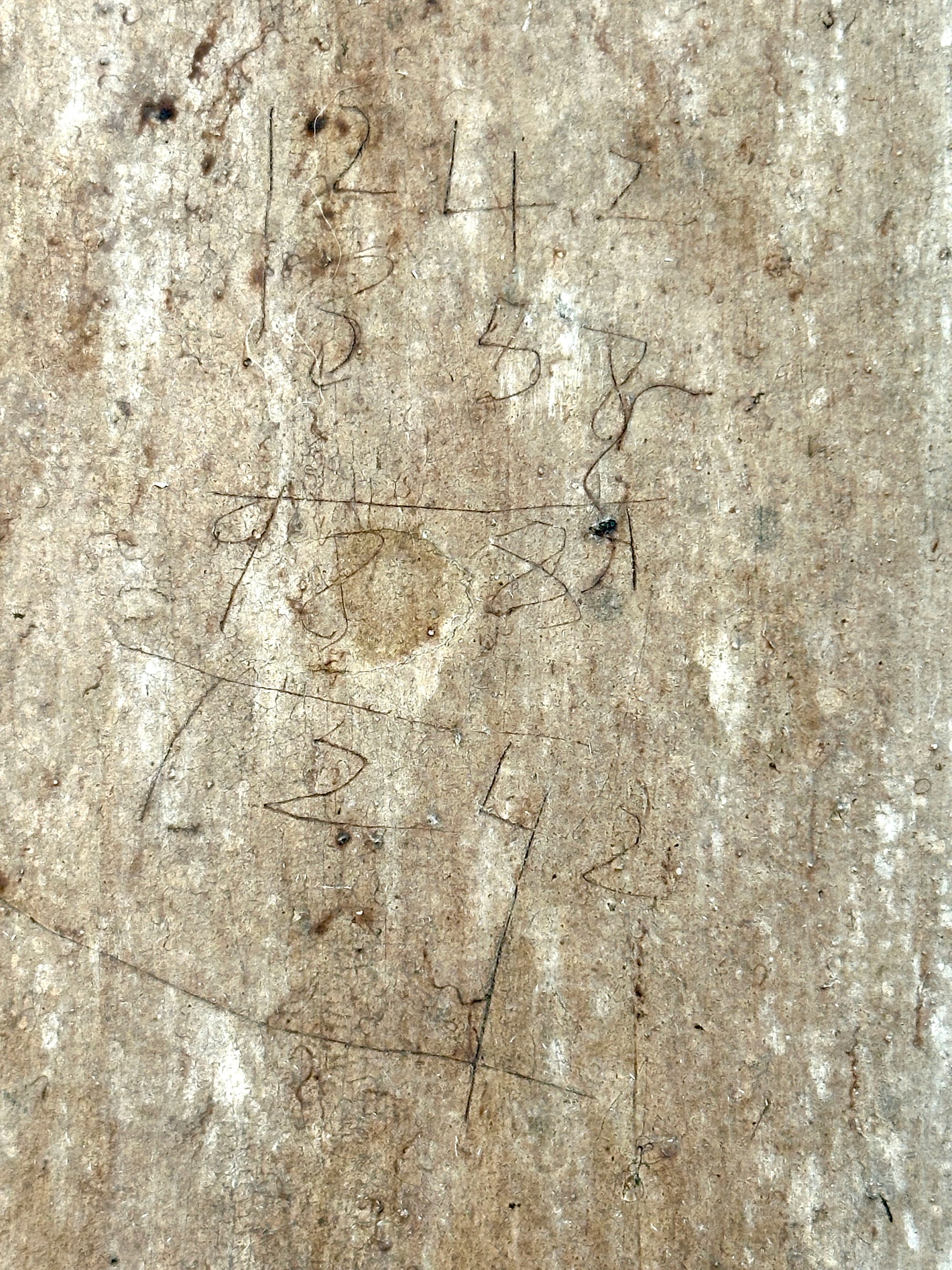
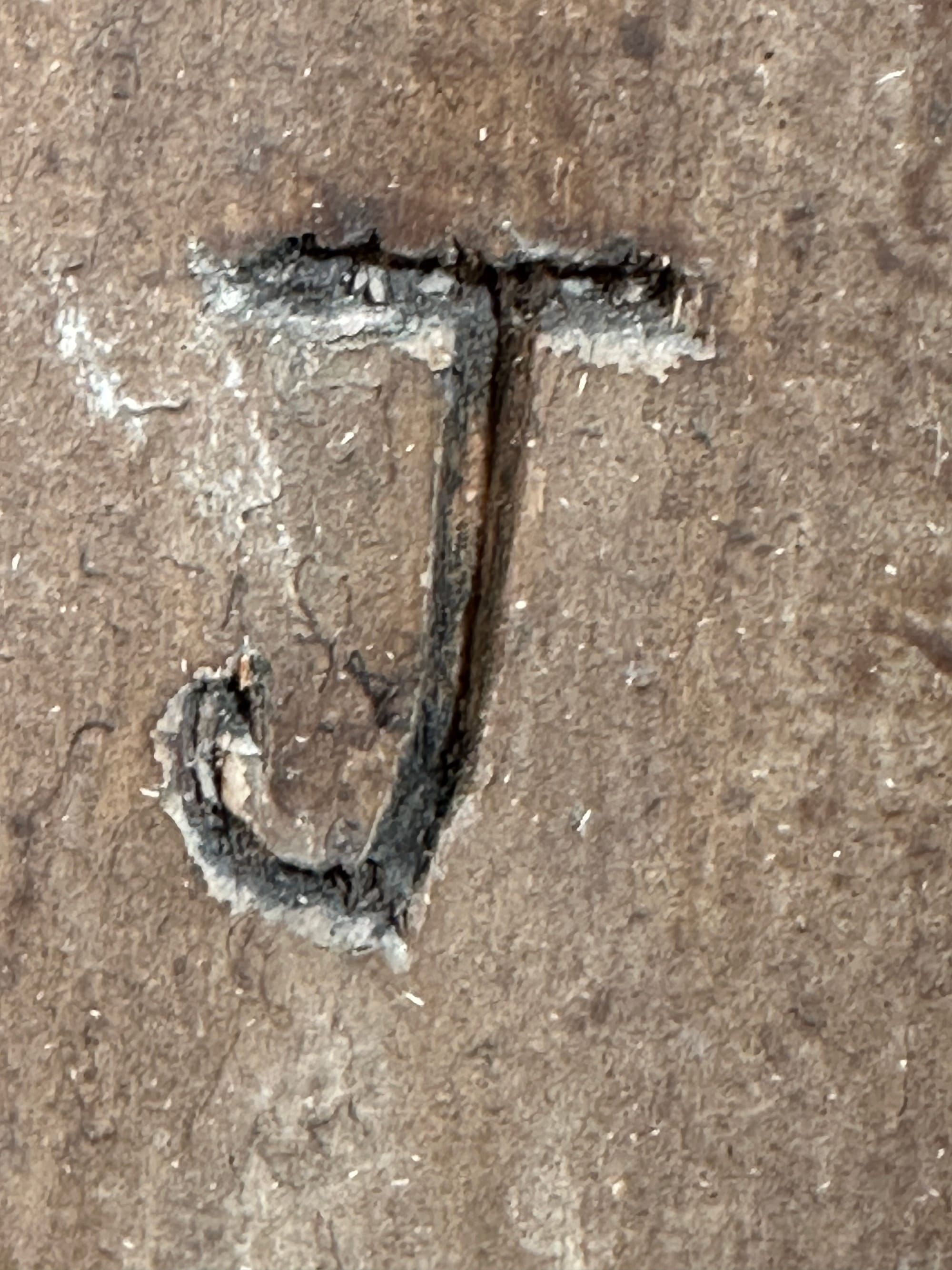
And, as at Ashwell - there's lots of mark making with geometric symbols:
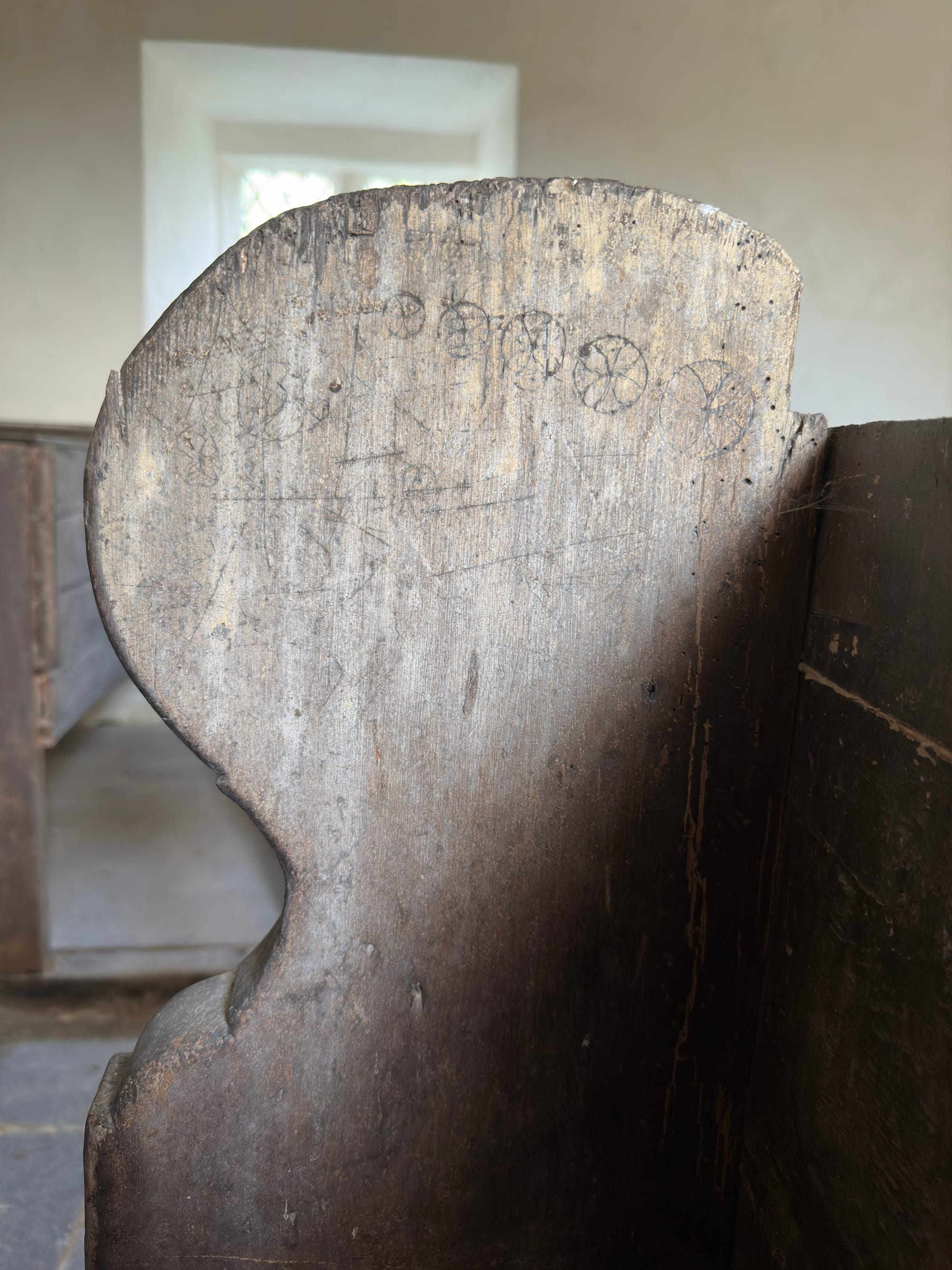
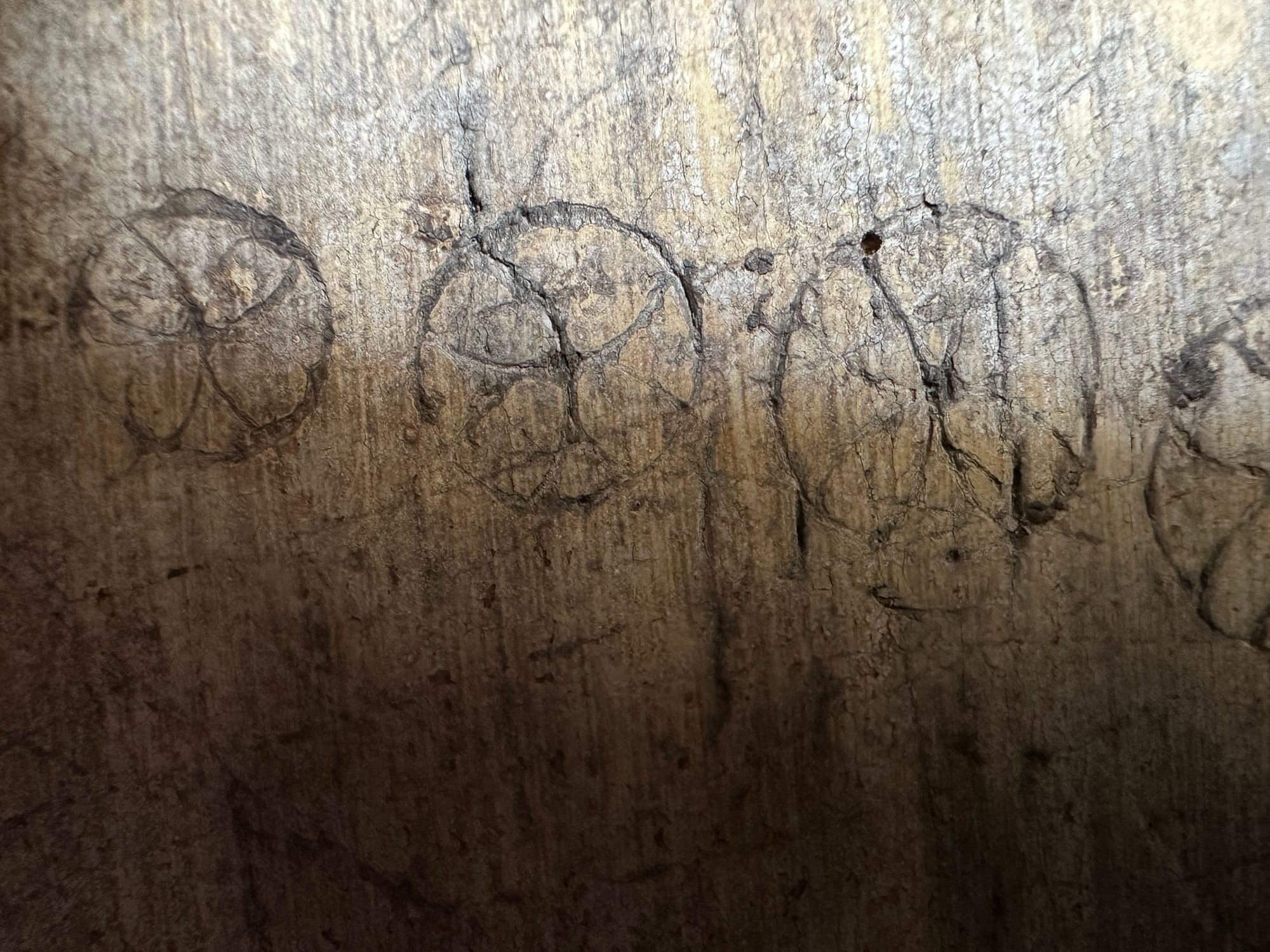
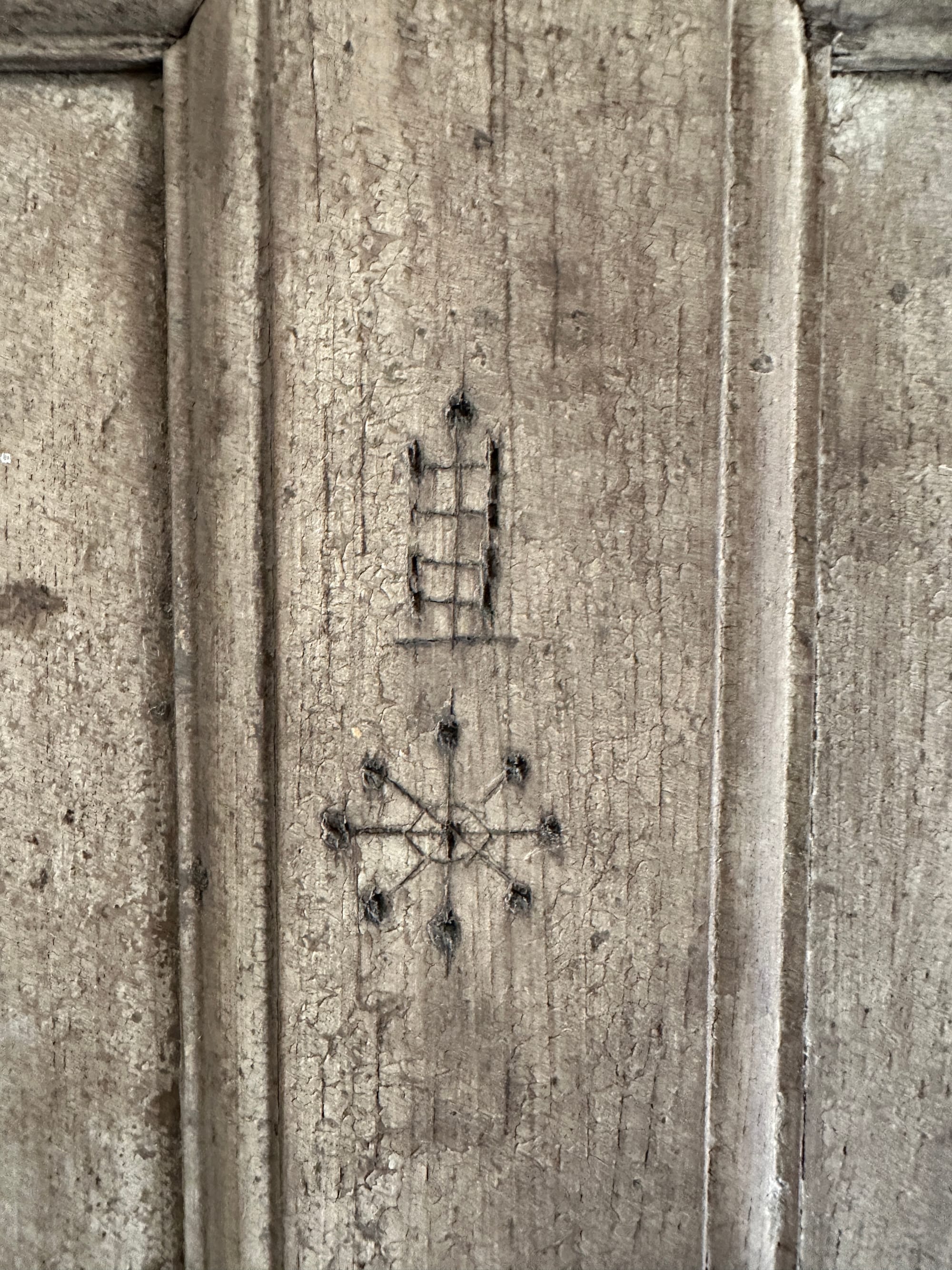
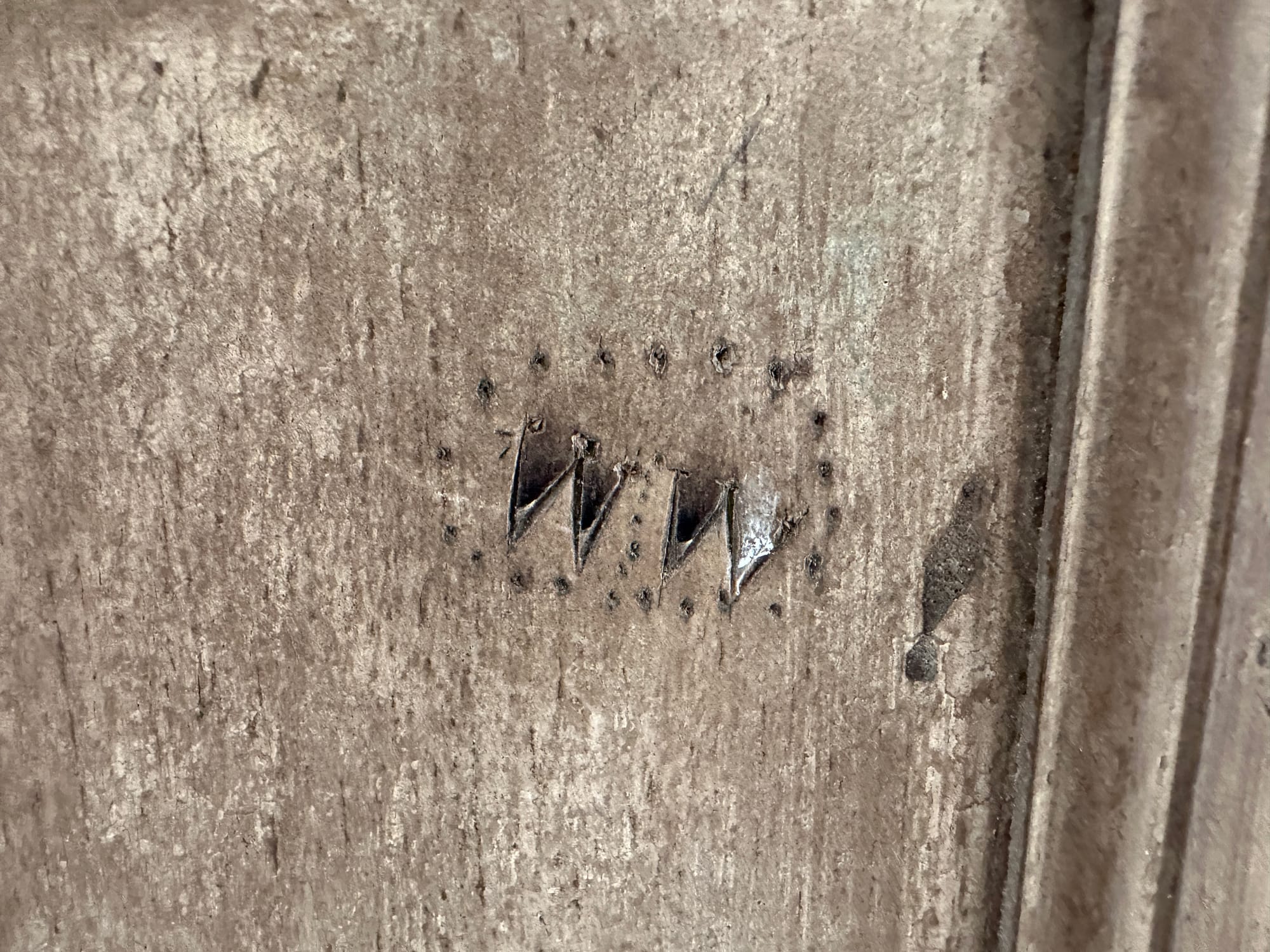
For more information and directions to St. Afran:
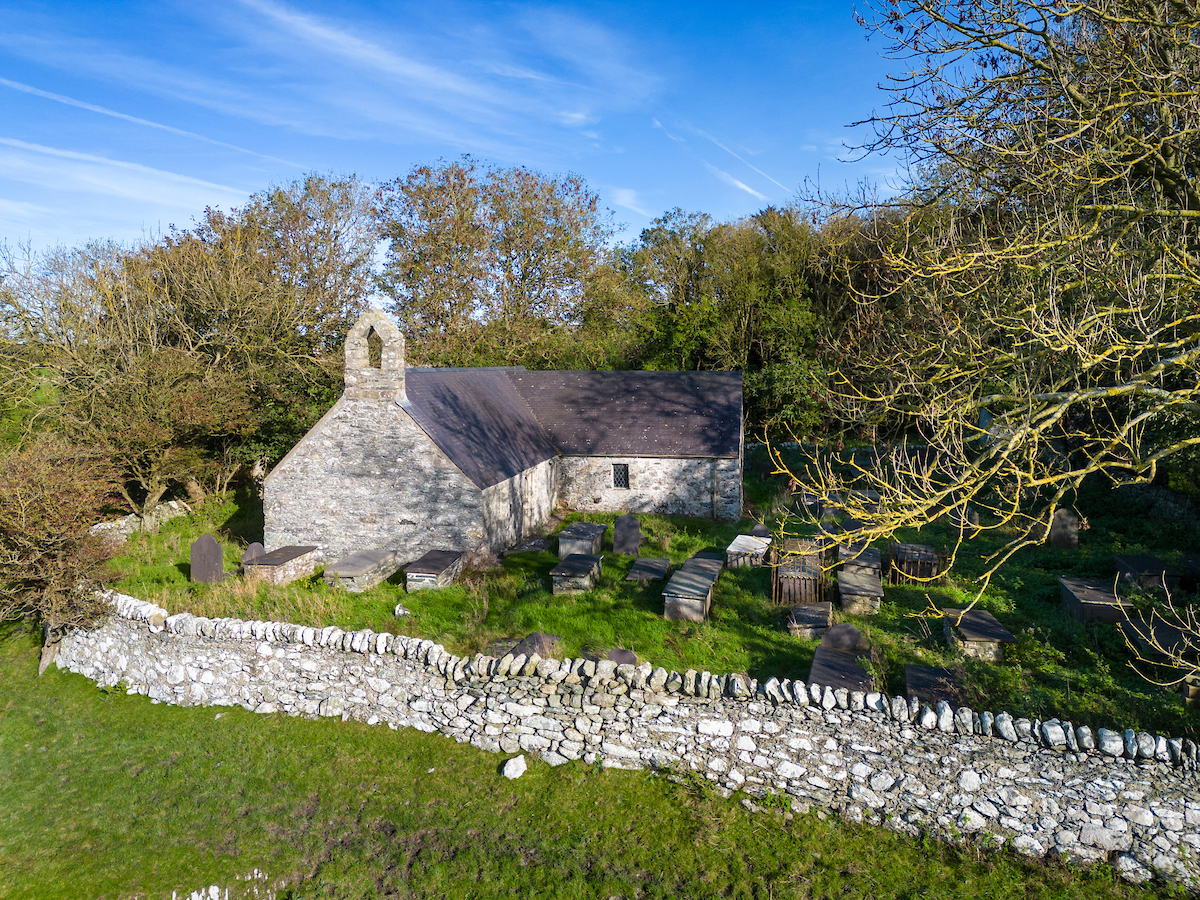
St. Peulan's, Llanbeulan, Anglesey.
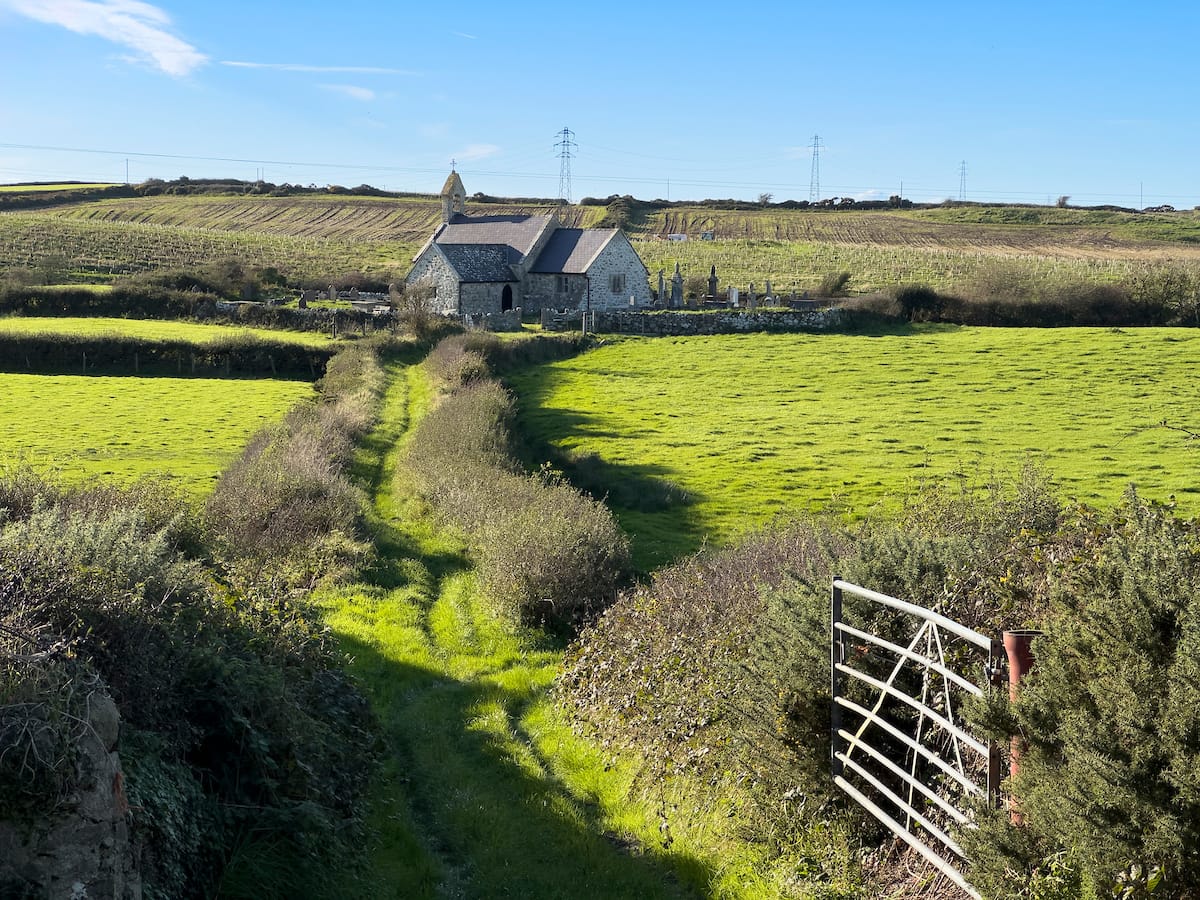
I arrive early at St. Peulan's to capture the sunrise and I'm not disappointed. I take my photographs and then just sit and watch until the sky desaturates into the pale blue of the day.
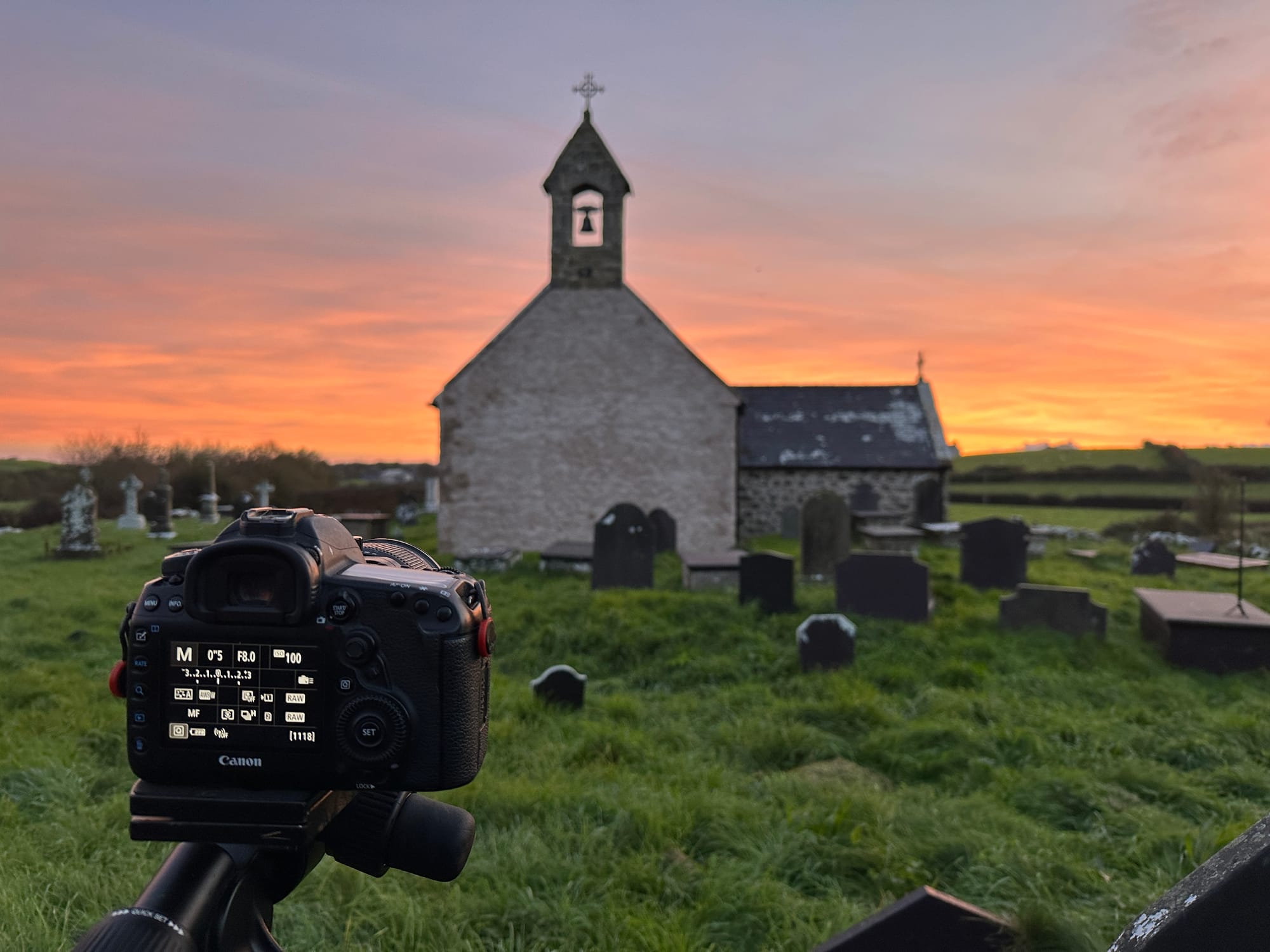
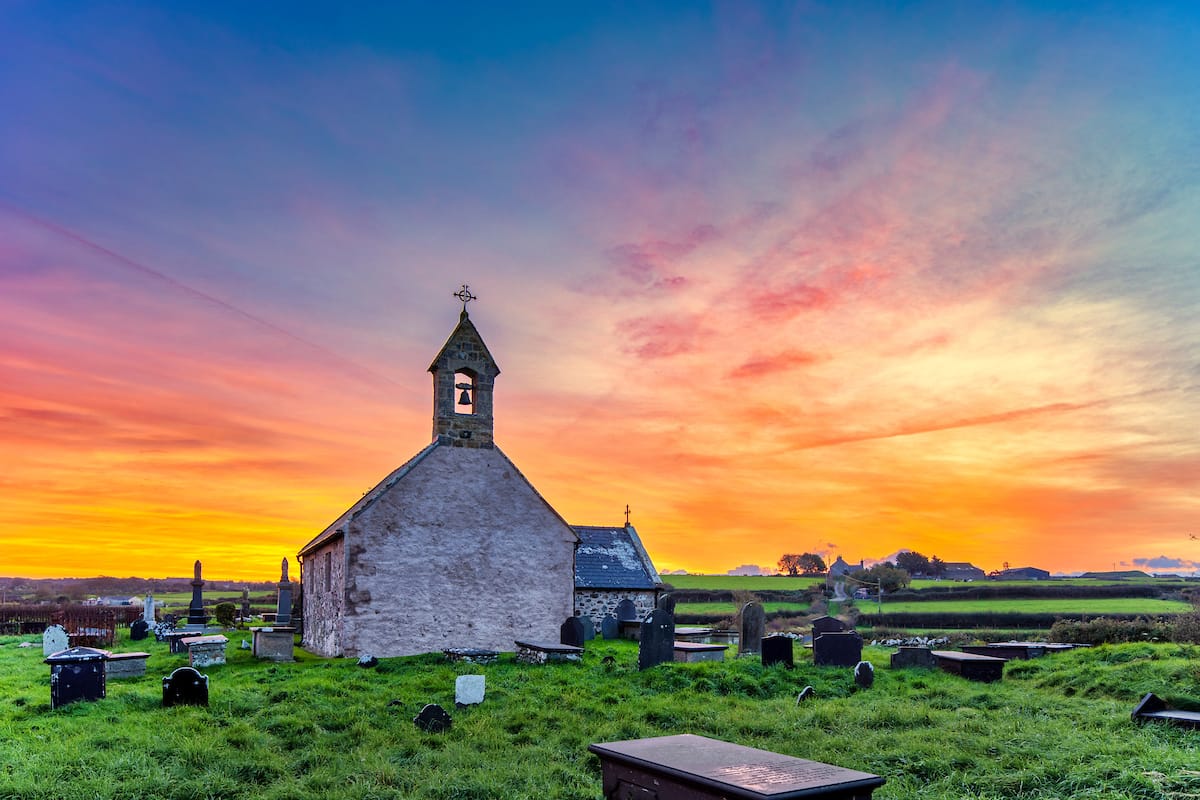
Inside, I'm mesmerised by the light and the way it reveals and conceals.
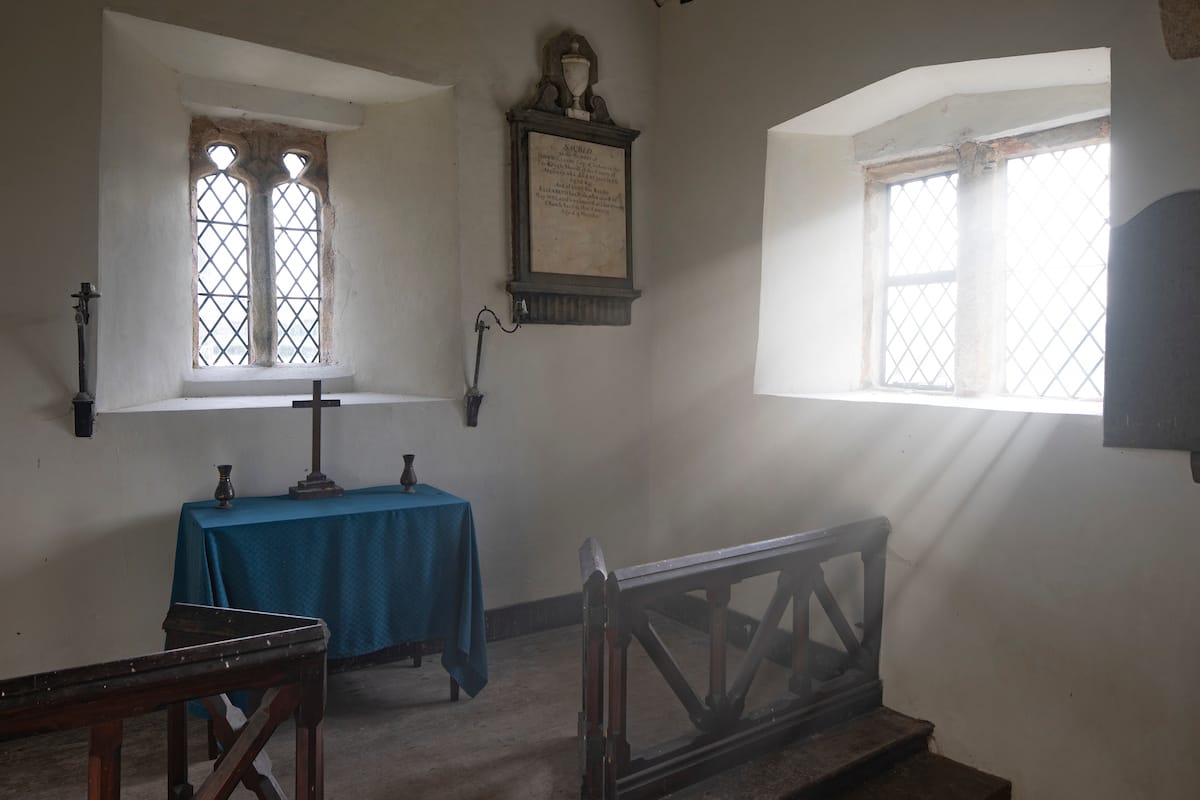
Once again, I photograph the intentional:
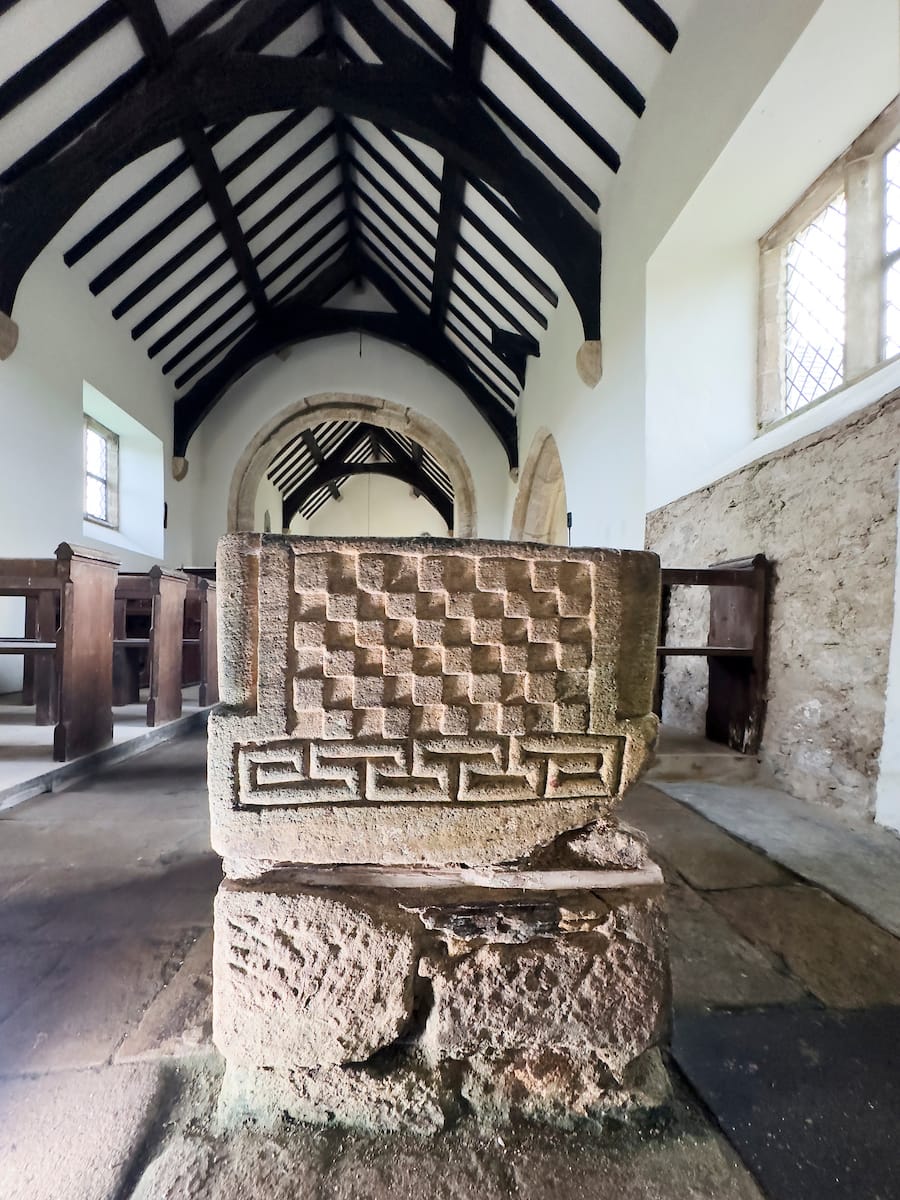
and then look for the unintentional, such as this graffito in the window of the Victorian glazier.
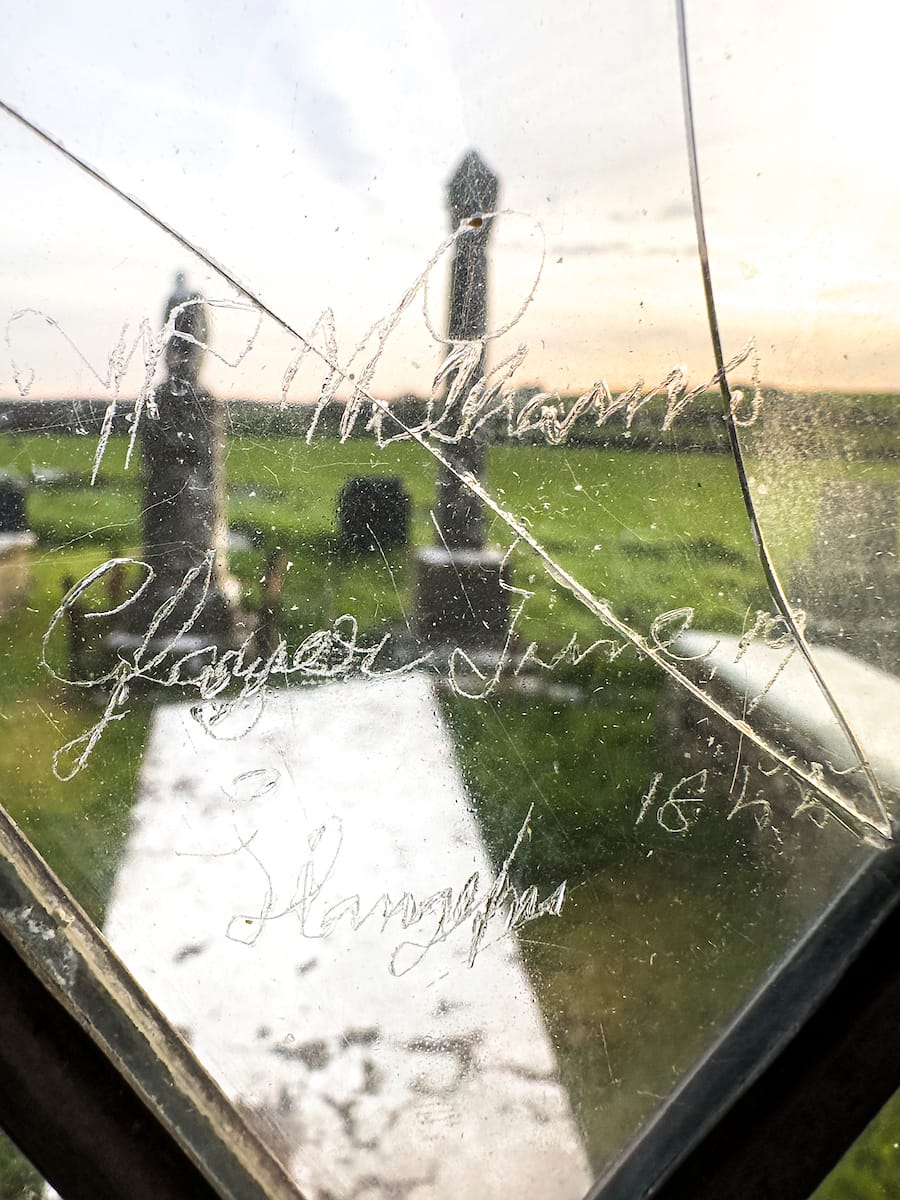
For more information and directions to St. Peulan:
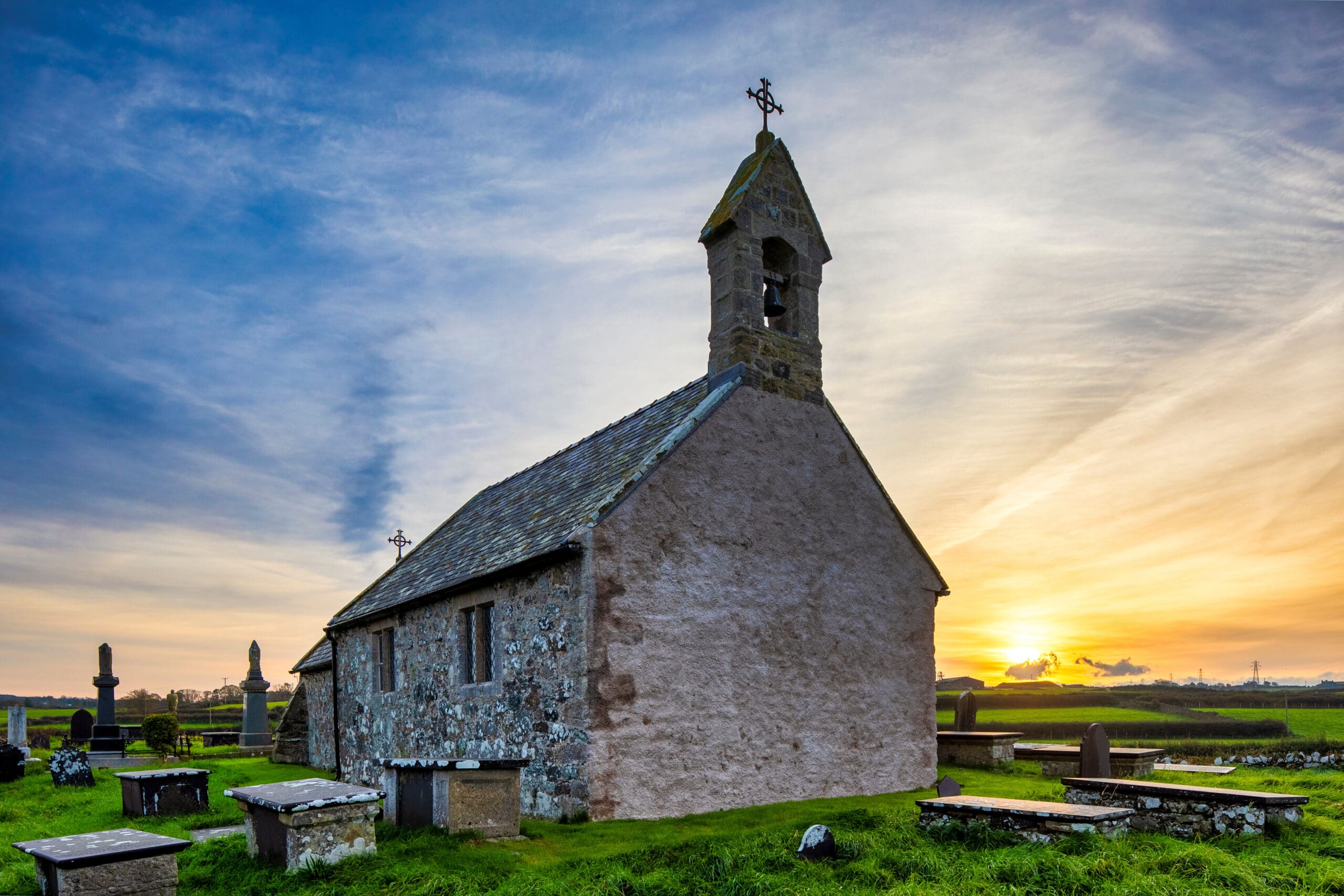
✨ Members can see the remarkable C15th font from St. Peulan's in Augmented Reality (viewable on any device):
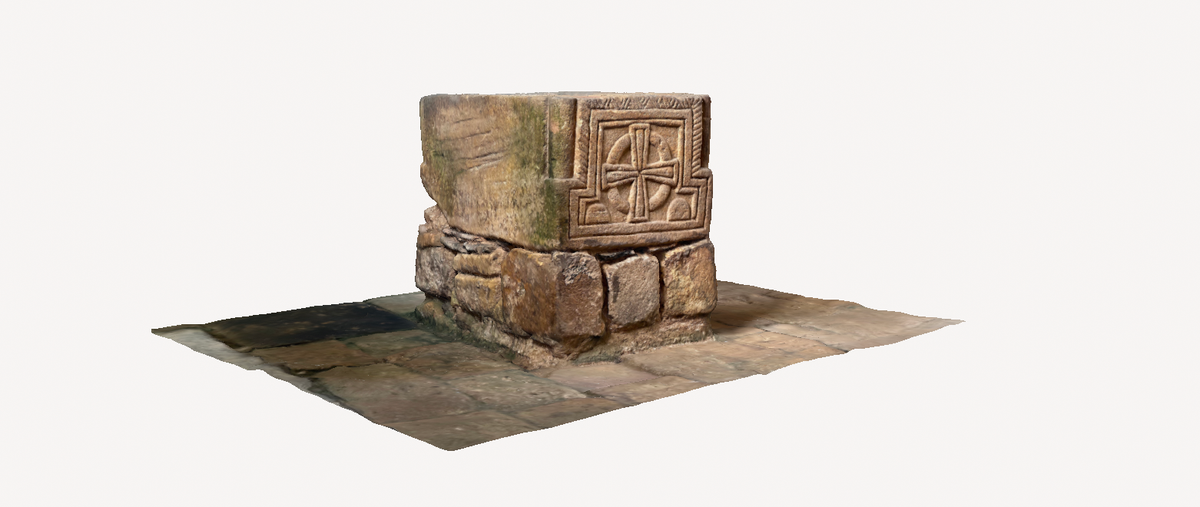
Andy Marshall
Time passes so quickly. At both St. Afran and St. Peulan, I feel the need to make my own mark. So I take a photograph and leave my signature in the guest book.
St. Afran.
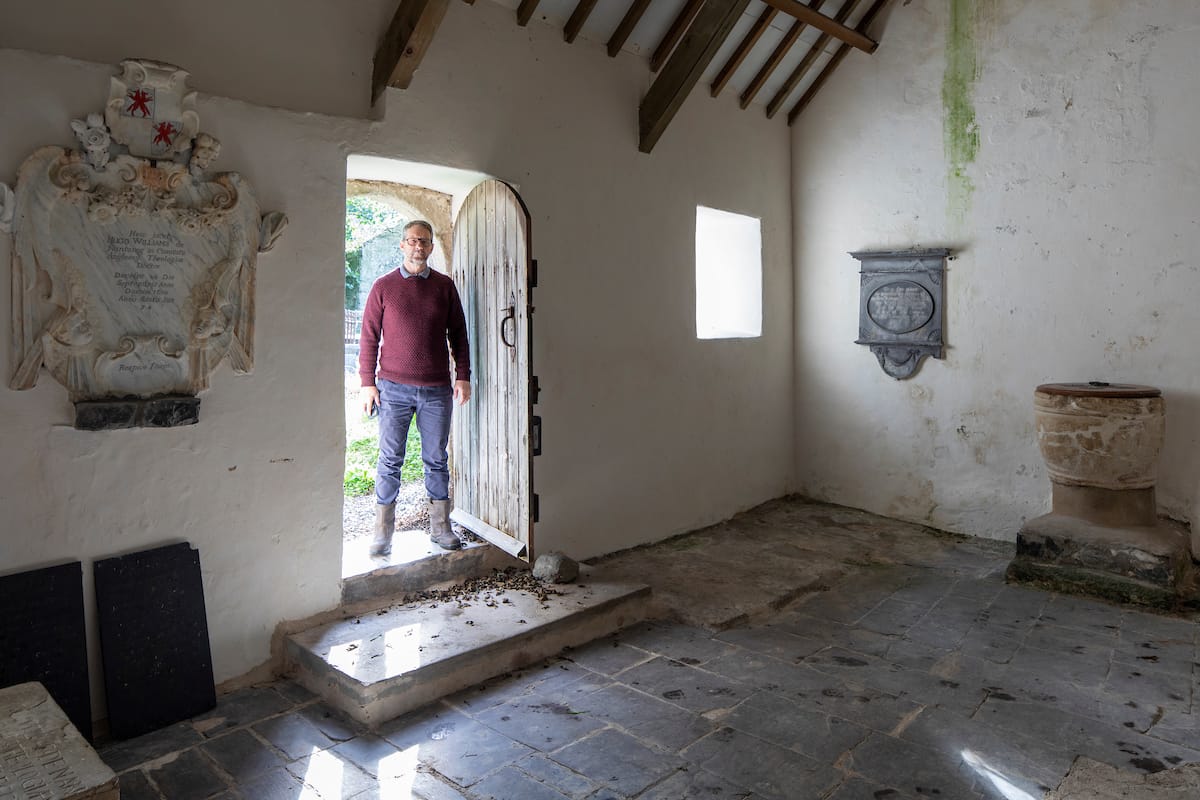
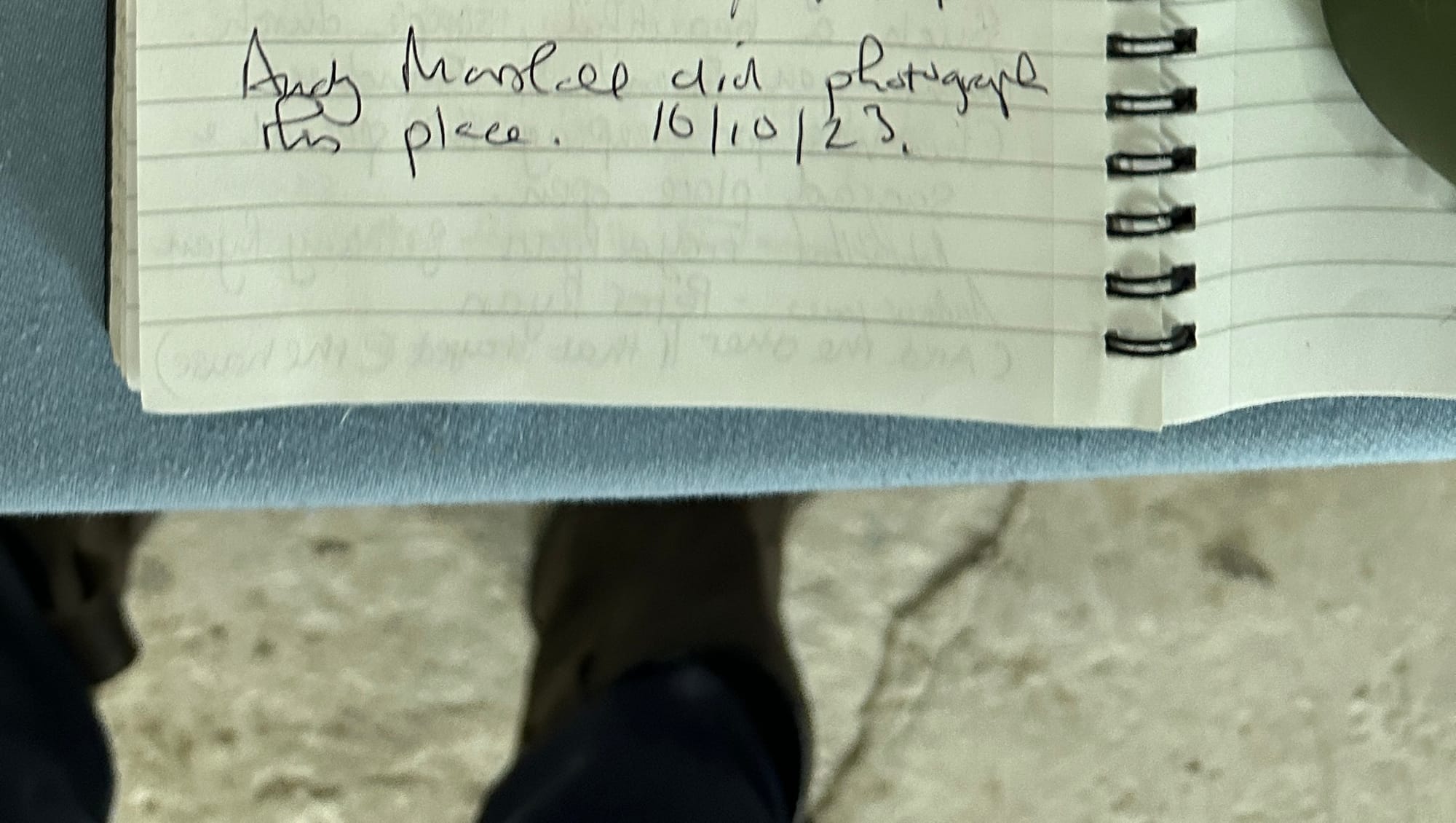
St. Peulan
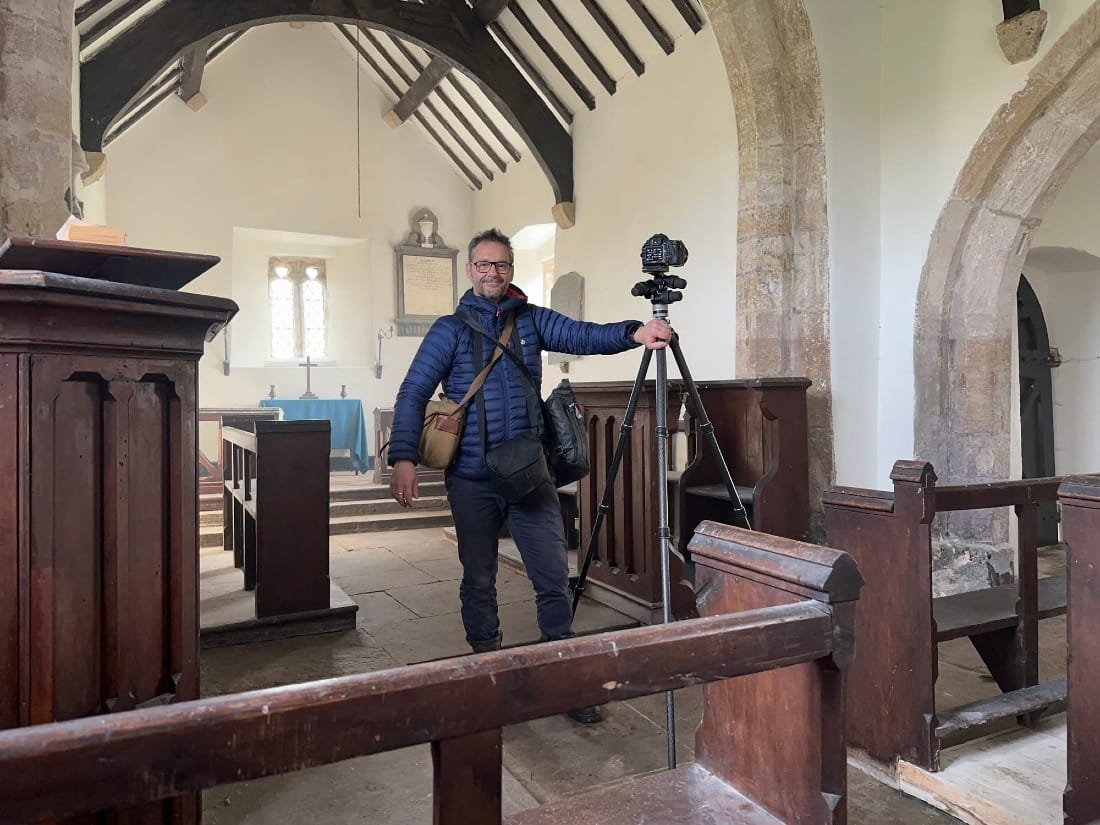
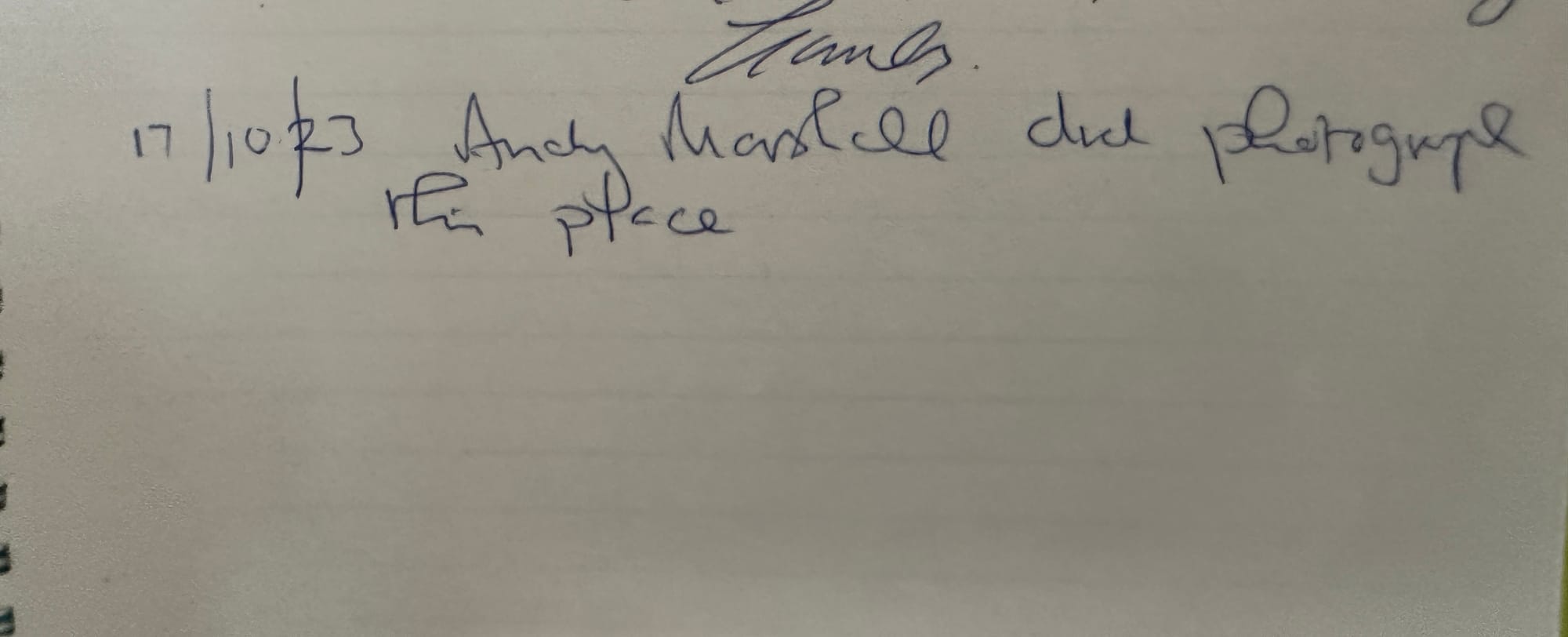
The van is my home during my travels and it's not often that I feel isolated (like at Ashwell).
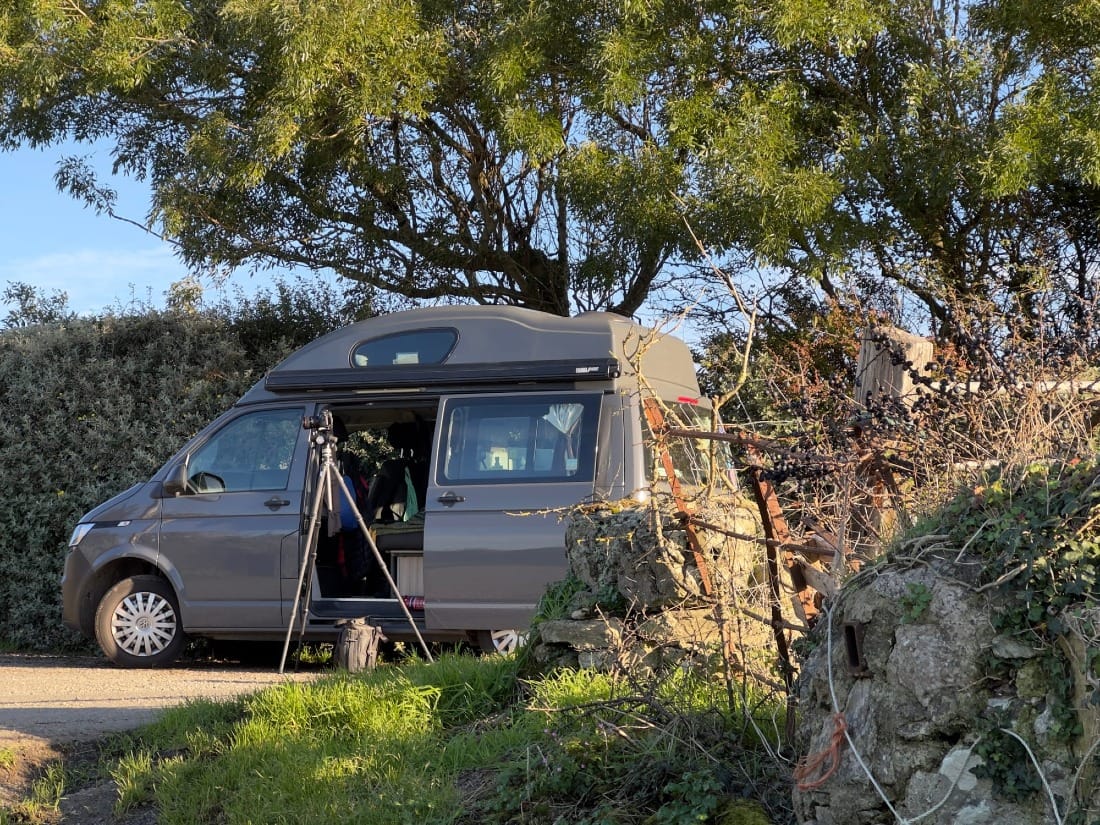
In Anglesey, it becomes the hub of my activities - getting me close up to the subject matter and also providing hot food and coffee, warmth and relief (it has a loo!) when I need it.
It also lets me sit in comfort and wait for the gloaming..
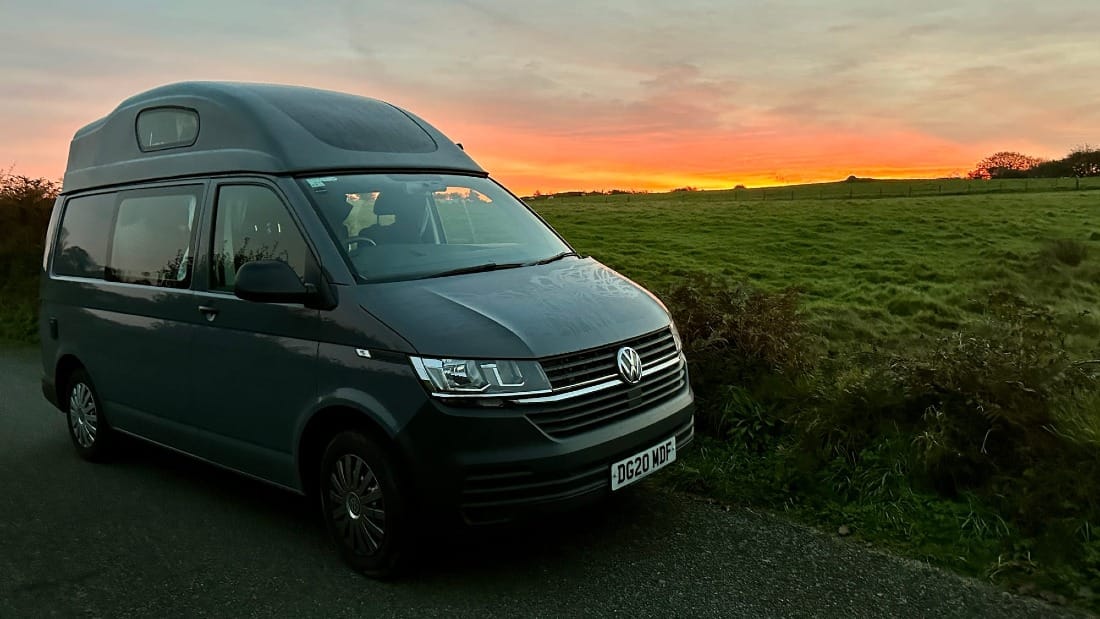
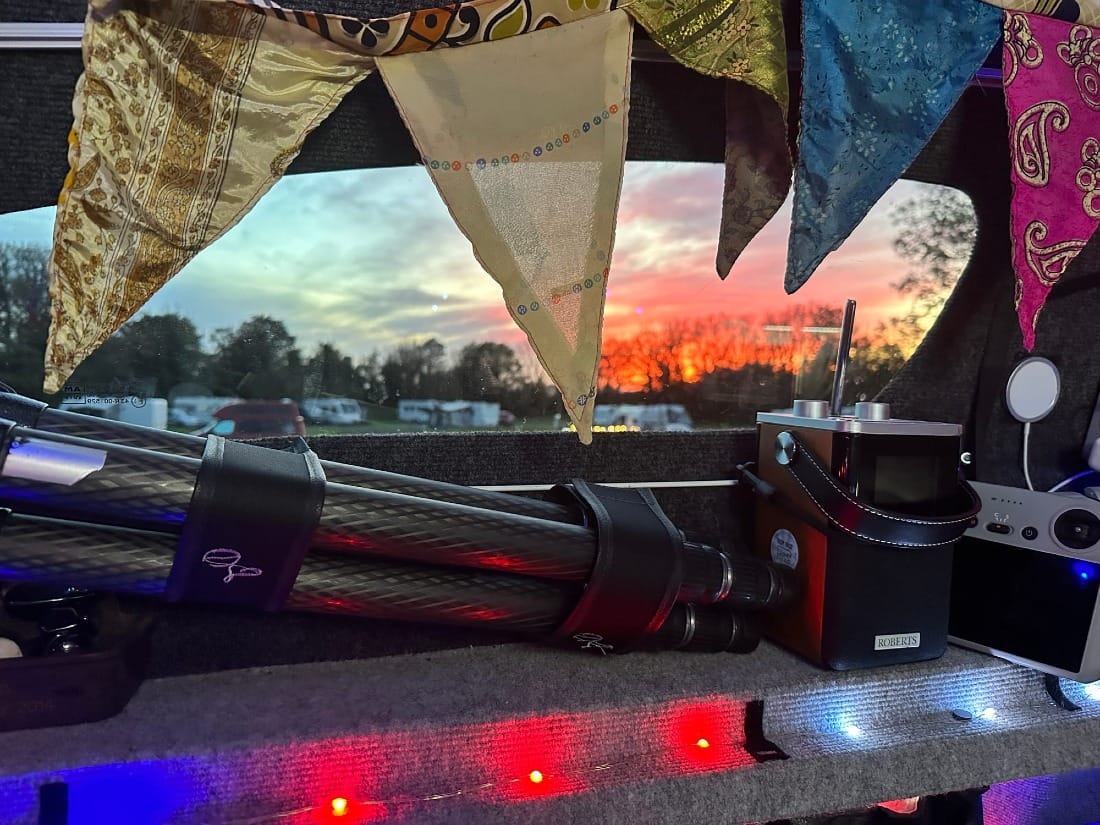
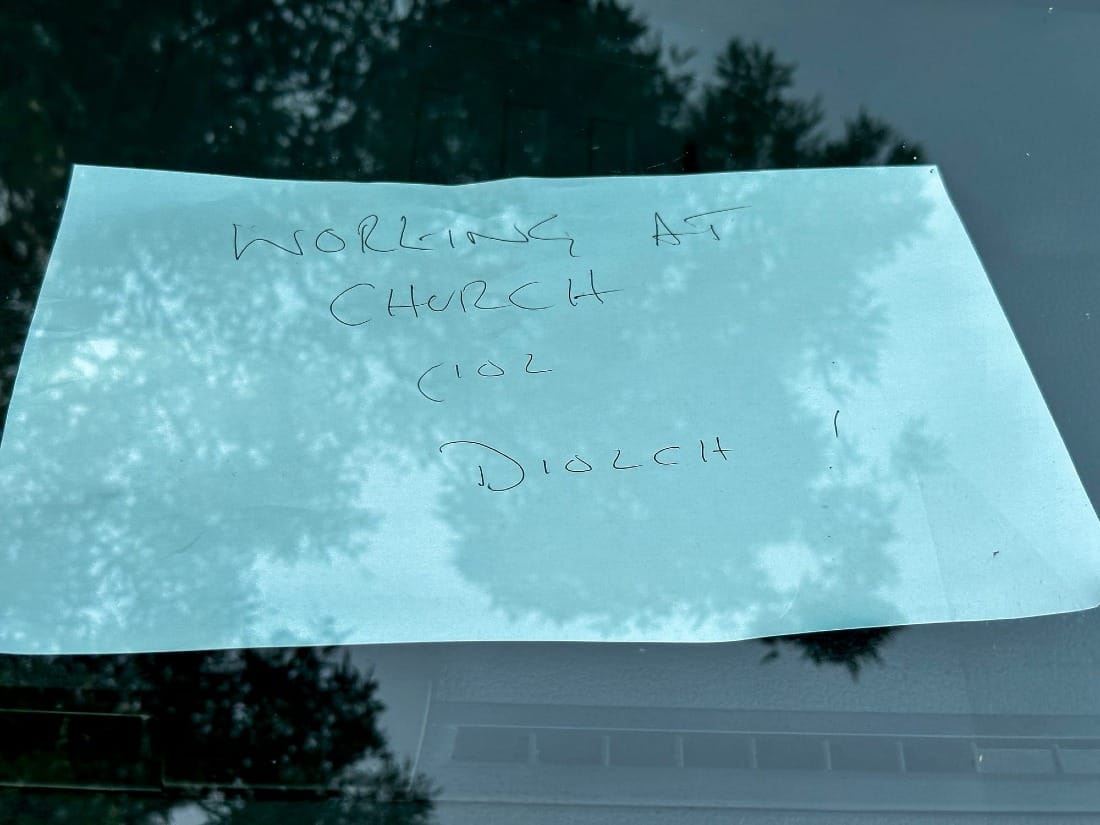
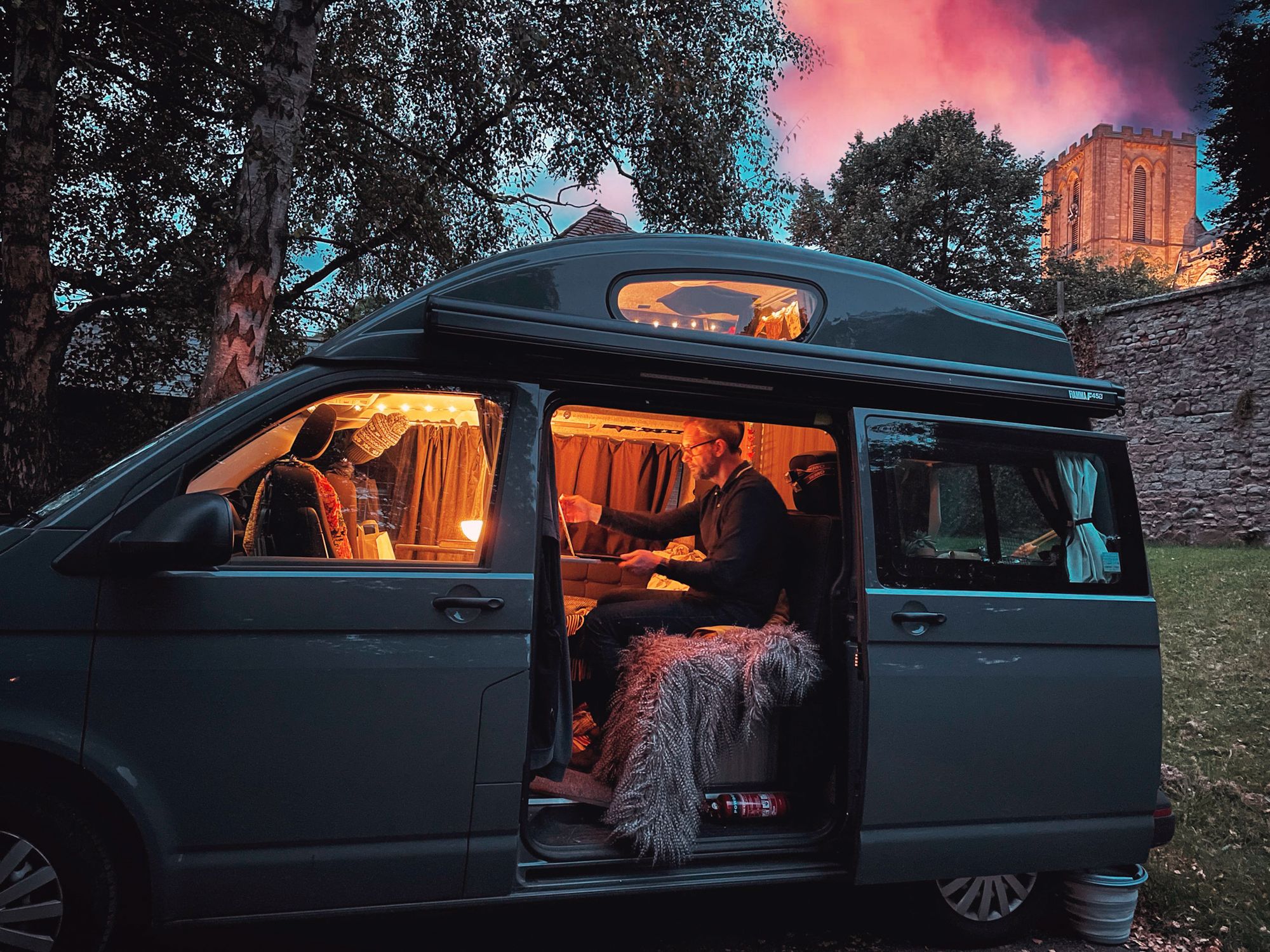
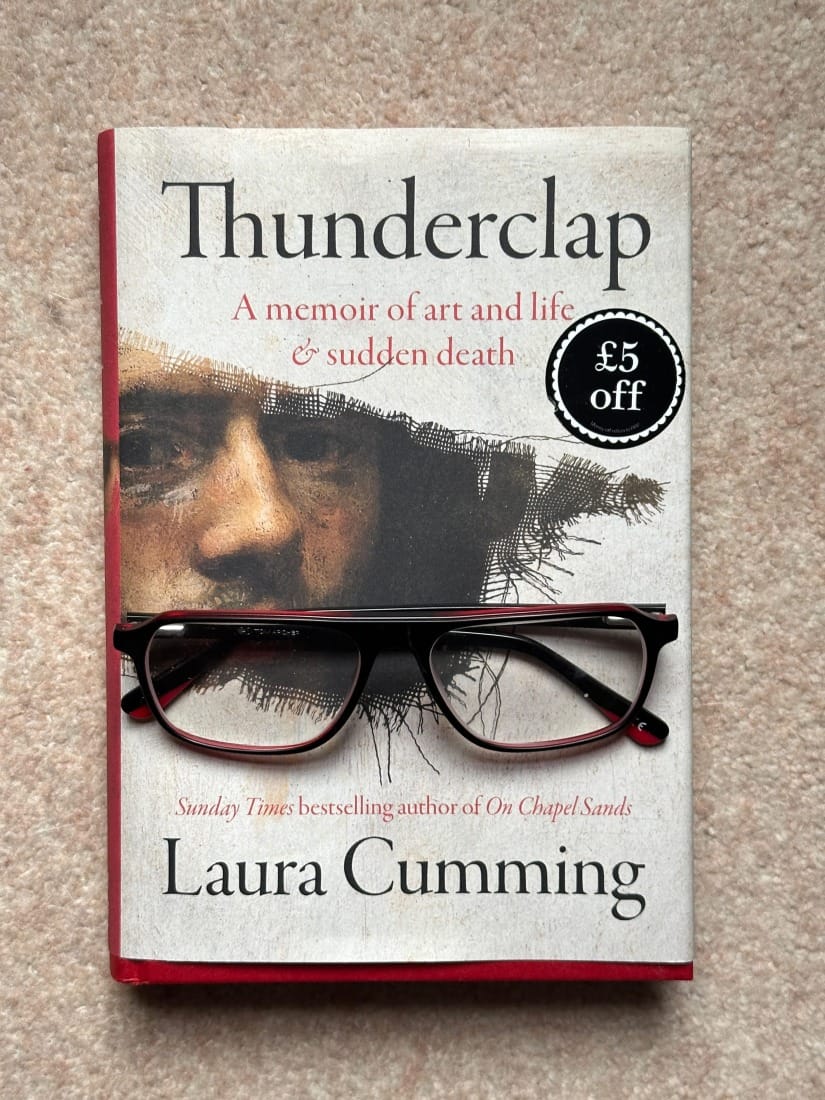
This book is about what a picture may come to mean, how it can enter your life and change your thinking in a thunderclap.
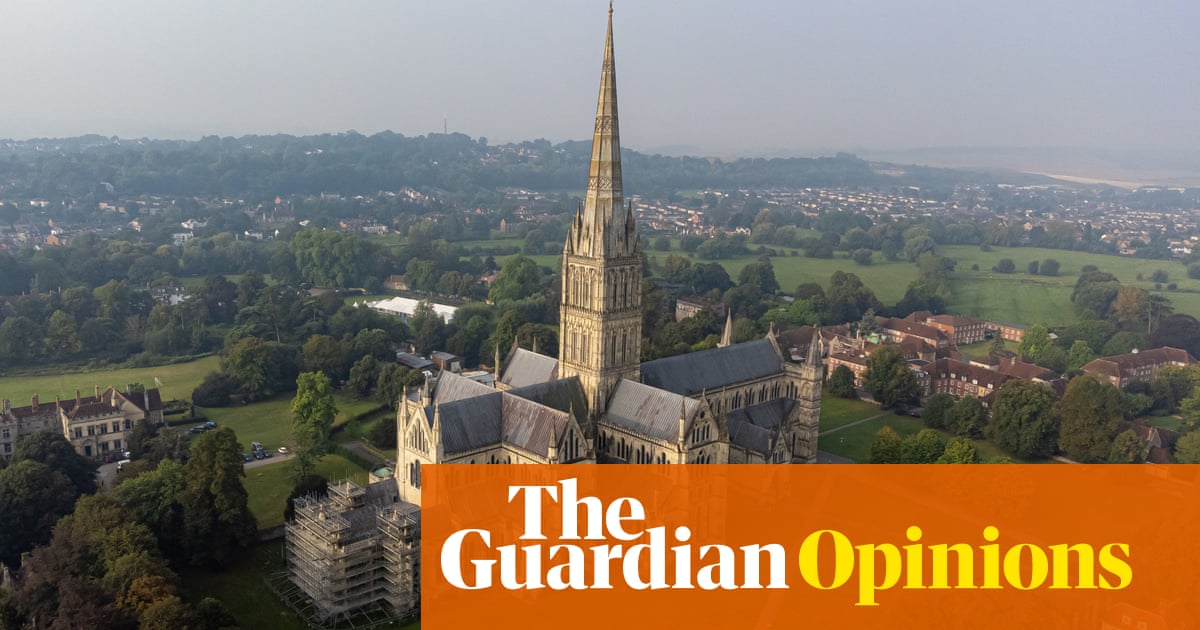

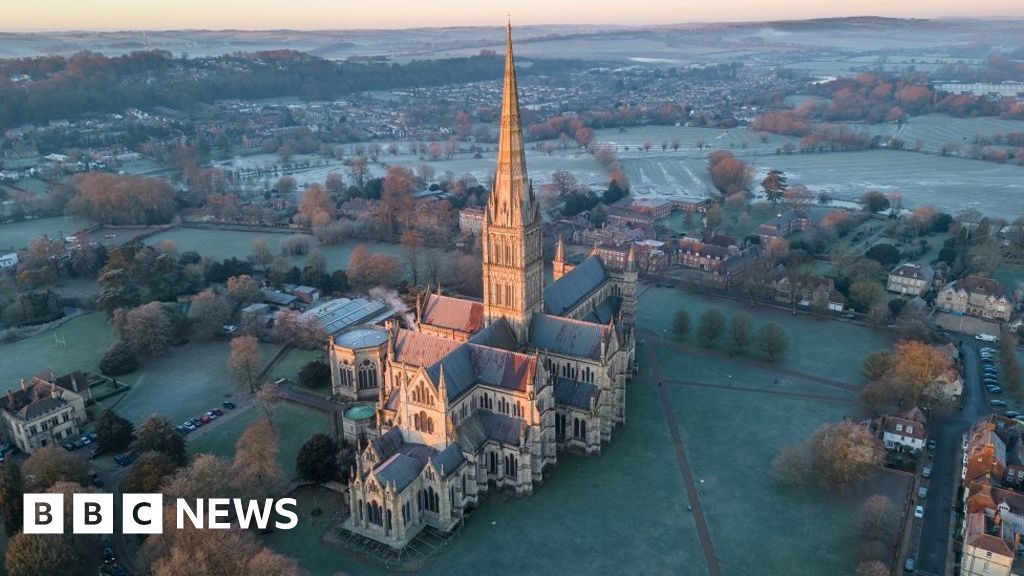

For those not on Apple:

✨St. Mary Ashwell✨
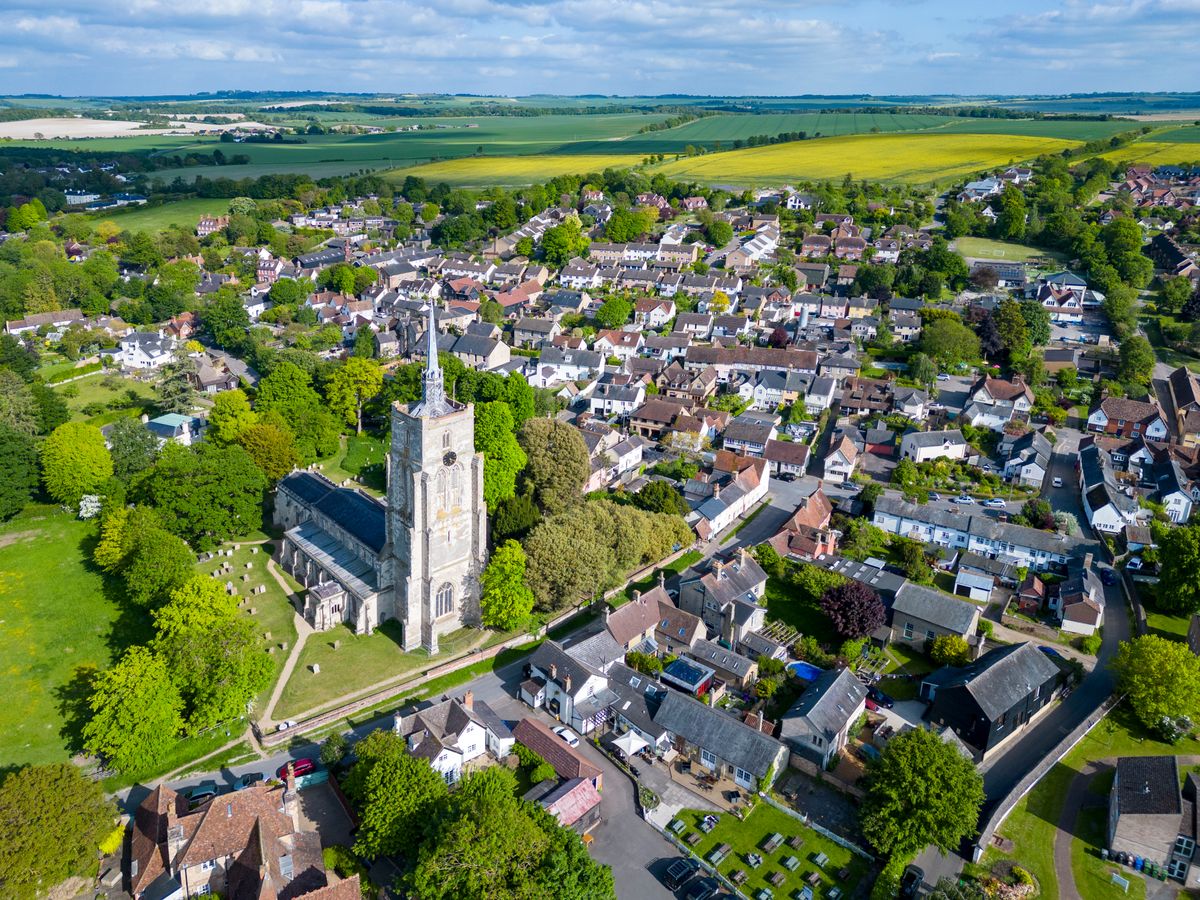
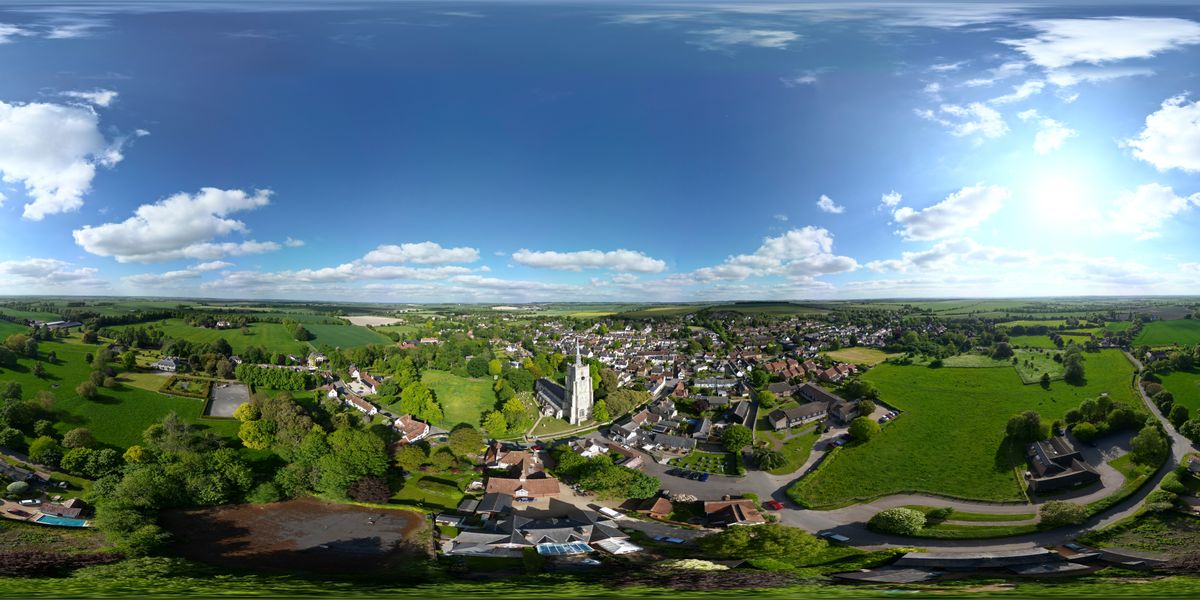
New Member Posts

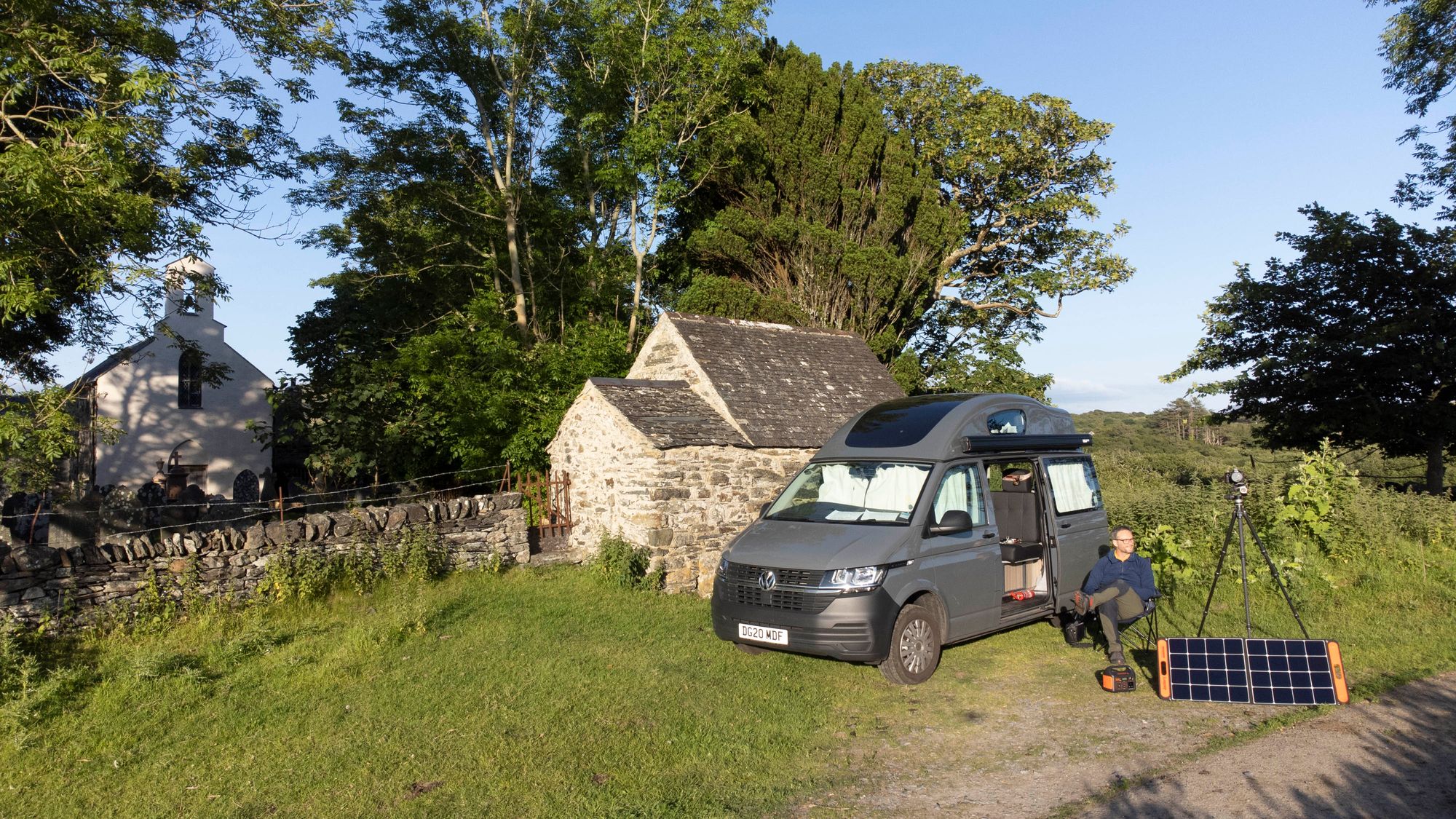
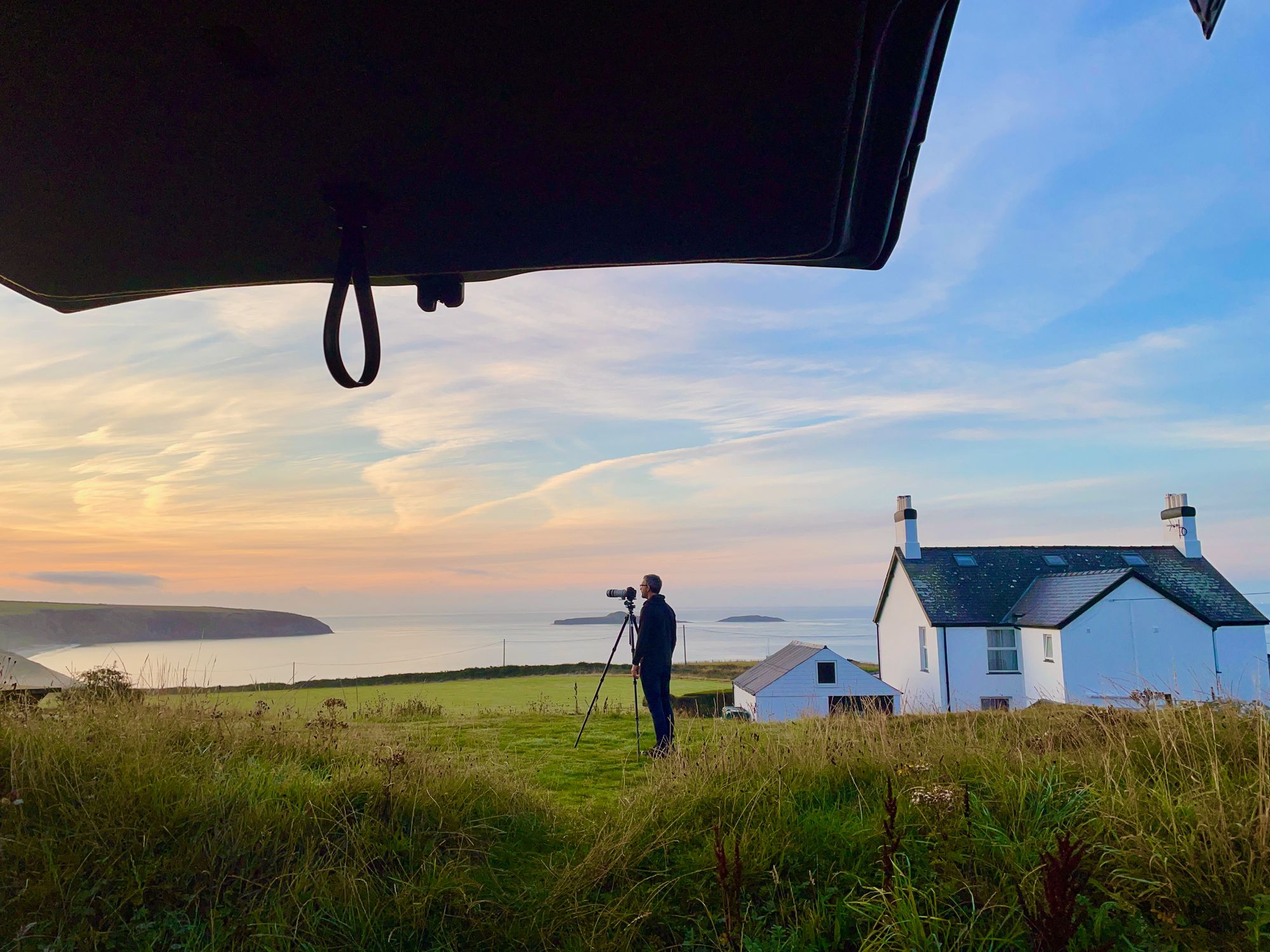
Recent Digest Sponsors:
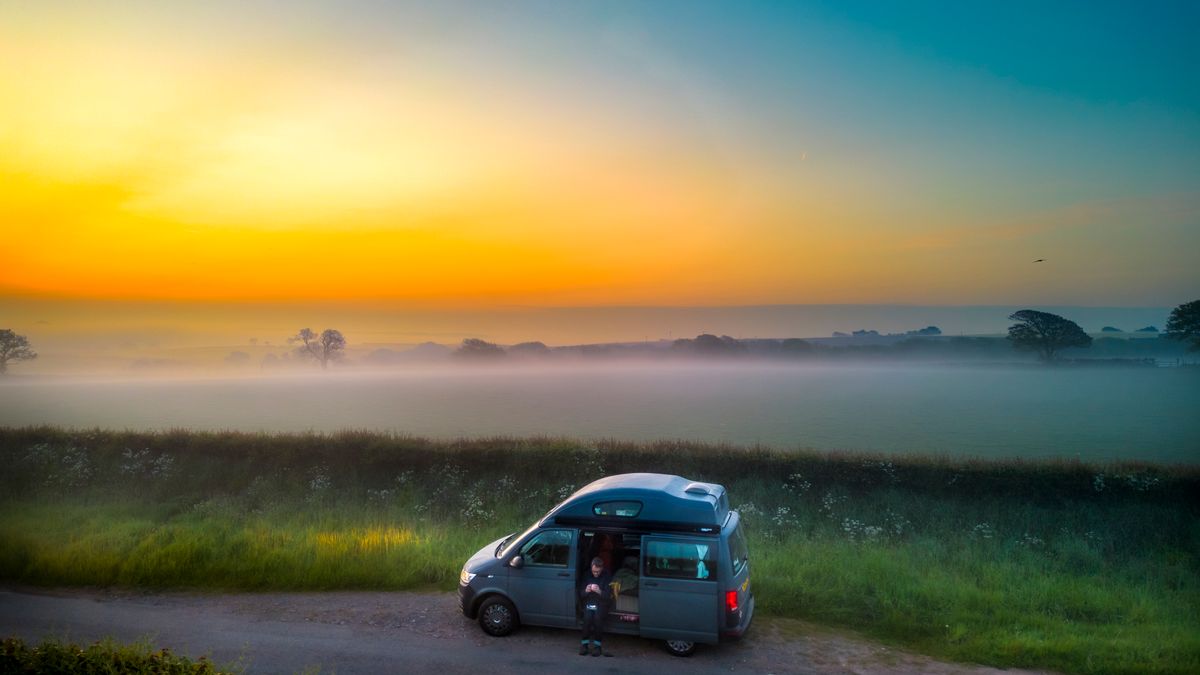
Every church I photograph I leave the same signature and text; but at Ayshford, after cutting myself accidentally, I left a little more than was intentioned.
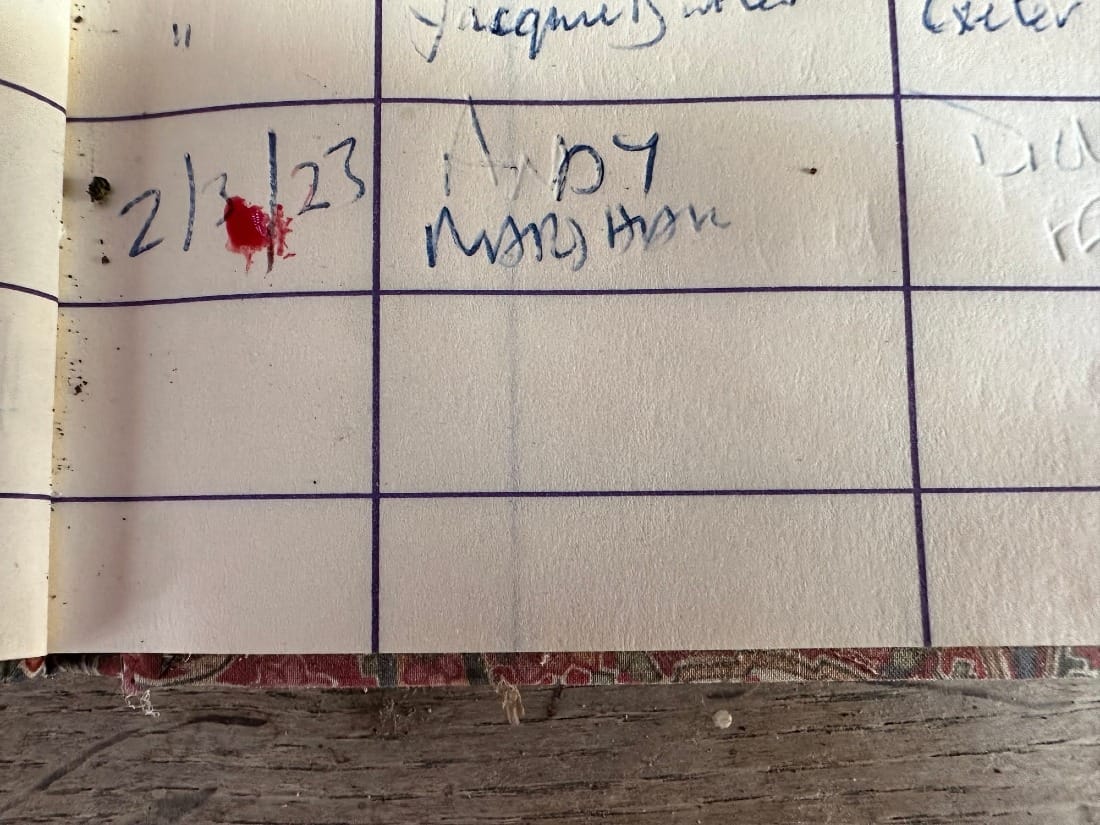
I put my heart and soul into the Genius Loci Digest and it takes a day a week to produce. With your support, I’m able to keep this digest free and public facing. 📸🏛🚐
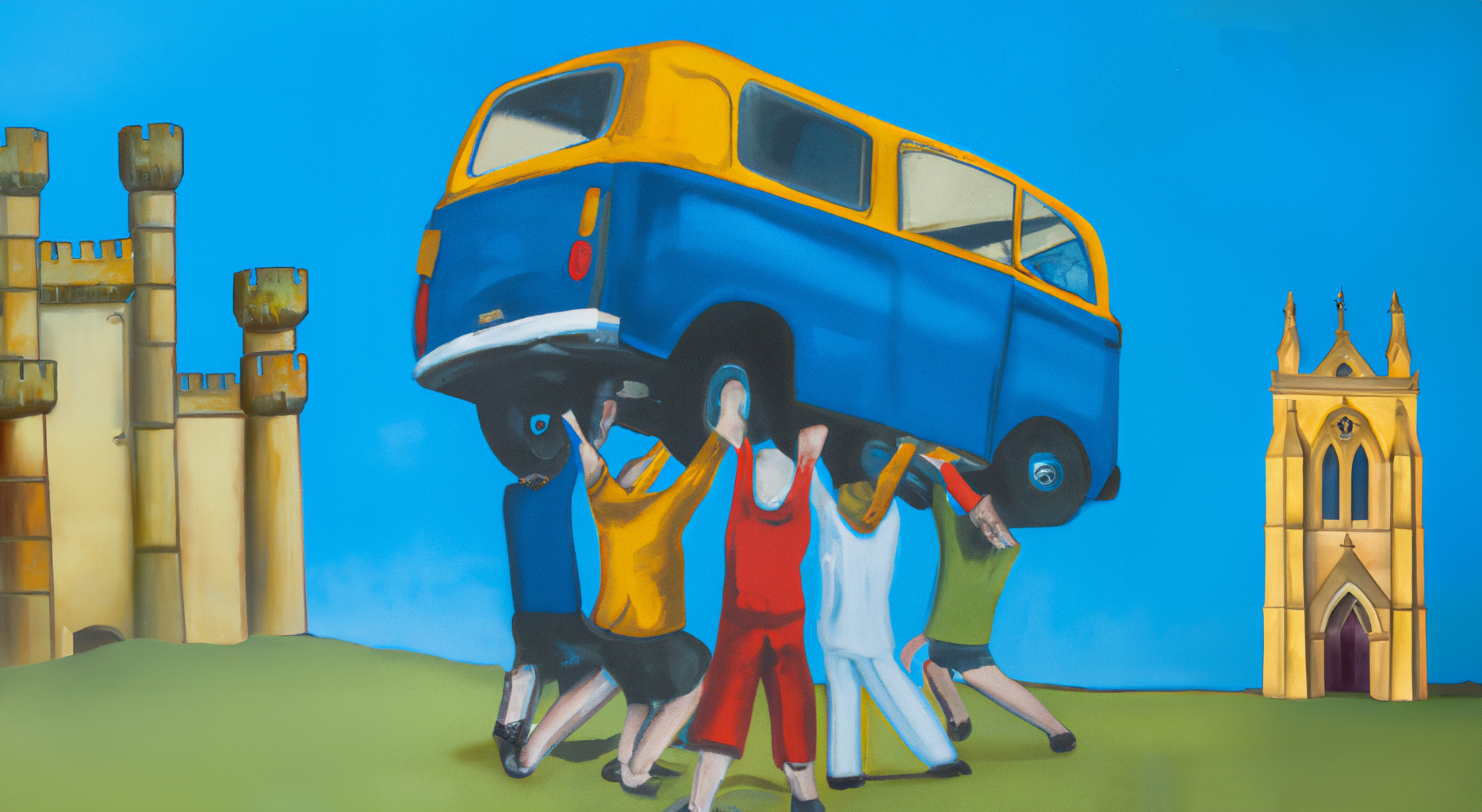
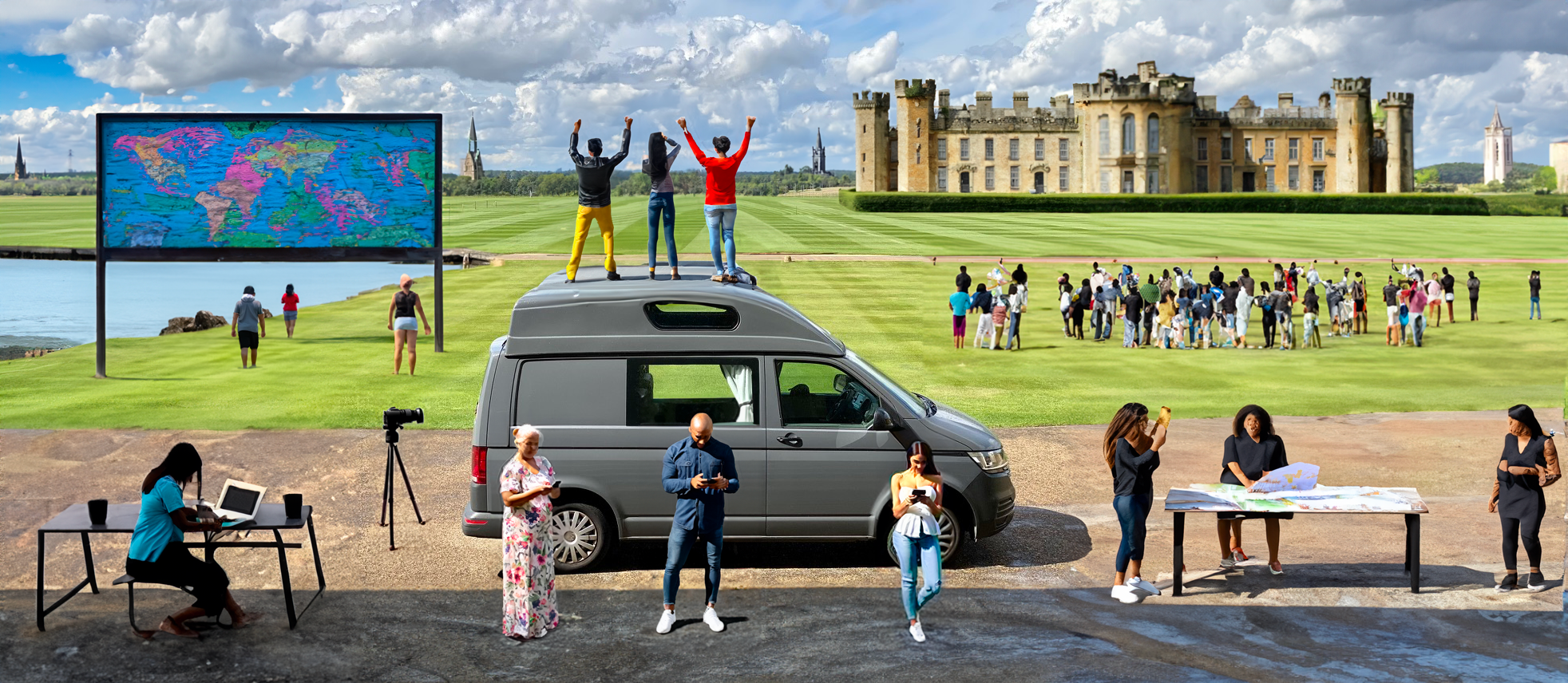
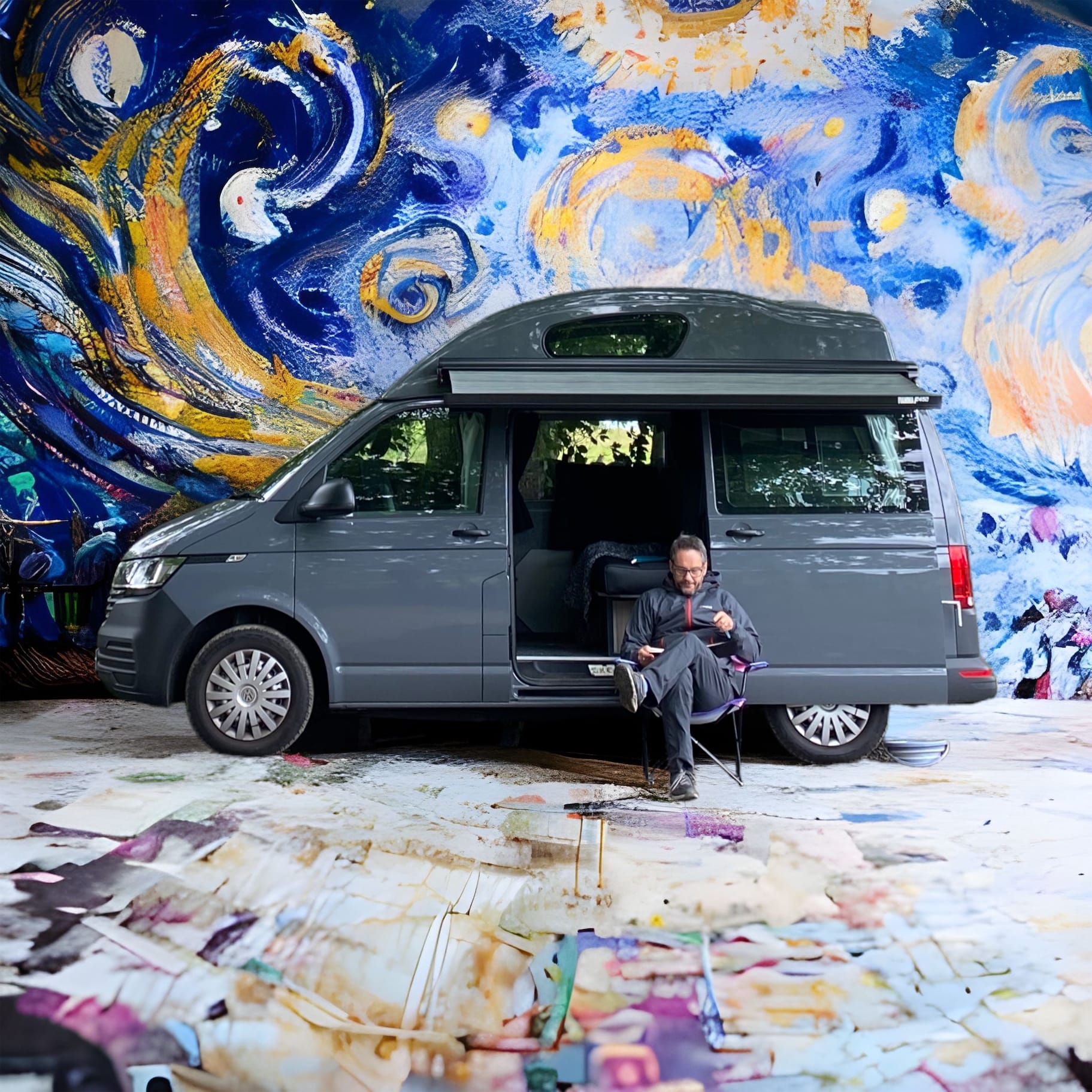
Sponsor a Membership and get your own landing page on the Digest
More information hereThank You!
Photographs and words by Andy Marshall (unless otherwise stated). Most photographs are taken with Iphone 14 Pro and DJI Mini 3 Pro.



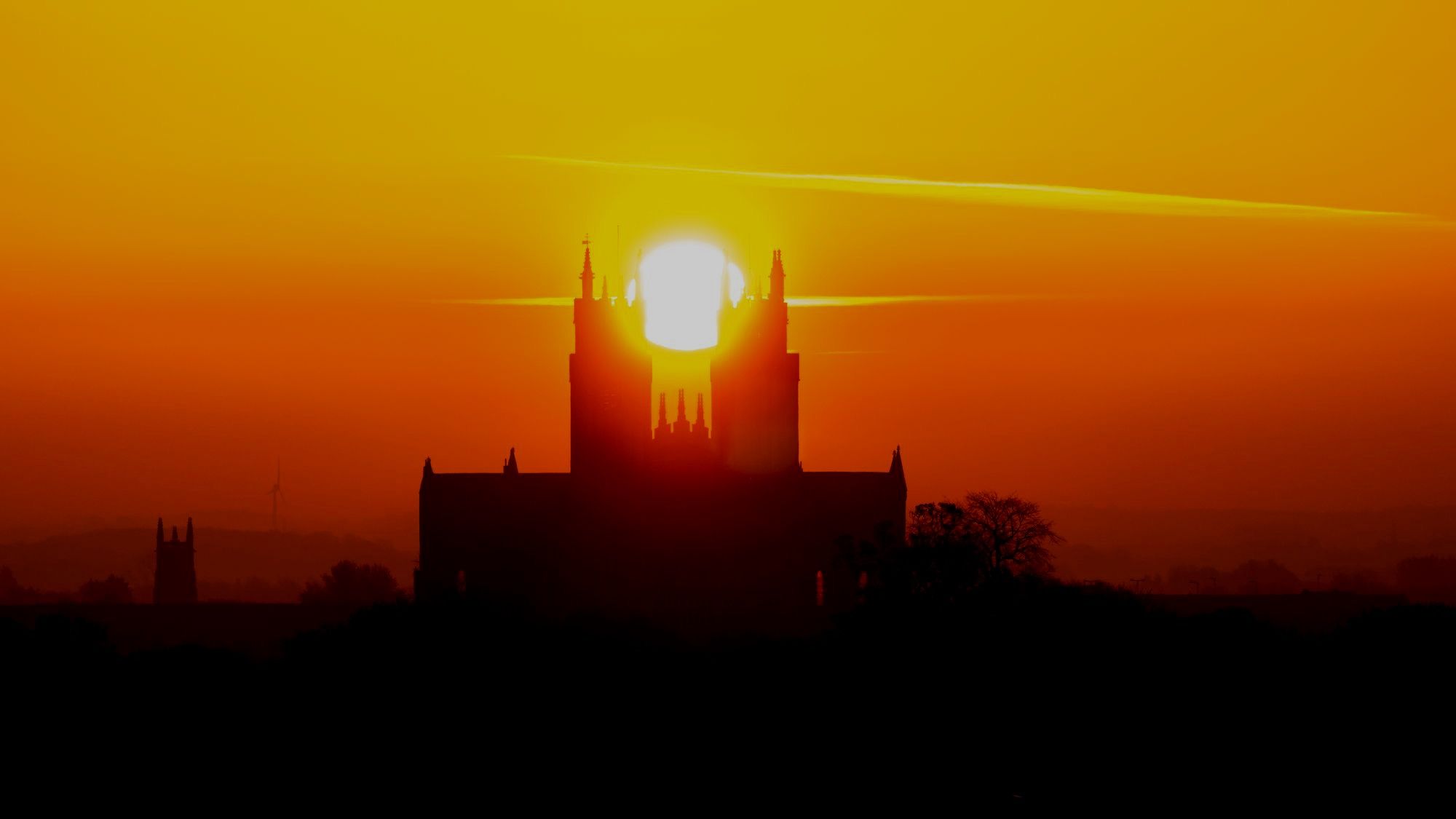









Member discussion